

Palace, lawmakers vow budget reform
By Samuel P. Medenilla & Jovee Marie N. dela Cruz
PRESIDENT Ferdinand Marcos Jr. gave assurances on Monday that no public funds will be “lost, misplaced or stolen” in the proposed national budget for 2026 and succeeding years as he keeps a closer watch on its preparation in Congress.
While he recognized the constitutional power of lawmakers to pass the legislated national budget, the chief executive said the Executive Branch of the government also has a crucial role in its crafting through the National Expenditure Program (NEP).
“Our job is to provide a plan

have low consumer confidence, according to BMI, a Fitch Solutions Company.
NOT TOTALLY
By Joel R. San Juan @jrsanjuan1573
THE Supreme Court has clarified that businesses registered with the Philippine Economic Zone Authority (Peza) are not completely exempt from paying Value-Added Tax (VAT).
In a 14-page ruling penned by Associate Justice Japar Dimaampao, the Court’s Third Division also held that the VAT exemption of Peza-registered companies would depend on whether the cross-border doc-
trine and destination principle apply.
The cross-border principle provides that no VAT is charged on goods or services intended for use outside the country of the taxing authority. However, if the goods are used outside the ecozone but still within the Philippines, the cross-border principle does not apply.
Instead, the destination principle applies, which states that goods are taxed in the country where they are consumed.
“Indeed, the situs of VAT is

and ask Congress for funding so that we can do every [project] we want to do. And people’s money is not lost, wasted, or stolen. That’s all we’re after,” Marcos said in Filipino in the third episode of his video blog, which was released last Monday.
Several lawmakers, including Senate President Francis “Chiz” Escudero, opposed Marcos Jr.’s statement in his fourth State of the Nation Address (Sona) last week, that he is open to vetoing the entirety of the proposed 2026 General Appropriations Act (GAA) and use a reenacted budget instead if its provisions are not aligned with the priorities of his administration.
The Makabayan bloc at the House said Marcos Jr.’s pronouncement is an attempt by the President to usurp the “power of the purse” of Congress. Marcos also vetoed P200 billion in unprogrammed appropriations of the 2025 budget, which he attributed to unauthorized insertions from some lawmakers, leaving some of the priority initiatives of his administration without any budget or underfunded.
Some of the insertions, he said, would have been funded through loans.
SBy Andrea E. San Juan @andreasanjuan
HIPPING rates to the United States are seen to continue rising for Philippine traders in August, especially for air freight, on the back of the frontloading of exports ahead of the implementation of the US tariffs, the typhoon season, and the last-quarter holidays, according to the report published by Dimerco, a global logistics service provider.
“With a 19-percent US tariff on Philippine goods taking effect soon, shippers are rushing to export before the deadline, which is driving up rates to the US,” Dimerco noted in its report.
The report showed that air freight rates for Philippine ship -
ments bound for the United States will continue to increase this month.
Meanwhile, capacity is on an upturn, meaning, market is picking up but demand of space can still be met by current supply.
Air freight rates to Asia and Europe, however, remain stable in August. For Philippine shipments bound for Asia, capacity is soft, meaning supply is more than demand while capacity for shipments bound for Europe is on an upturn.
As for ocean freight rates, the logistics firm noted that rates are seen to remain stable in August, but it warned that importers may already start stocking up for the holiday season from September to December.
The report added: “Vessel delays
“We need to bring that back because foreign-assisted projects are important. And then it also ruins our reputation [if those are left unfunded],” Marcos said.
Marcos has approved the proposed P6.793-trillion 2026 NEP, which is higher than the P6.326trillion 2025 GAA.
House reforms budget process THE House, meanwhile, is set to implement wide-ranging reforms in the national budget process, beginning with the abolition of the so-called “small committee,”
Marcos also pointed out that the 2025 budget caused “reputational” damage to the Philippines since Congress removed most of the funds for some foreign-assisted projects, which he did not disclose.



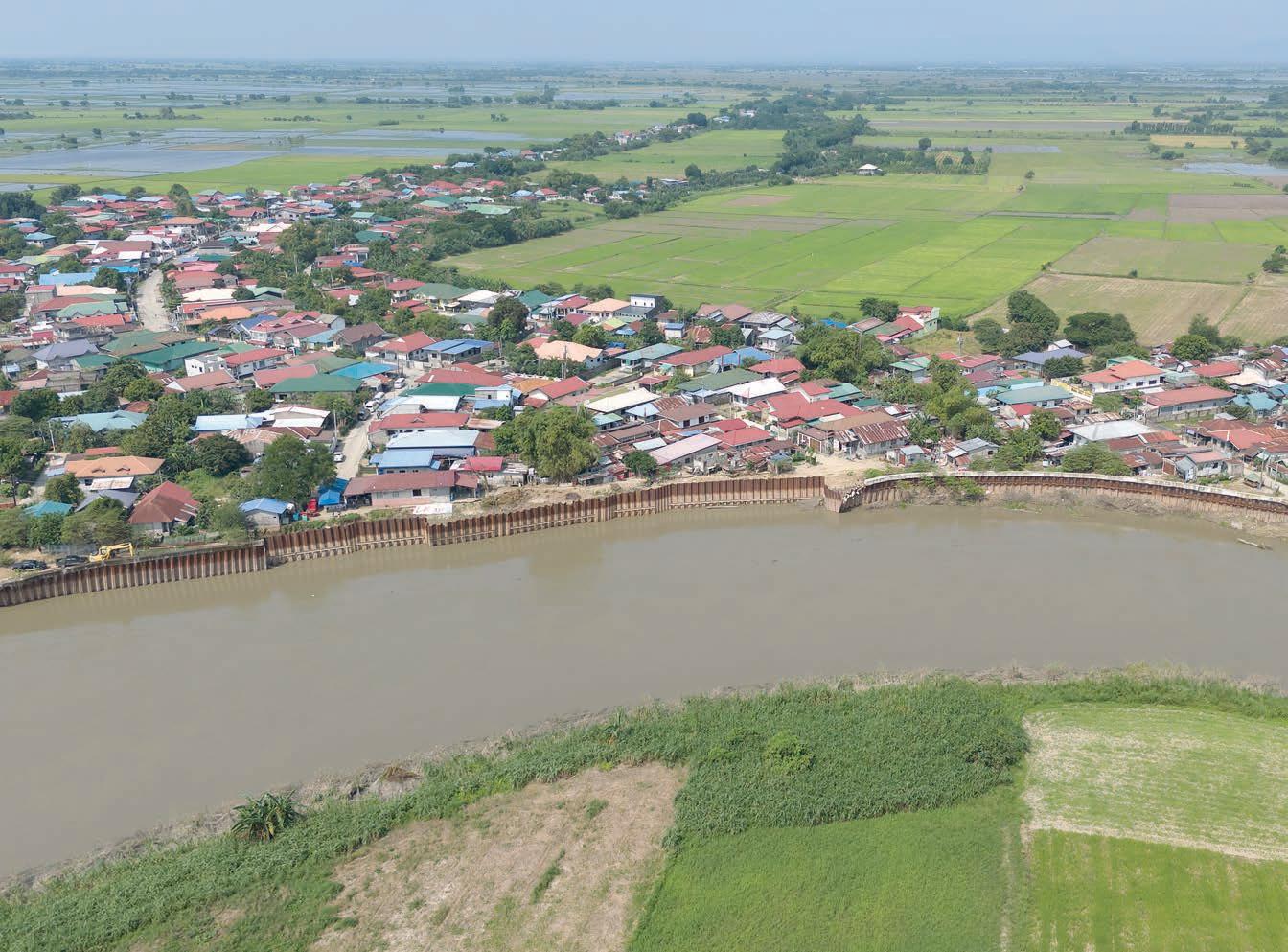
or rerouting may occur during this period due to the ongoing typhoon season.”
The global logistics firm also pointed out that the monsoon season may disrupt Asia supply chains.
“Heavy rainfall in regions like South Korea, the Philippines and Vietnam is disrupting logistics operations,” the Dimerco report noted.
As such, delays in flights, port handling and trucking are expected.
With this, the global logistics firm said shippers should improve cargo protection to avoid water damage, as well as to maintain close coordination with local partners.
“Disruption risk remains high throughout August as extreme
weather patterns continue across the region,” the report noted.
Kathy Liu, VP for Global Sales and Marketing at Dimerco Express Group explained that with the updated US tariffs set to take effect,
“Shippers are unsure how to plan their shipping schedules.”
“This is especially true for key manufacturing and transit hubs such as Singapore, India, Taiwan, and China, where final tariff announcements are still pending,” added Liu.
At the same time, she noted that August is peak typhoon season in South China, Hong Kong, Taiwan and the Philippines, which may cause delays and flight rescheduling in these areas.
Explaining the ocean freight
DOE consults stakeholders on capacity…
energy when needed. That’s the best way to describe the general framework,” said Atty. Anne Estorco-Montelibano, Pippa President-Executive Director.
Dr. Fernando Aldaba, a professor of Economics and Board Trustee at the Ateneo de Manila University and a former board member of the Independent Electricity Market Operator of the Philippines (Iemop) , said implementing a capacity market will require institutional, regulatory, and operational adjustments.
For one, the Energy Regulatory Commission (ERC), he said, will craft a legal and regulatory framework that clearly defines market roles and penalty mechanisms for non-performance. These rules, he added, must strike a balance between long-term resource adequacy and avoiding overprocurement that can inflate consumer costs.
“Establishing a functioning capacity market would also require significant upgrades to the Wholesale Electricity Spot Market infrastructure, enhanced capabilities for Iemop, and close coordination between the DOE, ERC, and other stakeholders,” he said.
Meralco, meanwhile, proposed that DOE study the possibility of extending incentives to the distribution sector as well. “We expressed support to DOE’s goal of improving reliability and shared that DOE may study the interruption frequency and duration reports that DUs [distribution utilities] submit to the ERC. To holistically address service quality, we suggested that investments in DU systems be incentivized, similar to how generation investments will be incentivized via the proposed capacity market,” said Meralco utility economics head Lawrence Fernandez. Lenie Lectura
Flood-control projects face 26% budget cut next year
By Reine Juvierre S. Alberto
PAMPANGA—Despite
the persistent widespread flooding across the country, flood control projects are likely to receive a budget cut in 2026, according to the Department of Budget and Management (DBM).
After inspecting some still submerged portions of the Apalit-Macabebe Road in Pampanga on Monday, Budget Secretary Amenah F. Pangandaman said this year’s budget for flood control projects stands at P346.6 billion, under the 2025 General Appropriations Act (GAA).
The proposed budget for flood control projects for next year, however, is lowered to P274.9 billion—a 26.08-percent reduction from this year’s allocation. This includes the flood control and management-related funds for both the Department of Public Works and Highways (DPWH) and Metro Manila Development Authority for 2026.
The funding proposal was lower due to the removal of insertions in the budget, the DBM explained.
However, Pangandaman told reporters that the budget for flood control projects could still be increased since these provide long-term benefits compared to financial assistance programs.
“Maybe we can add more, but it needs to be identified, and there needs to be a proper planning. It’s hard if there’s no plan,” Pangandaman said.
The Budget secretary herself, as instructed by the President, inspected the flooded areas of Apalit-Macabebe Road from Colgante to San Vicente and the rehabilitation of eroded river bank in Barangay Candating in Arayat.
To solve the flood problem in Apalit, Pangandaman directed DPWH’s regional and district directors to realign their budget to immediately fix portions of the Apalit-Macabebe Road.

“If we don’t plan properly, we will make a mistake in implementing the country’s funds. I just learned here that we have funds in other places that are already available but it’s not needed,” Pangandaman said.
The repair comes with a cost of P166 million for the Apalit-Macabebe Road, while P389 million is needed to fix portions in San Simon, Minalin and Santo Tomas in Pampanga.
“There are a lot of people neglecting their jobs. We don’t know the reason, but there are a lot of people neglecting,” Pangandaman said. The Budget chief appealed top officials to use wisely the money in the 2025 budget. “Konting malasakit naman [Give a little care],” she said.
For frontline agencies, Pangandaman said they can tap the Quick Response Fund (QRF) to provide support to communities stricken by calamities.
Just this July, the DBM released a total of P1.625 billion to the Department of Social Welfare and Development (DSWD) and DPWH.
For the DSWD, P625 million has been released to replenish their FY 2025 QRF and to procure family food packs and non-food items for the stockpiling of relief resources.
Meanwhile, P1 billion has been released to the DPWH to cover the second replenishment of its builtin QRF.
Concerned agencies may request replenishment from the DBM when the balance of the QRF has reached 50 percent.
Dimerco warned traders that the second half of 2025 remains challenging for ocean freight due to ongoing geopolitical risks and policy uncertainty.
market, Dimerco said the ocean shipping landscape remains “unstable” due to trade tensions and changing demand.
“Blank sailings rose in July and August, especially on Asia to US routes, as carriers try to manage excess capacity,” the Dimerco report said.
Earlier, Dimerco noted, demand spiked as companies rushed shipments before the US tariff deadline, but it has since weakened, causing rates to drop.
Although the US extended its tariff pause with China until August 12, the logistics firm said many shippers had already frontloaded goods, limiting July volumes.
“To stabilize the market, carriers plan to cut service capacity from Asia to the US by 6.2 percent in August,” the Dimerco report noted.
With this, the global logistics firm advised shippers to stay flexible, as more schedule changes and capacity shifts are expected.
The logistics firm also noted that tensions between Israel and Iran have eased slightly with a fragile ceasefire,” but risks of renewed conflict keep freight rates elevated.
At the same time, Houthi attacks in the Red Sea have resumed, forcing vessels to reroute around Africa, which increases transit times and strains vessel availability.
Alvin Fuh, Vice President for Ocean Freight of Dimerco Express Group, said shippers should stay flexible and prepare for continued disruptions as unclear tariff policies are causing “unpredictable” shipping and sourcing patterns in the US.
Fuh further explained that although a temporary tariff pause has helped in the short term, higher tariffs are expected in August.
“This is leading to rushed shipments now but may result in reduced trade and higher costs later,” added the Dimerco official.
considered zero-rated, making it ineligible for a VAT refund.
Coral Bay then appealed the CTA en banc’s ruling before the SC, which ruled in its favor.
determined by where goods are consumed or where services are rendered,” the Court pointed out.
Furthermore, the SC pointed out that if Peza-registered companies could enjoy VAT zero-rating on any of its purchases, regardless of whether the goods are consumed or services are rendered outside of the ecozone, “it would be subject to abuse.”
The SC made the pronouncements in its decision which resolves the legal issues surrounding the claim for a VAT refund of Coral Bay Nickel Corporation, a Pezaregistered domestic company that manufactures and exports nickel and cobalt mixed sulfide.
On November 28, 2013, Coral Bay filed an administrative claim for refund with the Bureau of Internal Revenue for its unutilized input VAT for calendar year 2012 in the amount of P22.5 million.
Due to the BIR’s failure to act on its refund claim, the company decided bring the case to the Court of Tax Appeals (CTA).
The CTA’s Third Division granted the refund of input VAT in the reduced amount of P11.8 million which only covers purchases proven to be consumed outside the ecozone.
However, the CTA en banc reversed the ruling and declared Coral Bay as fully exempt from VAT; thus, its purchases were
Nonetheless, BMI said, household spending is expected to grow by 6 percent year on year. In real terms using 2010 prices, this means household spending could reach P13.9 trillion. BMI said consumer confidence stood at minus 14 in the second quarter of 2025, the weakest reading since the third quarter of 2024.
“Consumer confidence in the Philippines remains sluggish, although the market has continued to recover from the pandemic years when consumer confidence registered at minus 54.5,” BMI said.
“The recent weakness in consumer sentiment is driven by pessimism over the Philippines’s economic condition and consumers’ personal family financial situation,” it added. In terms of private final consumption expenditure, BMI said this will likely post a growth of 4.8 percent this year, slightly faster than the 4.78-percent growth seen in 2024. This will be driven by slower inflation of 2.2 percent in 2025 and a weaker peso that is expected to average P58 to the US dollar in 2025. The weaker currency, BMI said, will also help lead to relative stability in import inflation. The country’s real GDP is expected to grow by 5.4 percent this year and 6.7 percent in 2026.
“The weaker rate in 2025 is due to the combination of a higher expected consumer price index in the Philippines as well as the US Federal Reserve [Fed]’s hawkish tilt,” BMI said.
“While persistent intervention by the BSP in the forex market will help to curb depreciatory pressures on the peso, earlier rate cuts by the BSP relative to the Fed will continue to weigh on the currency,” it added.
Meanwhile, BMI said Filipinos purchasing power will be supported by easing inflation and wages. This will increase Pinoy’s disposable incomes until 2029.
BMI said taking into consideration average inflation over the medium term through to 2029 at 2.8 percent year on year, Filipinos’ real earnings will grow by an average of 4.8 percent year on year in real terms. In terms of purchasing power, BMI said, this is expected to grow by 12.5 percent in 2025 compared to the 2019 level. The growth of purchasing power is expected to continue until 2029.
“This dynamic will be the key driver behind our consumer spending forecast for the Philippines over the year. The improving outlook over the medium term means that consumers will expand spending, leading to a growth in consumer spending and providing tailwinds to the growth of the Philippine retail sector in the latter half of 2025,” BMI said.
However, BMI said rising household debt remains a risk to their consumer outlook. It expects debt servicing costs to rise in response to increases in interest rates.
The SC noted that under Republic Act 7916, or the Special Economic Zone Act of 1995, as amended, Peza companies are exempt from national and local taxes, except for real property tax on land owned by developers.
Instead, all business enterprises within the ecozone pay a 5-percent tax on gross income.
However, the SC said this exemption does not include VAT.
“Applied to the present case, the CTA En Banc erred in treating Coral Bay as an absolutely VATexempt entity and declaring that its purchase of services outside of the ecozone should likewise be subject to zero-rating,” the SC explained.
“Having been consumed outside of the ecozone, the cross-border doctrine finds no application. The same could not have been deemed ‘exported’ to Coral Bay.
Having been rendered within the Philippines’ customs territory, it is naturally subject to national internal revenue laws such as VAT,” it added.
As to the actual refund amount, the Court reinstates the ruling and computation of the CTA Third that awarded Coral Bay the reduced refund amount of P 11.873,651 representing its unutilized input V A T attributable to its zero-rated sales for taxable year 2012.
BMI said many markets are expected to return to central bank terminal rates in 2025, but there is a risk that this will only be achieved over 2026. This means, debt servicing could remain elevated for a longer than expected.
“Should inflationary pressures accelerate, this could cause central banks to revert to a hawkish approach and return to rate hikes, thereby reigniting the burden of debt servicing costs,” BMI said.
Earlier, Bangko Sentral ng Pilipinas (BSP) said a rate cut is on the table in August as the dust cloud created by the imposition of higher tariffs by the United States has begun to clear.
(See: https://businessmirror.com. ph/2025/07/30/august-rate-cutseen-as-tariff-chaos-clears/).
BSP Governor Eli M. Remolona Jr. told reporters, however, that monetary authorities are still looking at a reduction of 50 basis points in interest rates in the second semester of 2025, believed to be delivered in two separate meetings of the Monetary Board. The country’s tariff negotiations with United States President Donald Trump resulted in only a 1-percentage-point reduction on the 20-percent duties on Philippines goods, which will take effect next month.
(See: https://businessmirror.com. ph/2025/07/23/marcos-1-percent-reduction-on-tariffs-imposed-by-us-significant-in-realterms/).
DILG opens app to monitor local projects
THE Department of the Interior and Local Government (DILG) on Monday called on the people to actively use SubayBAYAN, an online platform that allows the public to monitor the implementation of local infrastructure projects all over the country.
The agency said that this is inline with President Marcos’ call for greater transparency and accountability.
In his 2025 State of the Nation Address (Sona), the President stressed the need for the public to know where and how government funds are being spent, especially in projects like flood control.
“SubayBAYAN answers this call by providing real-time, accessible data on more than 80,000 projects funded through the Local Government Support Fund [LGSF], Support to Barangay Development Program [SBDP], Conditional Matching Grant to Provinces [CMGP], and Local Government Unit [LGU] initiatives,” the department in a statement said.
The platform features key project details including location, implementing local government or agency, budget, timelines, contractor, physical and financial progress, site photos, and geotagging.
As of now, it tracks over 34,000 LGU-funded and 50,000 nationally funded projects such as roads, bridges, water systems, multipurpose buildings, and evacuation centers.
With a built-in feedback system and full audit trail, SubayBAYAN allows users to report issues, monitor implementation, and promote citizen involvement in governance.
In 2024, the DILG’s Office of Project Development Services trained regional offices to strengthen SubayBAYAN’s use not just as a monitoring tool, but as a platform for participatory and accountable local governance.
In its statement, the department called on the people to visit https://subaybayan.dilg.gov.ph and take an active role in ensuring that every peso spent truly benefits the people. Rex Anthony Naval
Lawmakers file FOI bill
LAWMAKERS on Monday filed the proposed People’s Freedom of Information Act of 2025 to uphold the constitutional right of citizens to access information and promote full public disclosure in government.
In filing House Bill 2897, Liberal Party (LP) legislators reaffirmed their call for transparency, accountability, and honesty in public service.
“Current inconsistencies and lack of mandatory disclosure highlight the need for a legislated Freedom of Information [FOI] policy. This bill serves as a powerful tool against corruption, disinformation, and lack of transparency and accountability in government,” said Party-list Rep. Leila M. de Lima of Mamamayang Liberal, a principal author of the bill.
The FOI measure aims to finally codify into law the Filipino people’s right to access governmentheld information—an initiative that has failed to gain legislative traction since it was first introduced in the Eighth Congress by then-Rep. Raul Roco. Despite numerous refiled versions, no FOI law has been passed.
In 2016, then-President Rodrigo Duterte issued Executive Order 2 to enforce FOI, but its coverage was limited only to the Executive Branch and lacked sufficient enforcement mechanisms.
Under HB 2897, all Filipino citizens will have the legal right, upon request, to access records in the custody of any government agency. It also obliges public offices and officials to disclose records involving official acts, decisions, transactions, and publicly funded research that forms the basis of policies. However, access may be denied in certain instances involving sensitive or protected information. These include matters related to national security, foreign affairs,
internal and external defense, law enforcement, or trade secrets.
Confidential records reflecting the Chief Executive’s policy discussions and decisions are also exempt. Access may likewise be restricted for sensitive information concerning Overseas Filipino Workers (OFWs), particularly those involving legal or family matters, as well as diplomatic and consular records that could compromise the safety of foreign representatives. Information covered by international treaties or bilateral agreements, records from executive sessions of Congress or its committees, premature or draft documents, and privileged communications as defined by the Rules of Court are also excluded. Lastly, any information that may infringe upon personal privacy or is protected under the Data Privacy Act of 2012 (RA 10173) cannot be disclosed.
To ensure transparency in implementation, the bill also requires all government websites to include a matrix showing FOI requests, their status, and final decisions. Once information is released to one requester, it must be made publicly accessible. Noncompliance with the law will carry a penalty of imprisonment from one to six years and a fine ranging from P100,000 to P1 million.
“Honesty and accountability should be standard operating procedure in government. Public office is a public trust. Nothing should be hidden from the people, who are the true source of power in a democracy,” de Lima said in the bill’s explanatory note. The bill is co-authored by Reps. Edgar R. Erice of Caloocan City, Adrian Michael A. Amatong of Zamboanga del Norte, Arlene Bag-ao of Dinagat Islands, Jaime R. Fresnedi of Muntinlupa City, Cielo Krisel B. Lagman of Albay and Alfonso V. Umali Jr. of Oriental Mindoro. Jovee Marie N. dela Cruz
Legislator: Real transparency needed in failed infra projects
By Jovee Marie N. dela Cruz @joveemarie

WHILE they welcomed the Department of Budget and Management’s commitment to eliminate “ghost” or substandard infrastructure projects, particularly in the flood control program, lawmakers on Monday said that strong words must be backed by decisive action.
Party-list Rep. Leila M. de Lima of Mamamayang Liberal emphasized that accountability and transparency should not be limited to flood control initiatives but must apply to all government programs, projects, and policies.
“We welcome this pronouncement from Budget Secretary Amenah Pangandaman. But as I’ve said before, we must walk the talk.
There must be real accountability for failed projects that have caused widespread suffering to our fellow Filipinos,” de Lima said in a statement.
Earlier, Pangandaman said that no public funds should be wasted on “imaginary” or nonfunctional infrastructure, especially after habagat rains and three typhoons submerged large
parts of the country despite billions allocated for flood control.
Oust
AT the same time, Las Piñas Rep. Mark Anthony Santos called for the immediate removal of Department of Public Works and Highways District Engineer Isabelo Baleros of the Las Piñas–Muntinlupa District Engineering Office (LPM DEO), citing alleged involvement in irregular, multimillion-peso flood control and infrastructure projects.
In a separate statement, Santos accused Baleros of facilitating unauthorized fund transfers, pushing questionable project priorities, and ignoring coordination protocols with the local government.
“Infrastructure funds are meant to protect lives and property—not to be quietly moved around without accountability,” Santos said.
The revelations come in the wake of President Marcos’ Fourth State of the Nation Address (Sona),
where he slammed officials behind substandard or even “ghost” floodcontrol projects, especially after recent typhoons caused massive destruction across the country.
Central to the controversy is the P140-million C5 Diversion Road project in barangay Manuyo Dos—the largest single allocation from the P450.5-million infrastructure budget for Las Piñas this year. According to Santos, Baleros requested to transfer project implementation to the DPWH-NCR regional office on June 9, 2025, a move approved without consultation with city officials. He pointed out that no groundwork had begun on the C5 Diversion Road or the majority of the 27 infrastructure projects listed under the 2025 national budget before the transfer. The lawmaker revealed that he has formally demanded a written explanation from Baleros regarding the rapid transfer of project implementation to another agency. To date, Santos said, the district engineer has ignored the request.
Comelec to proceed with COC filing in October
By Justine Xyrah Garcia
THE Commission on Elections (Comelec) will push through with the filing of certificates of candidacy (COCs) for the Barangay and Sangguniang Kabataan Elections (BSKE) in October, even as President Marcos is expected to sign into law the measure postponing the polls.
Comelec Chairman George Erwin M. Garcia said the poll body will continue preparations, including the COC filing, in anticipation of possible legal questions before the Supreme Court and the potential issuance of a temporary restraining
order (TRO).
“We shouldn’t stop preparing just because it will be signed on August 12. In my view, no,” Garcia said in a chance interview on Monday.
He said that the filing of COCs will not go to waste even if the elections are deferred.
“Because what if a TRO is issued? Even if the elections proceed but there are no candidates, what happens then? It won’t be wasted. There’s no expense in filing COCs because it’s part of the process,” Garcia explained.
He also emphasized that the poll body remains neutral on the matter.
“We already expect someone to
go to the Supreme Court to question the legality of the law to be signed…On the part of Comelec, we have no side. We are not for or against it. That is at the discretion of the Executive and Legislative [branches],” he added.
Meanwhile, Garcia said the ongoing voter registration period has already drawn close to 200,000 new registrants nationwide, based on preliminary reports from the field.
The 10-day registration, which runs until August 10, aims to add at least one million voters to the roll.
“Whether it’s thousands or hundreds of thousands, it doesn’t matter to us. What matters is that we
reach fellow Filipinos who haven’t voted or registered. Everyone should be given the opportunity to register,” he said. Aside from new registrations, Comelec is also accepting applications for reactivation of records, transfer of registration (from overseas to local only), correction of entries, changes in name or civil status, reinstatement of names in the voter list, and updates for persons with disabilities, senior citizens, and members of indigenous peoples and cultural communities. Comelec expects around 70 million barangay voters and 25 million SK voters to participate in the elections once rescheduled.
Bishop urges Asian churches to lead ecological action
AFILIPINO
bishop has called on Catholic institutions across Asia to take bolder and more coordinated steps in addressing the worsening climate crisis, including divestment from extractive industries and stronger solidarity with vulnerable communities.
Bishop Gerardo Alminaza of the See of San Carlos in Negros Occidental issued the appeal during the second Laudato Si’ (Praise be to you) webinar organized by Radio Veritas Asia recently.
“We are not just reading statistics. We are living them,” Alminaza said, citing that seven of the ten most climate-vulnerable countries are in Asia, including the Philippines, Myanmar, Bangladesh, Pakistan and Thailand.
“Over 80 percent of disasters in Asia in the past two decades were climate-related,” he added.
Asia is warming at nearly twice the global average, exacerbating extreme weather events and placing growing pressure on the region’s economies, ecosystems, and communities, according to the World Meteorological Organization (WMO).
In its 2024 report, the WMO noted that the region’s average temperature last year was 1.04°C above the 1991 to 2020 baseline— making it either the warmest or second warmest year on record, depending on the dataset.
In a separate study, the Asian Development Bank (ADB) projected that under a high-emissions scenario, developing Asia could lose up to 17 percent of its gross domestic product (GDP) by 2070 and as much as 41 percent
QC congressman eyes more support for DRRM workers
AS the 20th Congress convened in the wake of successive destructive typhoons, a lawmaker called to strengthen the protection and welfare of frontline disaster responders by reintroducing a bill that institutionalizes support for Disaster Risk Reduction and Management (DRRM) workers.
Quezon City Rep. Patrick Michael Vargas filed House Bill 2268, or the proposed Magna Carta of Disaster Risk Reduction and Management Workers, to formally recognize the crucial role of DRRM personnel and provide them with the rights and benefits they deserve.
“Their lives are always on the line during calamities. They are the first to respond— so they should be the first we protect,” Vargas said.
A key provision in the measure ensures security of tenure and protection
against unjust dismissal or discrimination for disaster risk reduction and management (DRRM) workers. It also guarantees entitlement to hazard pay, night shift differential, and overtime compensation. In addition, the bill seeks to provide access to medical care, mental health
by 2100—if climate mitigation efforts remain insufficient.
Alminaza emphasized that recent climate events, ranging from heatwaves and flooding to mass displacement, demand not just personal change but institutional leadership, particularly from the Church.
He called for a more concrete action from Catholic institutions by rethinking their investments, curriculum, and community engagement.
In his presentation, Alminaza cited existing Church-led efforts in the region, including mangrove reforestation projects in Timor Leste, interfaith solar energy partnerships in India, and climate resilience programs spearheaded by the Catholic Church in Bangladesh.
In the Philippines, he noted the growing adoption of what he de -
services, and psychosocial support. DRRM workers will also be entitled to proper protective gear, continuous training, and capacity-building programs. Furthermore, the measure aims to establish improved and equitable working conditions for both regular and contractual personnel in the sector.
“DRRM workers are often first to respond and last to
scribed as “ecological conversion” on the ground, through campaigns such as the 10 Million Solar Rooftop Challenge, the Bamboo Forest Project, and the integration of the Laudato Si’ School Framework in Catholic education.
“These efforts show that ecological conversion is not just a concept, it’s a movement taking root in our communities,” he added. To scale these initiatives, Alminaza proposed the establishment of a Laudato Si’ Synodal Platform for Asia.
The platform, he said, would unite schools, parishes, and dioceses under a coordinated mission grounded in ancestral knowledge, ecological justice, and the principle of refusing to profit from harm.
“Let us become seeds of hope in a planet crying out for healing,” Alminaza said. Justine Xyrah Garcia
leave when calamities strike. They operate under extreme and hazardous conditions yet continue to be among the most undervalued in public service,” said Vargas. “The Magna Carta is long overdue—it is our obligation to protect those who protect us.” HB 2268 is currently pending before the House Committee on Disaster Resilience. Jovee Marie N. dela Cruz
A4
Tuesday, August 5, 2025
Economy Marcos eyes cheaper medicines from India
PRESIDENT Marcos said his state visit to India this week aims to provide the Philippines access to more affordable medicine and greater connectivity and food security through closer “strategic relationship” with the South Asian country.
The Chief Executive is set to hold bilateral talks with Indian Prime Minister Narendra Modi and other Indian officials on Tuesday to discuss economic, defense and security, political cooperation, trade, investment and economic cooperation, and people-to-people exchanges.
During the said meetings,
he will also discuss the shared regional and international interests of the Philippines and India such as compliance to international maritime law and the protection of the rights and welfare of seafarers.
Marcos said he hopes to secure concrete benefits for Filipinos and further strengthen ties with New Delhi during the trip from August 4 to 8.
“We intend to explore these potentials by charting a plan of cooperation across a broad spectrum of shared interests: from defense, trade, and investment, to health and pharmaceuticals,
connectivity, agriculture, tourism, and many others,” Marcos said in his departure statement at the Villamor Air Base in Pasay City on Monday morning.
“It is incumbent upon us, now more than ever, to maximize the opportunities in trade and investment with the world’s fourth largest economy,” he added.
Based on the latest government statistical data, India ranks 14th when it comes to major destinations for Philippine exports from January to June this year as the country sent US$100.92 million worth of goods to the South Asian country durng the period.
‘PEMC is not a GOCC’
TBy Lenie Lectura @llectura

HE Philippine Electricity Market Corporation (PEMC), the governing body of the Wholesale Electricity Market Operator of the Philippines (WESM), maintained that it is not a government-owned and -controlled corporation (GOCC).
In fact, it said in a statement, that the Governance Commission for GOCC (GCG) has officially excluded the PEMC from the coverage of Republic Act 10149 through Memorandum Order 2025-15, dated July 11, 2025.
“The decision formally recognizes significant changes in PEMC’s governance structure that have occurred since 2018, addressing regulatory concerns including previous issues with market fee [MF] approvals related to GOCC classification requirements,” PEMC said.
When asked how this affects the recent Court of Appeals (CA) decision which, among others, affirmed the 2020 order of the Energy Regulatory Commission (ERC) that disallowed some components of the PEMC’s proposed market transaction fees for 2015,
including an increase of honoraria for board of directors on the ground that PEMC is a GOCC, PEMC said, “the 2015 MF application that is subject of the CA decision is outside the covered period stated in the GCG Memo.”
“Nevertheless, the GOCC classification during the interim period is still being contested by PEMC and the motion for reconsideration [MR] is still pending with the CA,” it added.
PEMC’s MR was filed last July 25. It received the CA decision last July 10.
“PEMC remains firm with its position that it is as it has always been since its inception a private corporation. The GCG Memo will be submitted to ERC insofar as the pending applications that have yet been resolved after the transition,” PEMC replied via email.
According to the GCG Memo, PEMC ceased to function as a GOCC when the Independent Electricity Market Operator of the Philippines (IEMOP) replaced PEMC as the WESM operator on May 15, 2018. During this time, the secretary of the Department of Energy (DOE) stepped down as PEMC Board chairperson.
PEMC said this decision was supported by the Department of Justice (DOJ) opinion in 2022 which stated that “PEMC can no longer be classified as GOCC as it ceased to be owned or controlled by the government.”
The GCG has indicated that this exclusion will be subject to reevaluation should any changes in PEMC’s relevant circumstances occur, ensuring continued appropriate oversight of the corporation’s governance structure.
GCG is led by its chairperson, lawyer Marius Corpus. Its ex-officio members are Finance Secretary Ralph Recto, Budget Secretary Amenah Pangandaman, along with commissioners lawyers Briam Keith Hosaka and Bernadette Marie BernabeMartinez.
The WESM is a centralized venue for buyers and sellers to trade electricity as commodity when prices are determined based on actual use and availability. It was created pursuant to RA 9136 or the Electric Power Industry Reform Act of 2001.
The WESM began commercial operations in Luzon in June 2006, the Visayas in December 2010, and in Mindanao in January 2023.
Legislator eyes more MSMEs
THE newly elected chairperson of the Committee on Micro, Small, and Medium Enterprises (MSME) Development of the House of Representatives vowed on Monday to push for policies aimed at increasing the number of small businesses in the country to at least two million.
Occidental Mindoro Rep. Leody Tarriela, who now leads the panel, said this goal can be achieved through legislative measures that reduce barriers to entry and create a more enabling environment for small entrepreneurs.
As of 2023, he said there are 1,246,373 business enterprises operating in the country. Of these, 1,241,761, or 99.63 percent, are MSMEs. More than 90 percent, or
1,127,058, are micro enterprises.
“Over 99 percent of businesses in the country are MSMEs—from sari-sari stores and eateries to small factories. These enterprises are the main source of livelihood for most Filipinos and provide employment to 67 percent of our workforce,” said Tarriela. “They are the backbone of our economy. It is an honor to lead the committee that looks after their interests.”
“We can make it easier for MSMEs to operate by exempting micro enterprises from paying expensive business permit fees— or setting a minimal fee, such as P500. Processing should be completed within a day,” he proposed. He also suggested mandating more government procurement

During the same period, the Philippines imported US$140.94 million worth of goods from India.
The President said he will also push for more “institutional linkages and exchanges” not only with the Indian government, but also its private sector.
Marcos will lead a business delegation to New Delhi and Bangalore to meet with Indian business leaders, particularly those engaged in Information Technology, to explore investment opportunities.
The trip, Marcos said, was part of the year-long commemoration of the 75th Philippines-India dip -
Wage hikes in Calabarzon seen in October
By Justine Xyrah Garcia
FOLLOWING the recent P50 daily wage hike in Metro Manila, Region IV-A or Calabarzon (Cavite, Laguna, Batangas, Rizal and Quezon) could see similar wage adjustments as early as September.
National Wages and Productivity Commission (NWPC) Executive Director Maria Criselda R. Sy said on Monday that minimum wage earners in Calabarzon may benefit from an increase.
“Wage consultations in [Calabarzon] are provincebased, given the region’s vast coverage,” Sy explained in a text message.
“After consultations, a public hearing will be held, followed by a review before a final decision is made,” she added
The Regional Tripartite Wages and Productivity Board (RTWPB) IV-A announced that the first public consultation for the proposed wage adjustment will take place in Quezon province on August 5.
In September last year, wage adjustments were implemented across various sectors within the region.
from MSMEs and providing them spaces in large malls to expand their markets.
Tarriela called for a whole-ofgovernment approach to support MSME development. “Promoting tourism boosts accommodation and service industries. Investing in agriculture helps ensure food security. A stronger manufacturing sector leads to downstream industries and more employment,” he explained.
“With the right policies and a collaborative approach, we can build a more inclusive and dynamic economy. I hope my experiences from the private sector can help guide the committee in realizing this vision,” Tarriela said.
Under the Magna Carta for MSMEs (RA 6977, as amended), micro enterprises are defined as those with assets of P3 million and below; small enterprises hold assets from P3 million to under P15 million; and medium enterprises range from P15 million to P100 million. In terms of employment, micro businesses have fewer than 10 employees, small businesses have 10 to 99, and medium businesses have 100 to 199.
“We must create the environment for micro businesses to grow into small, then medium, and eventually large-scale enterprises. This will lead to industrialization, more job opportunities, and sustained economic development, especially in rural areas,” he added. Jovee Marie N. dela Cruz
lomatic relations, which started in November 2024.
Marcos left with First Lady Louise “Liza” A. Marcos, together with other members of the Philippine delegates at 10:44 a.m.
“I travel to India knowing that our commonalities will lead us to a deeper, broader, and more meaningful bilateral cooperation, in both the immediate and the longterm horizons, that will ultimately serve to promote peace, stability, and prosperity for our two nations and the wider Indo-Pacific region,” he said.
Prior to Marcos’ arrival at the Villamor Air Base for his flight to
India, members of the Presidential Security Command (PSC) and the Air Force (PAF) found and captured a python near the departure area. Lt. Gen. Arthur M. Cordura, Air Force commander, said the incident was not a cause for concern and that they will implement measures to prevent a similar incident from happening again.
Marcos assigned Executive Secretary Lucas P. Bersamin, Agrarian Reform Secretary Conrado M. Estrella III, and Education Secretary Juan M. Angara as caretakers of the government, while he is in India. Samuel P. Medenilla
Let’s support change: for the common
By Henry J. Schumacher
Understanding of ‘public interest’ and ‘political integrity’
POLITICAL integrity means exercising political power consistently in the public interest, independent from private interests, and not using power to maintain the office holder’s own wealth and position.
Understandings of ‘public interest’ are ever evolving and at times hotly debated. What is clear, is that political integrity is only possible when safeguards exist throughout the political process:
1. The process to elect, appoint or select those who hold power is free from the undue influence of vested interests.
2. That all stakeholders have inclusive, open and meaningful opportunities to equally influence decision-making.
Political decisions and power holders are subject to scrutiny by the public and institutional checks and face consequences for using power for private gain.
Undisclosed, unchecked, or undue influence over the powerful skews resources and policies away from the common good. It perpetuates inequality, undermines democracy and deprives people of their human rights.
These included nonagriculture, agriculture, and special economic zones, with wage increases varying by sector and town.
The adjustments included increases of up to P41 daily for workers in component cities.
This follows a P50 daily wage increase approved in Metro Manila in June.
The National Capital Region was the first to issue a wage order for 2025.
According to the IBON Foundation, a family of five in the Philippines needs at least P1,216 per day to maintain a decent standard of living as of June 2025.
I enjoyed the article of Ramon del Rosario in the Inquirer last week, saying “Our voices mattered—but more needs to be done.” His first paragraph supports my story: “The 2025 midterm elections in the Philippines may well be remembered not just for the winners they produced, but for the quiet, powerful wave of change that swept through polling precincts across the country. This is wave-powered by young, well-educated voters who showed up, spoke up, and reshaped the narrative of Philippine democracy.”
In my view, local governments and the Private Sector, including nongovernment organizations, need to work together.
good


Rightsizing—is it needed THE regulatory mania of the authorities can be excessive, and many rules are pointless and contradictory, and sometimes incomprehensible and obstructive. The following urgently needs to happen: Fundamental dismantling of bureaucratic obstacles, simplification of rules, automation/digitization of processes wherever possible.
Education Reform— investments in human capital are needed THE investment in human development is a strategy for economic recovery and inclusive growth. The private sector has started to cooperate with the Department of Education (DepEd) to specifically focus on technical training and “learning by doing.” Workforce skills are critical if the Philippines is to gain from its “demographic dividend”.
Exciting times with the need for change for the common good. There is no question about the willingness of the private sector to cooperate with the Administration and Congress to “imagineering” the future! Allow me to finish by again quoting Ramon del Rosario: “Now, the challenge is to keep the fire alive to accompany the youth who showed up this year. Democracy, after all, is a habit, one that is best be taught early, practiced often, and shared across generations.” The time for change is now; let’s work together for the common good. For comments, please contact me at hjschumacher59@ gmail.com
Oil companies hike prices anew
ANOTHER round of oil price increases takes effect this week.
Oil companies on Monday announced they will increase the price of gasoline by P1.90 per liter, diesel by P1.20 per liter, and kerosene by P1 per liter.
This is the fourth straight week of increase for both diesel and kerosene.
Seaoil, Jetti, Shell, Total, Unioil, Petron said they will implement the new pump
prices at 6:00 a.m. of August
5. Other oil companies are expected to follow suit. Cleanfuel, meanwhile, said it will adjust its prices at 4:01 p.m.
This week’s adjustment reflects the movement on prices of refined fuel products, freight and market premiums in the international market.
The Department of EnergyOil Industry Management Bureau (DOE-OIMB) earlier cited renewed concerns over supply
disruptions following US President Donald Trump’s sanction on Russia and Iranian oil, and improved economic activity after the US-EU trade deal as among the reasons that were factored into this week’s local pump price hikes. Last week, oil companies rolled back prices per liter of gasoline by P0.10, while diesel
COMP welcomes Fraser Institute’s 2024 survey of PHL mining
By Jonathan L. Mayuga @jonlmayuga

THE Chamber of Mines of the Philippines welcomes what it describes as the country’s significant rise in the Fraser Institute’s 2024 Annual Survey of Mining Companies, where the Philippines ranked 16th out of 82 jurisdictions in Investment Attractiveness and 25th in Policy Perception.
The country also placed 9th out of 58 highly endowed jurisdictions in Best Practices Mineral Potential, affirming the Philippines’ rich mineral endowment.
The Fraser Institute is a Canadian think tank known for its independent research on economic and public policy issues. Its Annual Survey of Mining Companies is an international standard for assessing the investment attractiveness and policy environment of mining jurisdictions. COMP chairman Michael Toledo said these improvements mark a dramatic leap from 2023, when the country ranked 72nd in Investment Attractiveness, 79th in Policy Perception, and 41st in Best Practices Mineral Potential.
“Under President Ferdinand R. Marcos Jr., the Philippine government has sent a clear and consistent message: responsible mining is welcome and needed as a catalyst for rural development and the clean energy transition,” Toledo said in a statement.
He said the remarkable improvement in the country’s investment attractiveness ranking shows that steady reforms under
the Marcos administration are paying off, especially in creating greater policy stability and making it easier to do business for responsible miners.
The whole-of-government approach on streamlining the permitting process for mining applications of the Anti-Red Tape Authority, Department of Finance, Department of Trade and Industry, Department of Environment and Natural Resources, Mines and Geosciences Bureau, National Commission on Indigenous Peoples and the Office of the Special Assistant to the President for Investment and Economic Affairs is starting to bear fruit.
Toledo said even better, the forthcoming Mining Fiscal Regime Bill promises to lock in even more predictability and strengthen the Philippines’ reputation as a reliable destination for long-term mineral investments.
“Importantly, these reforms were spearheaded and strongly advocated by the Chamber of Mines of the Philippines, in close coordination with the Office of the President and key agencies,” he said. “Encouraged by these results, we also recognize that more must be done to align policy with our immense mineral potential fully. We therefore reiterate our support for further reforms and commit to responsible resource development through our Towards Sustainable Mining initiative.”
Toledo said that with the continued government-industry collaboration, the Philippines can become a top-tier destination for responsible mineral investment.
Army assures family justice to be given to fallen trooper
By Rex Anthony Naval
THE Philippine Army (PA) on Monday assured the family of the rookie soldier, who died while undergoing his unit’s reception activity at Maguindanao del Norte, that justice will be provided for the untimely death of their loved one.
This was the assurance given by PA spokesperson Col. Louie Dema-ala to the family of Pvt. Charlie Patigayon, 22, who collapsed during the said event held at the headquarters of the 6th Infantry Battalion at Barangay Capiton, Datu Odin, of the abovementioned province. Patigayon was among several new recruits recently welcomed by senior military personnel.
“We assure Pvt. Patigayon’s family that the PA is committed to pursuing justice. Should the investigation confirm wrongdoing, those responsible will be held fully accountable
under the military justice system and all applicable laws,” Dema-ala said.
Reception rites are a series of exercises newly-reported soldiers are instructed to do while reporting to their units.
Patigayon succumbed the following day or on July 31. “In strict adherence to the AntiHazing Act of 2018, the PA upholds a zero-tolerance policy against any practices that endanger the safety and well-being of its personnel. The individuals involved in the incident have been immediately relieved of their duties and are currently under investigation,” Dema-ala said.
Two officers and 19 enlisted personnel were ordered relieved following the incident.
Meanwhile, Dema-ala said the PA is extending its deepest condolences to Patigayon’s family and is providing all necessary assistance and support to the bereaved loved ones.
DPWH points to RROW for delay of road flyover in Davao City
By Manuel T. Cayon @awimailbox

DAVAO CITY—The national government demurred from accusation that Malacanang’s withholding of funds caused the delay of the construction of a road flyover here, and pointed instead to the road right of way problem.
The Department of Public Works and Highways Region XI called the accusation a misinformation, saying that “as far as DPWH XI is concerned, the project has been fully funded since 2022 and the funds needed for the completion of the project have already been released.” It said civil works for the Maa-
DepEd strengthens anti-bullying rules to create safer learning environments
By Claudeth Mocon-Ciriaco @claudethmc3

TO ensure that schools provide the learners safe and peaceful environment, Education Secretary Juan Edgardo “Sonny” Angara on Monday signed the revised Implementing Rules and Regulations (IRR) of Republic Act No. 10627 or the Anti-Bullying Act of 2013.
“Ang eskuwela ay lugar ng pagkatuto, hindi ng pang-aapi. Wala dapat puwang ang bullying sa kahit anong sulok ng ating mga paaralan at lipunan ,” said Angara, who is also the principal author of Anti-Bullying Act when he was then a senator.
The move, Angara said, is in line with the aim of President
Ferdinand Marcos Jr. to make schools safe havens for learners.
With the signing of the Anti-Bullying IRR, all public and private basic education schools, including Community Learning Centers or CLCs and those granted authority and/or supervised by DepEd such as Philippine Schools Overseas and International Schools will implement the Standard Anti-Bullying Policy to be cascaded by DepEd Central Office.
Likewise, it delineates the roles and responsibilities per DepEd governance level, for learners, and for parents and parentsubstitutes; Creates the Learner Formation Officer role, who shall be tasked to be the initial contact
point for the resolution of bullying complaints and institutionalizes a referral system in bullying cases; Specifically provides for the Rules of Procedure in commencing and hearing of Actions (bullying complaints), including the necessary procedure and periods for appeal; Clarifies the mechanisms for handling bullying incidents.
“ Kailangan may kultura ng malasakit at respeto. At para mangyari ito, binibigyan natin ng malinaw na kapangyarihan at tungkulin ang mga guro, magulang, at school heads,” Angara said, adding that the policy does not only cover physical abuse but also include threat, cyberbullying, discrimination against gender or religion,
and other acts that will cause emotional or social exclusion, even without physical injury or harm.
“ Walang bata ang uunlad kung araw-araw siyang takot pumasok sa klase. Kaya itong polisiya ay hindi lang para sa disiplina, kundi para rin sa kalidad ng edukasyon .”
The DepEd said that they will still continue to focus on strengthening the Child Protection Committees (CPCs) at schools, and provide technical assistance to make sure that the mechanism is working.
This IRR will be published in the Official Gazette and will be distributed in the regional and division offices, the DepEd said.
House challenges Supreme Court on VP Sara impeachment ruling
By Jovee Marie N. Dela Cruz @joveemarie

THE House of Representatives has filed a motion for reconsideration before the Supreme Court, urging it to revisit its decision that invalidated the impeachment complaint against Vice President Sara Duterte and the ruling undermines the House’s exclusive constitutional mandate to initiate impeachment proceedings.
The motion, filed in connection with G.R. No. 278353, challenges the Court’s interpretation that effectively nullified the impeachment process initiated by 215 House members.
The House maintained that the Supreme Court ruling undermines its exclusive constitutional power to initiate impeachment proceedings, as enshrined in Article XI, Section 3(1) of the 1987 Constitution.
Speaker Ferdinand Martin G. Romualdez vowed to uphold the constitutional role of the House of Representatives in the face of a SC ruling that nullified the
impeachment case against Vice President Sara Duterte, saying the chamber would not remain silent in the face of a clear institutional overstep.
“This is not an act of defiance. It is an act of duty.” Romualdez, “We do not challenge the authority of the Court. We seek only to preserve the rightful role of the House—the voice of the people— in the process of accountability.”
Citing Article XI, Section 3(1) of the 1987 Constitution, the Speaker reiterated that the House alone holds the power to initiate impeachment cases. He warned that the Supreme Court’s ruling undermines this fundamental principle.
“That power is not shared, not subject to pre-approval, and not conditional,” Romualdez said. “Yet in G.R. No. 278353, the Supreme Court ruled otherwise— based on a misreading of facts and a retroactive imposition of new rules.”
Romualdez clarified that on February 5, 2025, the House validly transmitted to the Senate a verified impeachment complaint against Vice President Duterte.
The complaint, endorsed by more than one-third of all House Members, was elevated through plenary vote. The three earlier complaints filed in December 2024 were only archived after this transmittal.
“That sequence matters. It proves there was only one valid initiation, not four,” he added.
The High Court’s ruling, he added, also incorrectly interpreted the constitutional one-year bar on multiple impeachment attempts. Romualdez insisted only one complaint was initiated—the one endorsed by 215 lawmakers.
Another contentious point in the SC’s ruling was the finding that Duterte was denied due process because she was not furnished a copy of the complaint nor given a chance to respond before transmittal.
Romualdez countered that these are not constitutional requirements. “But nowhere in the Constitution is that required before transmittal. In fact, in all past impeachments, the trial—and the right to be heard—takes place in the Senate.”
“To invent new rules now and apply them retroactively is not just unfair. It is constitutionally suspect,” he said.
The Speaker also raised alarm over what he called a dangerous precedent: the judiciary crafting rules for how it may be impeached. He cautioned that such actions could undermine the principle of checks and balances enshrined in the Constitution.
“The Supreme Court is a coequal branch of government. Its wisdom is deep. Its authority is real. But its members—like the President and the Vice President— are also impeachable officers,” he added.
Romualdez clarified that the House is not questioning the Supreme Court’s authority outright but is seeking to prevent what he described as the erosion of the people’s constitutional right to demand accountability.
“To dissent is not to defy. To demand accountability is not to destabilize. To insist on constitutional integrity is not to weaken democracy, it is to strengthen it,” he said.
DA aims to amend Coconut Trust Fund Act for industry sustainability
TMagtuod flyover “are ongoing at 82.5 percent.”
A billboard has been erected at the southern approach of the flyover with the information written in the vernacular that “the delay of the project was caused by the harassment by the Marcos and Romualdez administration. The DPWH did not work on the road right of way, it withhold the budget and for the snail-paced work by its legal office.”
The DPWH said the 818-meter four-lane flyover has been mired in “minor” road right of way (RROW) concerns and involved only “a few” remaining projects and utilities, “majority of those have already been resolved while some are

By Ada Pelonia @adapelonia
HE Department of Agriculture (DA) is pushing for the amendment of the Coconut Farmers and Industry Trust Fund Act, citing its critical role in revitalizing the coconut sector.
Agriculture Secretary Francisco Tiu Laurel Jr. said such revisions to the law should allow the use of the trust for the replanting of coconuts, which will help sustain the industry.
“We must revise the law to focus the trust fund’s resources on the most critical needs—particularly replanting,” Laurel said. “Many of our coconut trees are senile. If we don’t replace them immediately, we risk losing the industry’s future.”
The DA explained that coconut trees over 50 years old produce
less than half the potential yield of younger trees, which stands at around 80 to 100 nuts a year.
“While the fruit-bearing capacity of older trees may be temporarily boosted with salt fertilization, replanting is the only long-term solution to sustain the viability of the coconut sector.”
The country’s coconut industry employs around 3 million farmers who work across 3.6 million hectares. With this, the Philippines is the world’s second-largest producer and exporter of the tropical fruit, trailing behind Indonesia.
However, the DA raised a concern that the sector is “underperforming” with only 134 processing plants operating and 60 oil mills remaining well below their combined capacity of 3.7 million metric tons (MMT) due to lower farm yields.
“These reforms are about more
than productivity—they’re about securing the livelihoods of millions of Filipino coconut farmers,” Laurel said.
The industry exports an average of $2 billion worth of crude and refined coconut oil, desiccated coconut, copra meal, and coconut water annually from about 14 to 15 billion nuts.
“If the Philippines could increase farm yield, it could ride the crest of the wave of increasing demand for coconut oil, particularly in Europe,” the DA said.
“Although the yearly targets are expected to be met, the current pace of planting still needs to be accelerated to assure the industry’s sustainability.”
For 2025, the government has allocated P1 billion for planting or replanting and P1.8 billion for fertilization.
To truly scale the effort, however, the DA said the P80-billion trust fund must be refocused toward high-impact programs that lift productivity and farmer incomes.
“The proposed amendment will allow greater flexibility to ensure a more responsive and adaptive approach to the evolving needs of coconut farmers and the industry.” Aside from massive and sustained replanting, Laurel noted that the trust fund’s amendment will allow the PCA to focus on providing drip irrigation, water impounding, fertilization, and farmers’ welfare.
For his part, PCA Administrator Dexter Buted said the agency has consulted with other agencies, farmer groups, and stakeholders to ensure that changes to the law reflect the sector’s growing needs.
Go supports call for swift implementation of Ligtas Pinoy Centers Act as mentioned in recent SONA
AS principal author and co-sponsor of Republic Act No. 12076, or the Ligtas Pinoy Centers Act, Senator Christopher “Bong” Go agreed with the call for the swift implementation of the law as mentioned in President Ferdinand R. Marcos Jr.’s fourth State of the Nation Address. RA 12076 mandates the construction of permanent evacuation centers in all municipalities and cities.
“Unahin na ng Department of Public Works and Highway itong pagpapatayo ng
evacuation centers. Batas naman po ito. Mandato po ito ng batas na maglalagay ng mga evacuation center sa bawat bayan sa buong bansa,” Go added. Sen. Go emphasized the vulnerability of the Philippines to climate change and natural hazards.
“Tinukoy ng Asian Development Bank ang Pilipinas bilang most disaster-prone sa Southeast Asia. Mula 2014 hanggang 2023, umabot na sa halos 43 milyong Pilipino ang naapektuhan ng mga kalamidad,” Go pointed out. Go further noted, “When a disaster strikes, the Filipinos, especially the underprivileged, suffer the most.” Go, popularly known as “Mr. Malasakit” because of his compassion for the disadvantaged and marginalized, recounted his personal experiences visiting disaster-stricken areas even before becoming a member of the Senate in 2019. “Sa kakaikot ko po sa buong bansa, nakita ko po tuwing
bagyo, baha, lindol, putok ng bulkan, nagagamit po ang eskwelahan, mga covered court, mga gym, at naantala po ang pag-aaral ng mga estudyante,” Go narrated. Sen. Go further shared, “Wala pong komportable at maayos na evacuation center. Ang iba ay nagkakasakit at iyung iba po ay nauulanan pa habang nandiyan ang bagyo,” Drawing from these personal experiences, the lawmaker, Go prioritized the provision of a clean, comfortable, and well-equipped evacuation centers with proper sanitation and medical supplies.
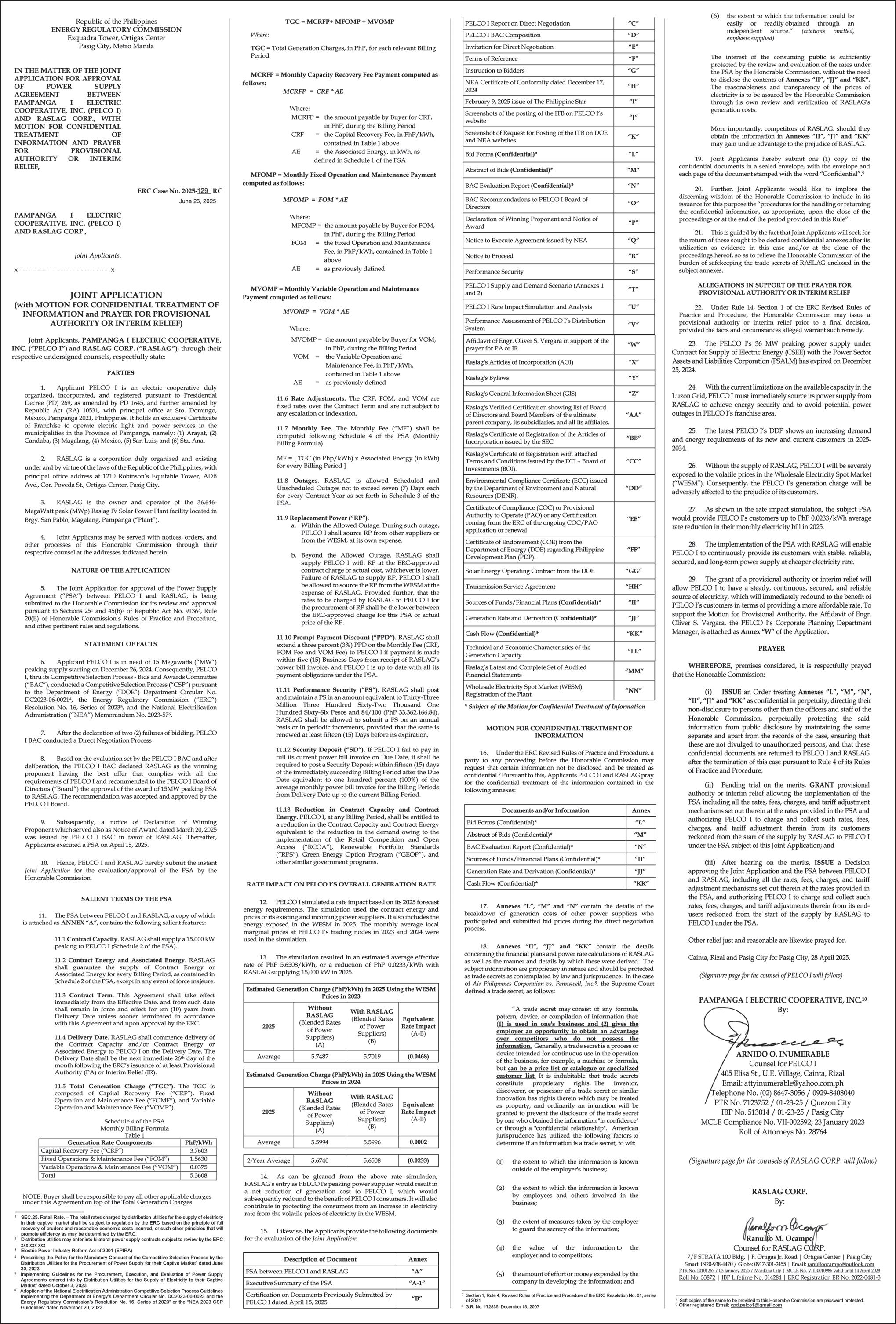

Editor: Angel R. Calso
Israeli minister prays at flashpoint holy site as officials say 33 aid-seekers killed in Gaza
By Wafaa Shurafa, Sam Metz & Samy Magdy The Associated Press
DEIR AL-BALAH, Gaza
Strip—A far-right Israe -
li minister visited and prayed at Jerusalem’s most sensitive holy site on Sunday, triggering regional condemnation and fears that the provocative move could further escalate tensions. The visit came as hospitals in Gaza said 33 more Palestinians seeking food aid were killed by Israeli fire.
With Israel facing global criticism over famine-like conditions in the besieged strip, Itamar BenGvir ‘s visit to the hillside compound threatened to further set back efforts by international mediators to halt Israel’s nearly twoyear military offensive in Gaza.
The area, which Jews call the Temple Mount, is the holiest site in Judaism and was home to the ancient biblical temples. Muslims call the site the Noble Sanctuary. Today it is home to the Al-Aqsa Mosque, the third-holiest site in Islam.
Visits to the site by Israeli officials are considered a provocation across the Muslim world and openly praying violates a longstanding status quo. Jews have been allowed to tour it but are barred from praying, with Israeli police and troops providing security. Israeli Prime Minister Benjamin Netanyahu’s office said after Ben-Gvir’s visit that Israel would not change the norms governing the site.
Ben-Gvir visited following Hamas’ release of videos showing two emaciated Israeli hostages. The videos caused an uproar in Israel and raised pressure on the government to reach a deal to bring home the remaining 50 hostages who were captured on October 7, 2023, in the Hamas-led attack that triggered the war.
Ben-Gvir called for Israel to annex the Gaza Strip and encourage Palestinians to leave, reviving rhetoric that has complicated negotiations to end the war. He raged against a video that Hamas released Saturday of 24-year-old hostage Evyatar David showing him emaciated in a dimly lit Gaza tunnel, and called it an attempt to pressure Israel.
Ben-Gvir’s previous visits to the site have prompted threats

from Palestinian militant groups. Clashes between Israeli security forces and Palestinian demonstrators in and around the site fueled an 11-day war with Hamas in 2021. Sunday’s visit was swiftly condemned as an incitement by Palestinian leaders as well as Jordan, the Al-Aqsa Mosque’s custodian, Saudi Arabia and Turkey. Houthi rebels in Yemen said they fired three drones at Israel; Israel’s military said a “suspicious aerial target launched from Yemen” was intercepted.
Videos of hungry and suffering Israeli hostages
THE videos—released by Hamas and Islamic Jihad, the secondlargest militant group in Gaza— triggered outrage across the Israeli political spectrum after the hostages, speaking under duress, described grim conditions and an urgent lack of food. Tens of thousands rallied in Tel Aviv on Saturday, calling on Israel and the United States to urgently pursue the hostages’ release after suspending ceasefire talks.
Israel’s mission to the—said it requested an emergency meeting of the—Security Council on the hostages, which will take place Tuesday.
“They do not want a deal,” Netanyahu said of Hamas. “They want to break us using these videos of horror.”
His office said it spoke with the Red Cross to seek help in providing the hostages with food and medical care. The International Committee of the Red Cross said it was “appalled by the harrowing videos” and called for access to the hostages.
Hamas’ military wing said it was ready to respond positively
to Red Cross requests to deliver food to hostages, if humanitarian corridors are opened in a “regular and permanent manner” in Gaza.
Right-wing politicians who oppose deals with Hamas said the videos reinforced their conviction that Hamas must be obliterated.
Deadly chaos around food distribution points
THE Palestinian Red Crescent Society said a staff member was killed when Israeli forces shelled its office. Israel’s military said it was reviewing the claim. The Red Cross called it an “outrage” that so many first responders have been killed in the war.
Hospital officials said Israeli forces killed at least 33 Palestinians seeking food Sunday, and witnesses described facing gunfire as hungry crowds surged toward aid sites.
Desperation has gripped the Palestinian territory of more than 2 million, which experts warn faces “a worst-case scenario of famine “ because of Israel’s blockade. No aid entered Gaza between March 2 and May 19, and aid has been limited since then.
Witness Yousef Abed described coming under indiscriminate fire and seeing at least three people bleeding on the ground.
“I couldn’t stop and help them because of the bullets,” he said.
Two hospitals in southern and central Gaza reported receiving bodies from routes leading to the Israeli-backed Gaza Humanitarian Foundation aid sites, including 11 killed in the Teina area while trying to reach a distribution point in Khan Younis.
Three Palestinian eyewitnesses, including one traveling through
Teina, told The Associated Press they saw soldiers open fire on the routes, which are in military zones. Israel’s military said it was not aware of casualties as a result of its gunfire near aid sites. GHF’s media office said there was no gunfire “near or at our sites.”
The United Nations says 859 people were killed near GHF sites from May 27 to July 31 and hundreds of others have been killed along the routes of—led food convoys. GHF says its armed contractors have only used pepper spray or fired warning shots to prevent deadly crowding. Israel’s military has said it only fires warning shots. Both claim the death tolls have been exaggerated.
More deaths from hunger GAZA’S Health Ministry said six Palestinian adults died of malnutrition-related causes over the past 24 hours, bringing the death toll among adults to 82 over the five weeks that such deaths have been counted. Ninety-three children have died of malnutrition-related causes since the war began, the ministry said. Malnutrition-related deaths are not included in the ministry’s war casualty count.
Israel has taken steps in the past week to increase the flow of food into Gaza, saying 1,200 aid trucks have entered while hundreds of pallets have been airdropped, but—and relief groups say conditions have not improved. The—has said 500 to 600 trucks a day are needed. About 1,200 people were killed in the 2023 attack that sparked the war and another 251 were abducted. Israel’s retaliatory military offensive has killed more than 60,800 Palestinians, according to Gaza’s Health Ministry. The ministry, which doesn’t distinguish between civilians and combatants in its count, is staffed by medical professionals. The—and other independent experts view its figures as the most reliable casualty count. Israel has disputed the figures but hasn’t provided its own.
Metz reported from Jerusalem and Magdy from Cairo. Melanie Lidman in Tel Aviv, Israel; Sally Abou AlJoud in Beirut and Edith M. Lederer at the United Nations contributed.
Ukraine, Russia trade drone and missile strikes as prisoner exchange announced
The Associated Press
AN overnight Ukrainian drone attack on an oil depot near Russia’s Black Sea resort of Sochi sparked a major fire, Russian officials said Sunday, as the two countries traded strikes and the Ukrainian president announced a prisoner exchange.
More than 120 firefighters attempted to extinguish the blaze, which was caused by debris from a downed drone striking a fuel tank, Krasnodar regional Gov. Veniamin Kondratyev said on Telegram. Videos on social media appeared to show huge pillars of smoke billowing above the oil depot.
Russia’s civil aviation authority, Rosaviatsia, temporarily stopped flights at Sochi’s airport.
Farther north, authorities in the Voronezh region reported that four people were wounded in another Ukrainian drone strike.
Russia’s Defense Ministry said its air defenses shot down 93 Ukrainian drones over Russia and the Black Sea overnight into Sunday.
Meanwhile, in southern Ukraine, a Russian missile strike hit a residential area in the city of Mykolaiv, according to the State

Emergency Services, wounding seven people.
The Ukrainian air force said Sunday Russia launched 76 drones and seven missiles against Ukraine. It said 60 drones and one missile were intercepted, but 16 others and six missiles hit targets across eight locations.
The reciprocal attacks came at the end of one of the deadliest weeks in Ukraine in recent months, after a Russian drone and missile attack on Thursday killed 31 people, including five children,
and wounded over 150.
The continued attacks come after US President Donald Trump last week gave Russian President Vladimir Putin a shorter deadline—August 8—for peace efforts to make progress. Trump has threatened to impose new economic sanctions on Russia if progress is not made, while expressing doubt about how effective they would be.
“You know, they’re wily characters, and they’re pretty good at avoiding sanctions, so we’ll see
what happens,” Trump said Sunday evening of the Russians. He said his special envoy Steve Witkoff may travel to Russia on Wednesday or Thursday, the final days before his new deadline. Ukrainian President Volodymyr Zelenskyy said Sunday that Ukraine and Russia have agreed to exchange 1,200 prisoners following their latest round of negotiations in Istanbul in July.
“There is an agreement to exchange 1,200 people,” he wrote on X, saying that the lists of individuals to be swapped were being worked on and that they were working to “unblock the return of our civilians.”
There was no immediate comment from Russia.
Zelenskyy also said he discussed with top Ukrainian officials “the negotiation track –specifically, the implementation of the agreements reached during the meetings with the Russian side in Istanbul, as well as preparations for a new meeting.” Each of the three rounds of talks between the countries this year has resulted in prisoner exchanges but yielded no breakthrough in reaching a ceasefire.
THOUSANDS of protesters walk across the Sydney Harbor Bridge during the Palestine Action Group’s March for Humanity in Sydney, Sunday, August 3, 2025. DEAN LEWINS/AAP IMAGE VIA AP
Opec+ countries to boost oil production by 547,000 barrels per day to lower prices
By Cathy Bussewitz
The Associated Press
NEW YORK—A group of countries that are part of the Opec+ alliance of oilexporting countries has agreed to boost oil production, a move some believe could lower oil and gasoline prices, citing a steady global economic outlook and low oil inventories.
The group met virtually on Sunday and announced that eight of its member countries would increase oil production by 547,000 barrels per day in September.
The countries boosting output, including Saudi Arabia, Russia, Iraq, United Arab Emirates, Kuwait, Kazakhstan, Algeria and Oman, had been participating in voluntary production cuts, initially made in November 2023, which were scheduled to be phased out by September 2026.
Pope Leo XIV tells 1 million Catholic youths that they are ‘the sign a different world is possible’
By Colleen Barry & Paolo Santalucia The Associated Press
ROME—Pope Leo XIV on Sunday told more than a million Catholic youths at a closing Mass for a weeklong encounter with the next generation of faithful that they are “the sign that a different world is possible” where conflicts can be resolved with dialogue, not weapons.
In his closing blessing for the Jubilee of Youth, Leo remembered the young people of Gaza and Ukraine and other countries at war who could not join their celebration.
“We are closer than ever to young people who suffer the most serious evils, which are caused by other human beings,” Leo said.
“We are with the young people of Gaza. We are with the young people of Ukraine, with those of every land bloodied by war.”
“My young brothers and sisters, you are the sign that a different world is possible.
A world of fraternity and friendship, where conflicts are not resolved with weapons, but with dialogue.”
The young people camped out in sprawling fields southeast of Rome overnight after attending a vigil service on Saturday, also presided by Leo who has been ferried from Vatican City by helicopter.
The special Jubilee celebration is part of the Holy Year that is expected to draw 32 million
people to the Vatican for the centuries-old pilgrimage to the seat of Catholicism.
The Vatican said more than 1 million young people were present, along with 7,000 priests and 450 bishops.
During the Sunday homily, Leo urged the participants to “spread your enthusiasm and the witness of your faith” when they return home to some 150 countries.
“Aspire to great things, to holiness, wherever you are,” Leo urged the young faithful. “Do not settle for less. You will then see the light of the Gospel growing every day, in you and around you.”
Leo reminded the crowd that their next encounter will be during World Youth Day, set for Aug. 3-8, 2027, in Seoul, South Korea.
The week has been a joyous gathering marked by bands of youths singing hymns as they move down cobblestoned streets, praying the Rosary in piazzas and standing for hours at the Circus Maximus to confess their sins to priests offering the sacrament in a dozen languages.
Leo also shared some tragic news on Saturday: two young people who had made the pilgrimage to Rome had died, one reportedly of cardiac arrest, while a third was hospitalized.
Rain overnight awakened the faithful but didn’t dampen their spirits.
Barry reported from Milan
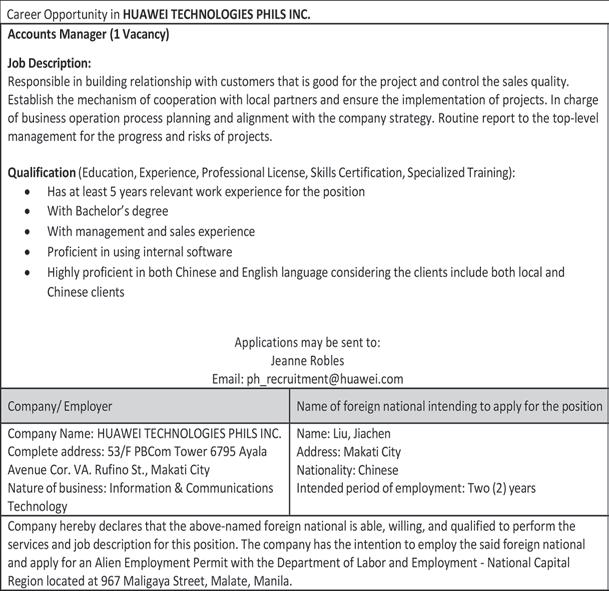
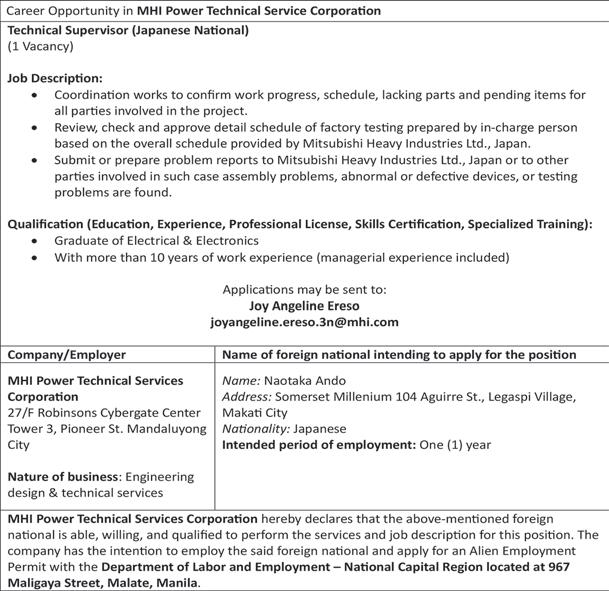
The announcement means the voluntary production cuts will end ahead of schedule.
The move follows an Opec+ decision in July to boost production by 548,000 barrels per day in August. Opec said the production adjustments may be paused or reversed as market conditions evolve.
When production increases, oil and gasoline prices may fall. But Brent crude oil, which is considered a global benchmark, has been trading near $70 per barrel, which could be due to a potential loss of Russian oil on the market and a large rise in crude inventories in China, according to research firm Clearview Energy Partners.
“President Trump has not obviously relented from his threat to sanction Russian energy if the Kremlin does not reach a peace deal with Ukraine as of August 7, potentially via “secondary tariffs” on buyers,” Clearview Energy Partners said in an analyst note Sunday. The eight countries will meet again on September 7, Opec said in a news release. AP
UN to slash $700 million in spending, overhaul operations as US pulls back
By Magdalena Del Valle
SECRETARY
General An -
tonio Guterres is slashing more than $700 million in spending and laying plans to overhaul the United Nations as its largest sponsor, the US, pulls back support.
Guterres’s plan calls for 20% cuts in expenditures and employment, which would bring its budget, now $3.7 billion, to the lowest since 2018. About 3,000 jobs would be cut.
Officially, the reform program is pegged to the UN’s 80th anniversary, not the new US administration. But the scale of the reductions reflects the threat to US support, which traditionally accounts for 22% of the organization’s budget.
President Donald Trump has suspended that funding and pulled out of several UN bodies already, with a broader review expected to lead to further cuts.
“We’re not going to be part of

organizations that pursue policies that hamper the United States,” Deputy State Department spokesman Tommy Pigott told reporters Thursday.
The planned cuts at the UN come as the Trump administration has
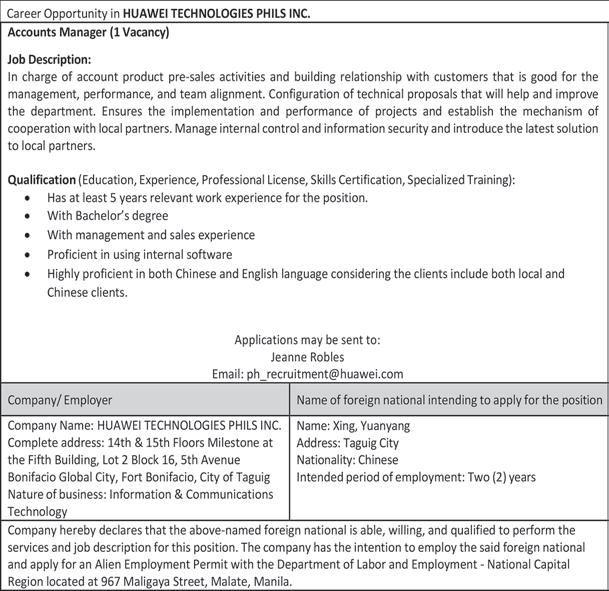

eliminated tens of billions of dollars in foreign aid as part of its drive to focus on what it sees as US interests. Conflicts from the Mideast to Ukraine and Africa have added to the need for global assistance.
After years of financial struggles, the UN under Guterres already was planning to make sweeping structural changes. He warned in January it was facing “a full-blown liquidity crisis.” Overall, spending across the UN system is expected to fall to the lowest level in about a decade— down as much as $20 billion from its high in 2023.
“UN 80 is in large part a reaction from the Secretary General to the kind of challenges posed by the second Trump administration,” said Eugene Chen, senior fellow at New York University’s Center on International Cooperation.
Guterres is expected to release details of his overhaul plans in a budget in September. The plan calls for restructuring many of its programs.
Guterres controls the UN’s regular budget, which is only a fraction of the total expenditures
of its affiliates. Facing funding shortages of their own, agencies like UNICEF and UNESCO are also planning major cutbacks.
The Trump administration already has stopped funds from going into the UN Relief and Works Agency for Palestine Refugees in the Near East, withdrawn from the UN Human Rights Council and left UNESCO.
Guterres’ plan has also drawn criticism, both from Trump allies and inside the UN.
“There are some things that the UN does that arguably should be increased in terms of resources,” said Brett Schaefer, a senior fellow at the conservative American Enterprise Institute. “And then there are some things that the UN shouldn’t be decreasing but eliminating altogether.”
He cited the UN’s nuclear watchdog and the World Food Program as contributing significantly to US interests and singled out the Food and Agriculture Organization and Human Rights Council as having mandates at odds with American policy.
Meanwhile, UN staff in Geneva announced last week they passed a motion of no confidence in Guterres and the plan.
“Staff felt its slash and burn approach lacked focus, had no strategic purpose, and was making the UN more top-heavy and bloated,” Ian Richards, president of the UN Staff Union in Geneva, posted on LinkedIn about the UN 80 report.
That vote has largely symbolic importance, according to NYU’s Chen.
Still, Guterres’ efforts to get ahead of the inevitable cuts that reductions in US support will bring could help the UN adapt, he added.
“Maybe that’s a silver lining,” Chen said. “We’ll all be primed for reform.” With assistance from Eric Martin/Bloomberg
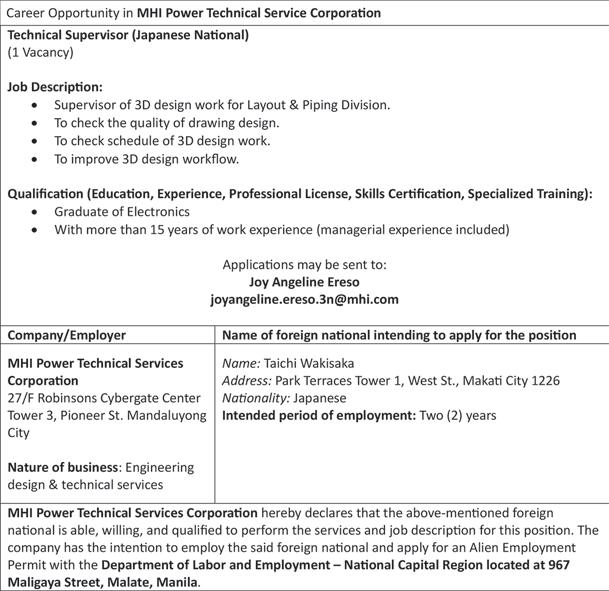
SECRETARY General Antonio Guterres BLOOMBERG
South Korea removes border loudspeakers in bid to ease tensions with North Korea
By Kim Tong-Hyung Associated Press
SEOUL, South Korea—South Korea’s military said Monday it had begun removing loudspeakers along its border with rival North Korea in a move aimed at reducing tensions.
The speakers had previously been used to blast anti-North Korean propaganda across the border, but the South’s new liberal government halted the broadcasts in June in a conciliatory gesture as it looks to rebuild trust and revive dialogue with Pyongyang, which has largely cut off cooperation with the South in recent years.
South Korea’s Defense Ministry said the physical removal of the loudspeakers from the border was another “practical measure” aimed at easing tensions between the war-divided Koreas and that it does not affect the South’s military readiness.
Lee Kyung-ho, a spokesperson for the ministry, didn’t share specific details on how the removed loudspeakers will be stored or whether they could be quickly redeployed to the border if tensions flare again between the Koreas. There were no discussions between the two militaries ahead of the South’s decision to remove the speakers, Lee said during a briefing. North Korea, which is extremely sensitive to any outside criticism of its authoritarian leadership and its third-generation ruler, Kim Jong Un, didn’t immediately comment on the South Korean step.
The South’s previous conservative government resumed the daily loudspeaker
broadcasts in June last year following a yearslong pause in retaliation for North Korea flying trash-laden balloons toward the South in a psychological warfare campaign.
The speakers blasted propaganda messages and K-pop songs, a playlist clearly designed to strike a nerve in Pyongyang, where Kim’s government has been intensifying a campaign to eliminate the influence of South Korean pop culture and language among the population in a bid to strengthen his family’s dynastic rule.
The Cold War-style psychological warfare campaigns further heightened tensions already inflamed by North Korea’s advancing nuclear program and South Korean efforts to expand joint military exercises with the United States and their trilateral security cooperation with Japan.
South Korean President Lee Jae Myung, a liberal who took office in June after winning an early election to replace ousted conservative Yoon Suk Yeol, has vowed to improve relations with Pyongyang, which reacted furiously to Yoon’s hardline policies and shunned dialogue.
But Kim Yo Jong, the influential sister of the North Korean leader, rebuffed overtures by Lee’s government last week, saying that Seoul’s “blind trust” in the country’s alliance with the U.S. and hostility toward North Korea make it no different from its conservative predecessor. Her comments implied that North Korea—now preoccupied with its expanding cooperation with Russia over the war in Ukraine—feels no urgency to resume diplomacy with Seoul and Washington anytime soon.
Billionaire Ong pleads guilty in Singapore gifting scandal
By Low De Wei & Yoojung Lee
ABILLIONAIRE best known for bringing Formula One night racing to Singapore has pleaded guilty in relation to a scandal to supply one of the citystate’s most senior politicians with luxury gifts.
On Monday, 79-year-old Ong Beng Seng conceded that he abetted the ex-lawmaker in obstructing the course of justice, while another charge was taken into consideration. Both charges related to offering S. Iswaran in 2022 a trip on his private jet to Doha, a stay at the Four Seasons there, and a return business class ticket worth S$5,700 ($4,422). The former transport minister was then the chairman of a steering committee for the F1 night race.
The judge extended Ong’s bail and said that the sentence would be handed down on the afternoon of August 15.
The defense said Ong is battling several medical conditions, including multiple myeloma cancer diagnosed in 2020 which has
made him immunocompromised, a non-healing wound on his foot and relentless diarrhea episodes. “Ong’s home environment will be more pristine than prison,” lawyer Cavinder Bull said. “Ong is living within a narrow margin where there is no room for error.”
Both the prosecution and defense suggested that the judge can exercise “judicial mercy” and impose a fine rather than a jail sentence. Prosecutors had originally sought eight weeks in jail for Ong after the guilty plea.
Court proceedings were earlier interrupted twice due to a fire alarm.
Singapore’s worst graft scandal in decades has gripped the city-state, which has sought to build a global reputation for zerotolerance for corruption. How the Malaysia-born tycoon is sentenced will also weigh on his control of a business empire that extends from the Southeast Asian financial hub to a luxury development in central London and resorts in the Maldives. Ong has a net worth of $1.5 billion, according to the Bloomberg
Billionaires Index.
In 2024, Iswaran was sentenced to one year in jail for obtaining gifts from Ong, which also included items like a Brompton bicycle and race tickets.
Singapore Prime Minister Lawrence Wong, who won his first electoral test as premier in May, has warned lawmakers in the ruling People’s Action Party to separate their public political position from private, professional or business interests, and be wary of potential conflicts.
Ong retains a significant footprint in Singapore. His firm continues to run the annual Grand Prix night race, which he helped bring to the city in 2008 owing to a close friendship with former F1 supremo Bernie Ecclestone. A multiyear extension of the race contract agreed with Singapore’s tourism board is slated to end by 2028.
Hotel Properties was also granted initial approval to redevelop marquee assets at a key slice of Singapore’s premier shopping belt Orchard Road in 2023, but has been looking to sell stakes in them, Bloomberg News reported earlier. A harsh sentence may make it harder to maintain control of his empire. The absence of a clear successor and a lack of active involvement by Ong’s children in Hotel Properties make possible an outside takeover of the firm or a sale of its Orchard Road portfolio, analysts at DBS Group Holdings Ltd. said in May. The firm’s thinly traded stock has risen over 50% this year.
Hotel Properties maintains ties with the likes of Singapore state investor Temasek Holdings Pte. Ong in 2021 led a S$3.9 billion takeover of the property assets of media company Singapore Press Holdings Ltd. in collaboration with two Temasek units, though Hotel Properties divested its stake in the consortium earlier this year. Temasek and Hotel Properties also each control a 30% stake in a joint venture overseeing a major mixed-use development in London now known as Bankside Yards. With assistance from Andrea Tan/Bloomberg
Hong Kong cancels passports and bans financial support for 16 overseas activists
By Kanis Leung The Associated Press
ONG KONG—Hong Kong
Hauthorities on Monday strengthened a crackdown on 16 overseas-based activists who were previously targeted by bounties on suspicion of endangering national security, implementing measures that include banning financial support to them and canceling passports for most of them.
Three of the original 19 activists were already targeted by similar measures last year.
Secretary for Security Chris Tang banned providing funds or economic resources to the 16 activists, including Victor Ho, Keung Ka-wai, Australian academic Chongyi Feng and US citizen Gong Sasha, the Hong Kong
The activists were among 19 people who were targeted with arrest warrants in July for alleged roles in Hong Kong Parliament, a group the police called a subversive organization abroad. The organization is not the city’s official legislature and its influence is limited.
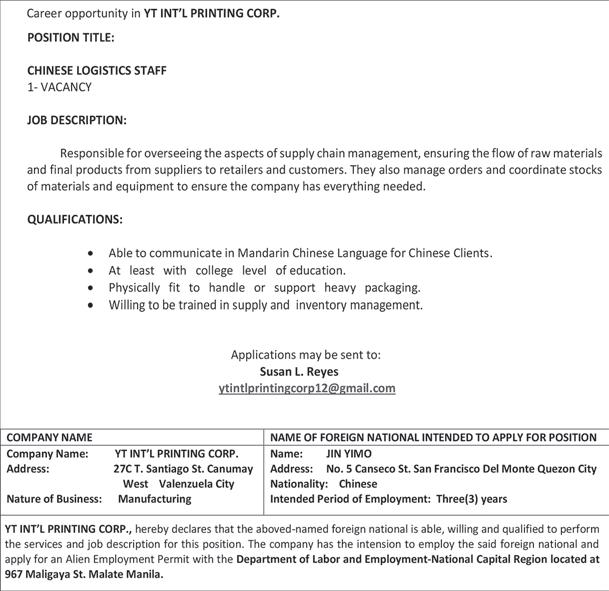

government said in a statement.
Travel documents were canceled for 12 of the 16 who hold Hong Kong passports.
The government also prohibited properties from being leased to the people on the list or forming joint ventures with them. Anyone violating the orders risks a penalty of up to seven years in prison.
The 16 activists are hiding in the UK, the US, Canada, Germany, Australia, Thailand and Taiwan, among other regions, the government said, accusing them of continuing to engage in activities endangering national security.
The notice also accused them of intending to incite hatred against Beijing and Hong Kong through smear and slander.
“We therefore have taken such measures to make a significant impact,” the statement said.
Beijing imposed a national security law on the territory in 2020 that has effectively wiped out most public dissent following huge anti-government protests in 2019. Many activists were arrested, silenced or forced into self-exile.
The measures announced Monday were


issued under the powers granted by Hong Kong’s homegrown national security law enacted last year.
The arrest warrants issued in July have drawn criticism from foreign governments, including the US, the U.K. and the European Union. Police offered rewards of 200,000 Hong Kong dollars ($25,480) to 1 million Hong Kong dollars ($127,400) for information leading to their arrests.
In a July statement, US Secretary of State Marco Rubio condemned the moves.
“The extraterritorial targeting of Hong
Kongers who are exercising their fundamental freedoms is a form of transnational repression,” he said. “We will not tolerate the Hong Kong government’s attempts to apply its national security laws to silence or intimidate Americans or anyone on US soil.”
The Hong Kong office of the Chinese Foreign Ministry responded by opposing criticism from foreign politicians, insisting the actions were legitimate.
The governments in Beijing and Hong Kong said the security laws were necessary for the city’s stability.


First strike in almost 30 years hits Boeing’s St. Louis defense factories
By Julie Johnsson
WORKERS at Boeing Co.’s St. Louis-area defense factories are striking for the first time in almost three decades after union members rejected the company’s modified contract offer.
About 3,200 machinists walked off the job around midnight after members voted down a deal that would have raised wages by 20% and boosted retirement contributions. The union last went on strike in 1996, with the stoppage lasting 99 days.
“IAM District 837 members have spoken loud and clear, they deserve a contract that reflects their skill, dedication, and the critical role they play in our nation’s defense,” Tom Boelling, the union local’s top official, said in a statement ahead of the deadline.
The labor action will amplify financial pressure on Boeing’s defense and space division, which generates almost a third of the company’s revenue. At the same
Suspended
By Patpicha Tanakasempipat
USPENDED Thai Prime Minister
SPaetongtarn Shinawatra is seeking a fair hearing from a court probing allegations of ethical misconduct related to her handling of a border dispute with Cambodia, an official said.
time, the operation that’s now gone on strike is far smaller than the civil aircraft business that was severely affected late last year by a walkout, which brought manufacturing in the Seattle area to a standstill for weeks and contributed to Boeing selling equity worth almost $24 billion.
“We are prepared for a strike and have fully implemented our contingency plan to ensure our non-striking workforce can continue supporting our customers,” Dan Gillian, a Boeing vice president and senior St. Louis site executive, said in a statement.
Union members build fighter aircraft such as the F-15, the T-7 training jet, missiles and munitions. They also manufacture
components for Boeing’s 777X commercial jets. In March, Boeing won a contract to design and build the US’s next-generation stealth fighter jet, beating out rival Lockheed Martin Corp. for the multibillion dollar program dubbed the F-47.
Boeing’s defense business was profitable for a second consecutive quarter, the company said last month, as it avoided charges that long dogged the business. the company also managed to improve the performance of fixed-price development programs responsible for the worst of previous overruns.
There’s been a recent groundswell of activism at aerospace manufacturers, with unions gaining leverage amid shortages of highly skilled mechanics.
Machinists walked off the job for three weeks at Pratt & Whitney this year, contributing to engine shortages at planemaker Airbus SE. Boeing’s commercial factories were shut down by striking workers for two months in late 2024.
Boeing Chief Executive Officer Kelly Ortberg downplayed the potential fallout from a strike during the company’s July 29
Prime Minister Paetongtarn
Prommin said.
earnings call.
“The order of magnitude of this is much, much less than what we saw last fall,” Ortberg said, noting that the St. Louis union is about 1/10 the size of the Seattle-based union that struck last fall. “I wouldn’t worry too much about the implications of the strike. We’ll manage our way through that.”
Boeing had crafted its latest offer to address concerns raised by members of International Association of Machinists and Aerospace Workers Local 837 after they rejected its initial proposal last week, Gillian told reporters on July 31.
Boeing’s proposal to district members would see average wages increase to $102,600 from $75,000 for IAM 837 members.
Boeing also eliminated a controversial schedule proposal and revised its 401(k) terms so that workers get the full contribution increase upfront instead of spread over three years.
Boeing cautioned that it would withdraw a $5,000 signing bonus and wouldn’t offer it again to workers if the contract wasn’t ratified on Sunday. With assistance from Se Young Lee/Bloomberg
Switzerland in crisis talks to avert 39% Trump tariffs
By Bastian Benrath-Wright & Hugo Miller
THE Swiss government held crisis talks on Monday to come up with a proposal that might dissuade US President Donald Trump from imposing 39% tariffs on the country in less than three days.
With the rate—the highest among industrial nations—set to go into effect on August 7, President and Finance Minister Karin Keller-Sutter convened an emergency meeting of the governing Federal Council on Monday to discuss how to proceed.
S eparately, negotiators with the Swiss State Secretariat for Economic Affairs have reached out to their US counterparts to try and find a way forward. The agency, which hammered out a far more favorable tentative deal with the US more than a month ago, also held a briefing with business leaders on Monday.
Keller-Sutter, who was criticized in the Swiss press over the weekend for allowing Trump to blindside her without a backup plan, said she would be willing to make a last-minute trip to Washington if she thought there was a chance a deal could be made.
“I don’t rule out such a visit, but first, the two sides should come closer together in their positions,” she told the newspaper Schweiz am Wochenende. It’s not clear what, if any, response there has been from the US government.
“It’s unfortunate that the Swiss took so much time” to react, says Thomas Borer, a former Swiss diplomat who now runs his own consulting firm, echoing the criticism made in the press.
Despite the backlash, the Swiss president doesn’t face any immediate danger of losing her job. The system is designed for continuity, and the presidency rotates on an annual basis, meaning her term running the country will come to a close at the end of the year.
The Trump administration justified Friday’s move by claiming that Switzerland had in essence stolen money from the US and should therefore be hit with a tariff rate commensurate with the trade deficit—a notion Ketter-Sutter dismissed as “absurd.” Switzerland ran a $38 billion bilateral trade surplus with the US last year, according to US Census data, which was the 13th biggest for the world’s largest economy. While Swiss exports to the US collapsed after the introduction of tariffs in April, they rebounded in June, suggesting that trade between the two countries remained robust.
“We estimate that this represents a tariff shock of around 23 percentage points for the Swiss economy, putting roughly 1% of its GDP at risk over the medium term,” said Bloomberg economist Jean Dalbard. There are not many routes available to Switzerland, but one is to offer to buy liquefied natural gas from the US. While the landlocked country is focused on hydroelectric and nuclear power, it does use a small amount of gas, primarily in the winter to cushion swings in its energy supply. Should Switzerland choose to import more gas, it would have to travel through neighboring countries, which could potentially increase transit costs.
See “Tariffs,” A12
hopes for fair court ruling in ethics case
At this moment, we believe our intentions were right and will be fairly considered,”
As the nation’s leader, Paetongtarn’s phone conversation with Cambodia’s former leader Hun Sen was made in good faith with a sincere intention to promote peace between the two countries, Prommin Lertsuridej, secretary-general to the prime minister, told reporters. She submitted her defense statement on Monday, meeting the deadline set by the Constitutional Court, he said.
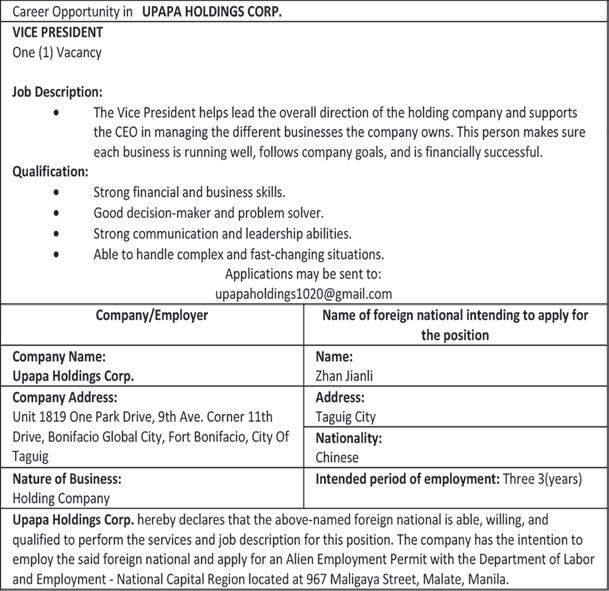

In the controversial June phone call with Hun Sen, which was subsequently leaked, Paetongtarn blamed the border standoff between the two neighbors on the Thai army. The remarks, which she apologized for later, sparked protests in Thailand and calls for her to resign.
The court suspended Paetongtarn from her prime ministerial duties on July 1 after
receiving a complaint from a group of senators accusing her of violating ethical standards. She could be disqualified and removed from office permanently if the court finds her guilty.
A fur ther escalation in the border dispute after Paetongtarn’s suspension erupted into the biggest armed conflict between the two countries in decades. The fighting, which killed more than 40 people and displaced hundreds of thousand civilians on both the sides,
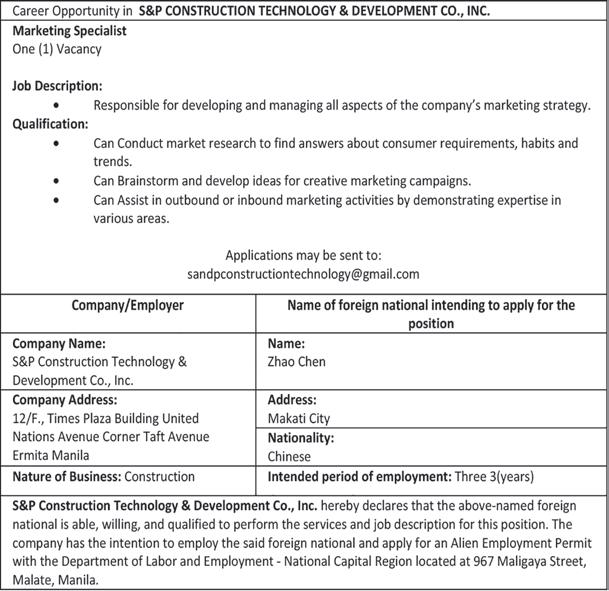
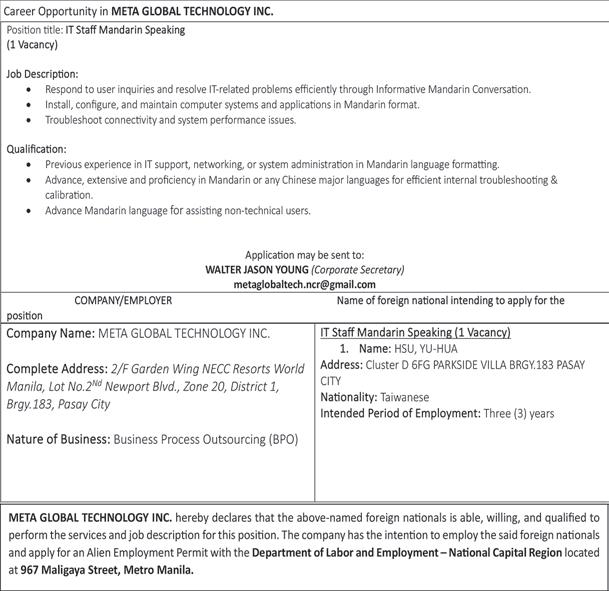
stopped following a ceasefire agreement, mediated by Malaysia as the chair of the Association of Southeast Asian Nations and a push by US President Donald Trump.
Paetongtarn, the youngest daughter of billionaire and former Prime Minister Thaksin Shinawatra, came to power in August last year after her predecessor, Srettha Thavisin, was ousted in a similar ethics-related case over an appointment of a cabinet minister. She has remained in the cabinet as the Culture Minister while one of her deputies Phumtham Wechayachai stepped in as the acting prime minister. Paetongtarn’s ruling coalition now has a slim parliamentary majority after the second-largest party in the bloc defected to the opposition following the furor over her phone controversy. Bloomberg News
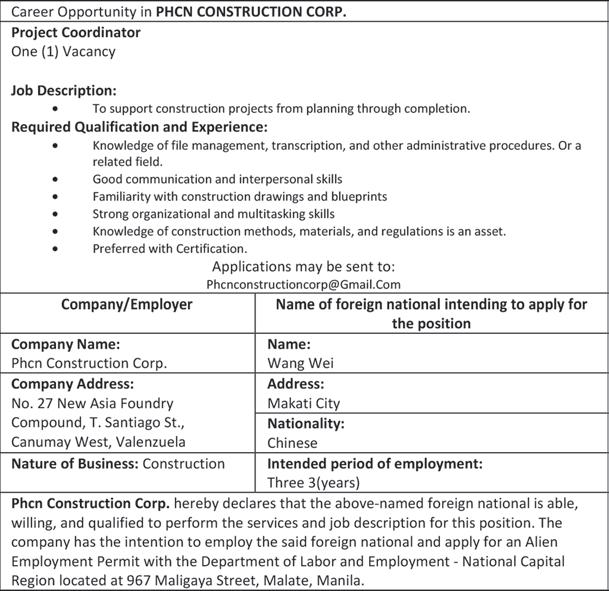
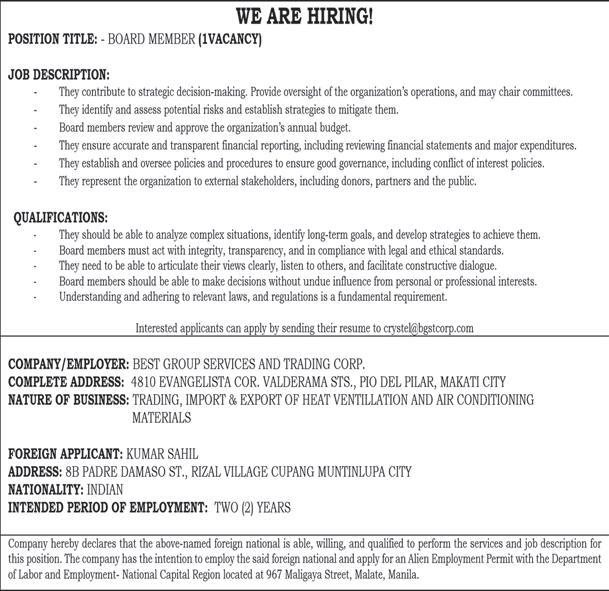
Trump’s NOAA pick promises ‘cutting-edge’ weather forecasting while backing agency cuts
By Lauren Rosenthal
DAYS after floods killed at least 135 people in Texas Hill Country, weather scientist Neil Jacobs appeared before a Senate committee as the nominee to lead the US agency that oversees forecasting. He vowed to create a cutting-edge weather modeling system while also pledging support for President Donald Trump’s plan to dramatically shrink the agency.
It’s a hard balance to strike. The National Oceanic and Atmospheric Administration has sole responsibility for issuing life-saving weather alerts in the US. The agency— which once employed 12,000— is reeling from the departure of hundreds of staff. Dozens of forecasting offices are without a chief meteorologist or a warning coordinator who communicates with emergency managers ahead of dangerous storms. The Commerce Department has opened inquiries into the effectiveness of the Texas flood warnings and whether the agency is ready to respond to future disasters; the agency is likely to be tested again very soon, as the heart of hurricane season nears. Other offices lack staff to launch weather balloons and track local conditions. Those shortages are creating gaps in NOAA data and tools that have been used by businesses in a wide array of industries for plotting strategy and planning day-to-day operations.
The White House’s proposed budget would eliminate NOAA’s research division, cut more than 2,200 positions and reduce funding by about 29% overall—changes that Congress must approve. Jacobs has assured senators that NOAA would still be able to continue its “mission-essential” operations if they sign off on this unprecedented transformation.
In his confirmation hearing, Jacobs said he supports Trump’s cuts, while providing few details about how NOAA plans to fund his modeling program or hire additional staffers at weather prediction centers. Still, he received enough support to advance his confirmation out of committee. While it appears likely he will return as NOAA’s boss, his appointment still requires Senate approval.
“Dr. Neil Jacobs is exceptionally qualified to lead the National Oceanic and Atmospheric Administration,” White House spokesperson Kush Desai said. “Having served
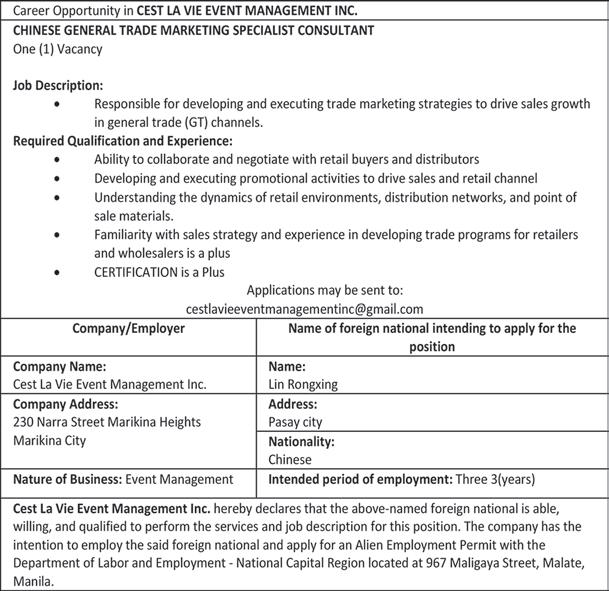

as acting NOAA administrator during President Trump’s first term, he brings the experience and expertise needed to provide life-saving forecast predictions. We look forward to his swift confirmation.”
Unlike some of the agency chiefs appointed by Trump, Jacobs, 51, has spent his career immersed in the subject matter his new position would govern. He’s a celebrated weather modeling expert who served as NOAA’s interim chief during Trump’s first term in office, and he wants it to pursue a new weather prediction system that would be the best-performing in the world. He’s spent the last several years working on NOAAfunded research on improving forecasting capabilities, which he has said are a matter of “saving people’s lives.”
Jacobs did not respond to repeated requests for comment. NOAA did not respond to a request for comment or updated staffing numbers. Neither did its parent, the US Department of Commerce. NOAA and its parent, the US Department of Commerce, did not provide updated staffing numbers in response to a request from Bloomberg Green.
Despite being embroiled in a scandal during his tenure at NOAA known as “Sharpiegate,” he has the support of many current and former agency staff. But a dozen colleagues told Bloomberg Green that Jacobs is likely to face even more challenging circumstances now, including a demoralized workforce facing nonstop efforts to gut federal science agencies and climate research. “I would like to think he learned an important lesson about holding your ground leading an

organization,” said Rick Spinrad, a former NOAA administrator who spent more than a decade at the agency under Republican and Democratic presidents. “I’m hopeful that he’s learned how to fight within the political system—because he is going to have to fight.” Congress created NOAA in 1970 at the direction of Republican President Richard Nixon, uniting forecasters, satellite operators, surveyors and ocean researchers from six different sections of the government. Over the last half-century, NOAA’s budget has grown to $6.7 billion. It operates an advanced hurricane prediction center, a uniformed military-style corps and a fleet of research planes and ships for mapping and measuring the ocean and atmosphere. While other science agencies have authority over their own spending and priorities, NOAA sits within the Commerce Department and answers to a cabinet secretary selected by the president.
Jacobs joined NOAA in 2018 to
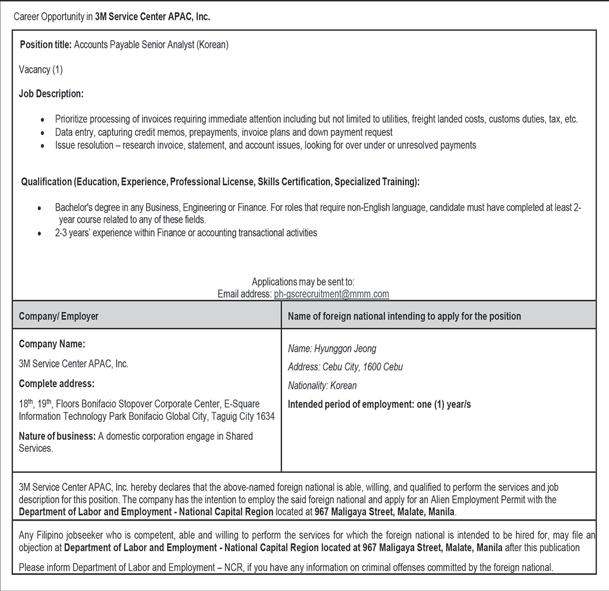

lead the data and weather modeling division. An avid surfer and naturalist with a penchant for wild orchids and little interest in politics, Jacobs had previously worked at a subsidiary of Panasonic. There, he built complex weather models as a chief atmospheric scientist, turning reams of proprietary data into critical forecasts for the aviation industry.
At one point, he boasted that his company’s models outperformed those created by US and European forecasting agencies. Working inside NOAA to improve the agency’s models was a job too enticing to pass up. He advanced quickly despite commuting back and forth to Washington from North Carolina, where his wife and young children remained. After repeated leadership shakeups, Jacobs stepped into the top job at NOAA just 12 months after he arrived, assuming responsibility for briefing the White House on weather threats.
This role put Jacobs in the hot
seat. In September 2019, Trump tweeted that Alabama would “likely be hit (much) harder than anticipated” by Hurricane Dorian, even after Jacobs had explained to the president that the storm was likely to strike Florida. When phones began ringing at the National Weather Service office in Birmingham, Alabama, a staffer tweeted that the state faced no threat.
As the hurricane approached the Gulf Coast, Trump doubled down, showing reporters a map with a new storm track drawn through Alabama in what appeared to be black marker. The incident went viral, as late-night talk show hosts Seth Meyers, Jimmy Kimmel and Stephen Colbert mocked Trump.
According to internal emails cited by investigators, acting White House Chief of Staff Mick Mulvaney pushed the Commerce Department to issue “a correction or an explanation or both” for “intentionally” contradicting Trump. Jacobs approved a public statement by NOAA that chastised Alabama’s forecasters for issuing over-confident predictions. “It was pretty well implied that this was something that was a fireable offense if you disobeyed,” Jacobs later said. The three-sentence statement from NOAA that Jacobs approved sparked three separate probes, including a congressional investigation. Spinrad and Craig McLean, then NOAA’s acting chief scientist, each lodged a formal complaint accusing Jacobs of undermining accurate forecasts.
See “NOAA,” A12

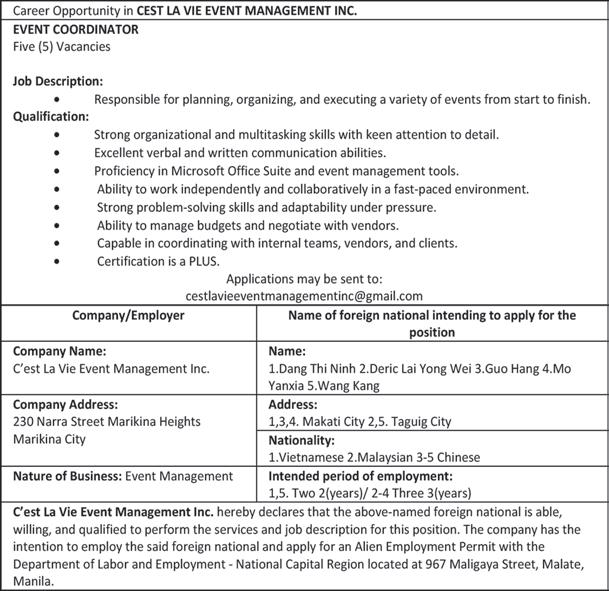
WORKERS at the National Oceanic and Atmospheric Administration (NOAA) Center for Weather and Climate Prediction headquarters in College Park, Maryland. MICHAEL A. MCCOY/BLOOMBERG
China’s Long March 12 rocket launch raises safety concerns in PHL waters
By Malou Talosig-Bartolome
THE Philippine Space Agency (PhilSA) has issued a public advisory following the launch of China’s Long March 12 rocket, warning of potential debris falling within Philippine maritime zones near Palawan.
The rocket was launched from the Hainan International Commercial Launch Center in Wenchang, China at 6:21 PM Philippine time. Based on trajectory data, unburned components—such as boosters and fairings—may have landed approximately 21 nautical miles off Puerto Princesa and 18 nautical miles from
authority of the President to adjust tariff rates on rice, and revert tariffs to previous levels.
“This combination of lower tariffs and precipitous drops in global rice prices constitutes a “perfect storm” that has severely devastated the Philippine agricultural sector, they warned.
Review every 4 months
THE tariff for rice was reduced from 35 to 15 percent until 2028 under Executive Order No. 62, but is subject to review every four months.
The Department of Economy, Planning, and Development (DepDev) projected that the country will import 4 million metric tons (MMT) of rice this year to address
Continued from A11 Palace.
“If you can’t trust the most senior person in NOAA to stand up for our science,” McLean said, “who can you trust?”
After Sharpiegate, Jacobs embarked on a campaign to regain employee trust. He pledged to visit as many of NOAA’s 122 local forecasting offices as possible. When the pandemic struck amid ongoing Sharpiegate investigations, Jacobs began rising at 2 a.m. to spend hours emailing individual NOAA staff, recognizing their work. In -
Safety alert for vessels and coastal communities
PHILSA cautioned that rocket debris may still be floating in the area or drifting toward nearby coastlines. Fishing boats, aircraft, and commercial vessels are advised to avoid the designated drop zones
its estimated production shortfall of the local food staple this year.
Data from the Bureau of Plant Industry showed that the country already imported 2.3 MMT as of 10 July 2025.
Last week, DA announced its proposal to restrict the entry of rice imports to address the slump in farmgate for palay.
Sinag’s call AGRICULTURE group Samahang Industriya ng Agrikultura (Sinag) called on President Marcos to request the immediate passage of legislation reverting rice import tariffs to their original levels.
Sinag executive director Jayson Cainglet noted that an Executive Order (EO) on changes in tariffs cannot be issued while Congress is in session. However, “waiting until October is not an option.”
He said such a move would reinstate the original rice import
vestigators eventually concluded that Jacobs had engaged in misconduct and acted “intentionally, knowingly, or in reckless disregard” of NOAA’s scientific integrity standards. Jacobs issued a response challenging those findings, while noting he was open to other “critique and criticism” regarding his handling of the incident.
The scandal seemed to exhaust Jacobs, according to his mentor and former graduate adviser Gary Lackmann. “He was trying so hard to do the right thing,” Lackmann said. “There was just no way he could do the right thing and do his job and keep protecting the organization.”
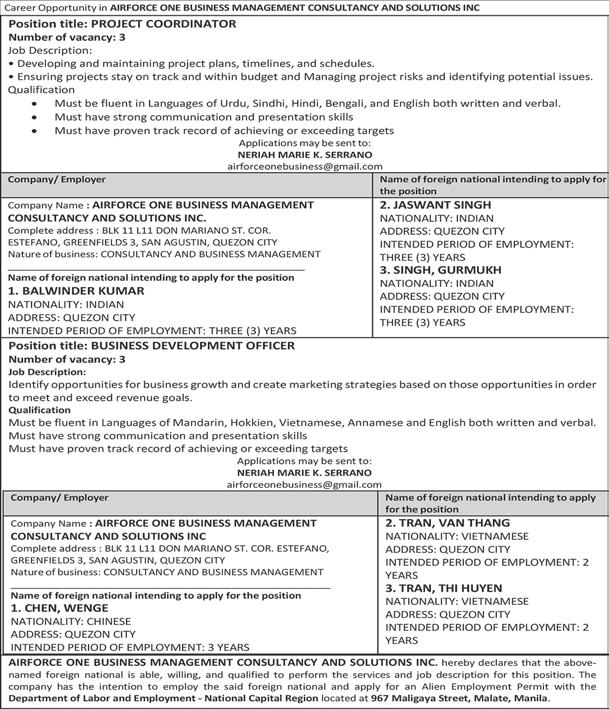
and report any sightings to local authorities.
“Additionally, the possibility of an uncontrolled re-entry to the atmosphere of the rocket’s upper stages returning from outer space cannot be ruled out at this time,” PhilSA said.
China’s space conduct under scrutiny
THIS latest launch adds to growing global concern over China’s failure to adopt responsible spacefaring practices. Despite calls for greater accountability, China has yet to implement controlled reentry protocols, allowing rocket stages to descend unpredictably over populated or environmentally sensitive zones.
China’s controversial record includes the uncontrolled descent of the Long March 5B in 2021 and a
tariffs of 35 percent for Asean countries and 50 percent for nonAsean nations.
“A delayed directive risks driving palay prices even lower, further worsening the crisis faced by our rice farmers,” Cainglet said.
He also proposed certain measures, such as increasing the National Food Authority’s (NFA) palay procurement budget to at least P60 billion.
This would allow the grains agency to purchase more palay at fair and competitive prices, he added.
Cainglet also called for the establishment of a palay floor price at P18 per kilo for fresh and P23 per kilo for dry, along with implementing a temporary palay price subsidy of P6 per kilo while awaiting the institutionalization of the floor price.
Butch Fernandez and Ada Pelonia
With
Trump’s proposed cuts to NOAA are a sharp departure from how the agency fared in his first term. While skeptics have long attacked NOAA’s climate change research, the agency’s work on long-term local weather—otherwise known as the climate—was largely left alone.
“I was never directed to not support climate or to defund anything climate related,” said Tim Gallaudet, who spent more than a year as NOAA’s acting chief and served as Jacobs’s deputy from 2019 to 2021. “It was just not prioritizing it.” But “this time around,” he said, “it’s all different. Everything is being targeted.”
The Trump administration’s find-and-delete approach to stamping out diversity, equity and inclusion programs appears to have engulfed work on global warming and climate as a whole, a pattern noticed by both Spinrad and McLean. While the White House has proposed funding some weather-related research, the former NOAA scientists say the president’s budget eliminates projects that improve predictions of fire conditions and storms in a changing climate.
2007 anti-satellite test that created thousands of long-lasting debris fragments. These incidents have drawn criticism from space agencies and experts, who argue that China’s actions violate the spirit of the Outer Space Treaty, which calls for minimizing harm and ensuring accountability in space activities.
Public advisory: Do not touch debris
PHILSA urges the public, especially coastal residents, to report any suspected debris sightings and avoid handling any materials. Rocket remnants may contain toxic substances such as unspent fuel and pose serious health risks.
For official updates and safety guidance, the public is encouraged to follow PhilSA’s verified channels and coordinate with local disaster response units.
passenger traffic grew 5.1 percent in RPK in the first half of the year, versus the same period in 2024. Available seats grew by 4.8 percent, yoy, with average PLF recorded at 82.5 percent of total available seats.
Airlines in the AsiaPacific region drove the growth in global passenger traffic in the period, with an 11.4-percent increase in RPK. This was accompanied by a 9.8-percent rise in ASK, while PLF averaged 81.5 percent for the period.
IATA represents some 350 airlines comprising over 80 percent of global air traffic.
The agency is changing its priorities, according to a NOAA official, focusing on weather prediction and other responsibilities in its portfolio.
Jacobs’s plans for weather forecasting at NOAA are ambitious. “One reason he wants to go back is that he wasn’t done,” said Mary Glackin, a former executive at The Weather Company who spent the bulk of her career at NOAA and supports Jacobs for the top job. Over the last decade, NOAA has largely eked out improvements by tweaking existing models and running them on more powerful supercomputers. But Jacobs has said a streamlined, cloud-based modeling system capable of running on a laptop would deliver better results—and be easier for private companies to use and customize. Integrating artificial intelligence can help NOAA develop faster tools, Jacobs testified to the Senate committee.
Though Jacobs has the expertise to do the work himself, “that’s not necessarily what you need in an administrator” at NOAA, Spinrad said, especially in “an administration that has shown clear antagonism for many of the aspects of the NOAA mission.”
NOAA faced hurdles even before Trump took office: The agency was seeking nearly $800 million from Congress to upgrade its aging satellites, and the National Weather Service was already un -
11:37 a.m. on Monday.
which the plenary has traditionally tasked to handle individual amendments to the General Appropriations Bill (GAB) after second reading approval.
In a news conference, House Committee on Appropriations Chairperson Mikaela Suansing said the chamber will no longer form a small committee—a practice criticized for being opaque and vulnerable to last-minute insertions.
“This marks a major turning point. The so-called ‘small committee’—a mechanism that has long been mischaracterized and misunderstood—will be officially scrapped. We are replacing it with a process that unfolds in full view of the public,” Suansing said.
For years, Suansing said the small committee served as a postsecond reading body to process institutional amendments requested by lawmakers and agencies. Over time, she said, however, it became the subject of public distrust and controversy.
Suansing explained that institutional amendments typically involve programs that serve the general public, such as social services, healthcare, education, and benefits for uniformed personnel. From now on, she said, all such amendments must be formally proposed, documented and debated during plenary sessions.
Effective immediately, no amendments will be accepted after the GAB passes second reading. This move standardizes the budget process with how other legislative measures are handled.
“No more secret committees. No more last-minute decisions. We will now lift the veil on budget deliberations.”
Suansing emphasized, “From now on, the people will witness the process in real time—because this is their budget.”
In the Senate, a similar vow to reform the budget process was made Monday by the incoming chairman of the Finance committee, Sen. Sherwin Gatchalian.
derstaffed in key areas, according to the union that represents many of its workers.
Jacobs has called for expanding NOAA’s catalog of data. But recent staffing losses have since eaten into basic measurements used in federal forecasts and across the private sector.
As of late June, balloon launches that help measure wind, humidity and pressure in the upper layers of the atmosphere had been scaled back or completely halted in more than two-dozen locations out of a total 102 launch sites, according to the weather service, which has warned “staffing limitations or operational priorities” could trigger further reductions.
Any data gaps will eventually degrade forecasts, said John Dean, CEO and co-founder of WindBorne Systems, an AI weather forecasting firm that sells some supplemental data to NOAA. “I don’t like seeing us losing weather observations,” Dean said.
Recently departed staff have expressed fear that Trump is gearing up to privatize an overextended weather service, as called for in the conservative Project 2025 policy document from the Heritage Foundation. Project 2025 calls for breaking NOAA into pieces and downsizing its research division—
cast for gross domestic product.
Briefing reporters at the Kapihan sa Senado, Gatchalian promised a “golden age of transparency and accountability” when they handle the 2026 budget. He also told reporters “this will be an education budget,” following the constitutional mandate, and said they will strive to make education spending represent at least 4 percent of GDP.
The ordinary people can only see “the beginning and end of the process” as things stand right now, unable to track the changes between the NEP and the General Appropriations Bills (GAB), he lamented.
Budget calendar
THE House is expected to receive the proposed 2026 NEP from the Department of Budget and Management on August 13. Budget deliberations in the chamber are set to begin on September 1. To accommodate more detailed deliberations, Suansing said the House plans to revise the budget calendar to give lawmakers ample time for plenary debate and review before the second reading vote.
“We are committed to deliberating smarter, not just faster. Better budget scrutiny means better public service delivery,” Suansing said. In a further push for transparency, Suansing said Speaker Ferdinand Martin Romualdez has endorsed the opening of bicameral conference committee meetings to public observation—breaking the tradition of closed-door negotiations between the House and Senate.
“We support Speaker Romualdez’s call for open bicam sessions so that the public sees how final budget figures are decided,” she said.
A critical reform is the inclusion of civil society organizations and nongovernment actors as observers at every stage of the budget process—from agency budget hearings to plenary debates and bicameral discussions.
“This isn’t about optics. It’s about outcomes,” Suansing said. “These changes aren’t just procedural—they are political, moral, and constitutional commitments to restore faith in how public funds are handled.” With Butch Fernandez
a step down from what Trump has proposed—to prevent the agency from spreading “climate alarmism.” Trump has repeatedly distanced himself from Project 2025, but he has also enacted many of its suggestions since retaking the White House.
Jacobs had seemed unwilling to consider these possibilities. Speaking on a weather podcast in July 2024, Jacobs said it would be “almost impossible to implement” Project 2025’s vision for NOAA. If the agency’s staff still felt anxious, Jacobs said, “I wouldn’t worry about it. Your mission is way too essential to the US economy and the safety of all the citizens, so, you know, you’re not going anywhere.” Rachel Cleetus, a senior policy director with the Union of Concerned Scientists, said Jacobs’s credentials to run NOAA are solid, but his previous run at the agency raises questions about whether he’s prepared to “be responsible for the staff and the ability to do their work without political interference.”
“That’s why his track record in Trump’s first administration is concerning,” Cleetus said. “There’s an even greater assault underway.” With assistance from Catherine Lucey and Brian K. Sullivan/Bloomberg
So far, the expectation appears to be that Keller-Sutter and the government will secure a better deal. The Swiss market benchmark SMI was down just 0.43% as of
“We expect negotiations to bring the 39% Swiss tariff rate closer to the 15% agreed with the EU,” Lombard Odier investment strategists said in a research note.
“In the unlikely event that this trade dispute is not resolved,” they added, they will revise their fore -
Given the “volatility of decisions we’ve seen from the US,” there’s hope that a solution may be found, Franziska Ryser, a lawmaker of the Green party, told Bloomberg.
“On the other hand, we must draw political conclusions from the situation and acknowledge that—at least under the Trump administration—America is no longer a reliable partner,” she said. “This means that we should strengthen cooperation with the EU and coordinate more closely with our European partners.” With assistance from Dylan Griffiths and Anna Shiryaevskaya/Bloomberg
Tubbataha Reef Natural Park.
PHL, India plan more military drills following ‘historic’ joint WPS activity
FOLLOWING its successful first ever joint sailing activity with the Indian Navy in the West Philippine Sea (WPS), the Armed Forces of the Philippines (AFP) is now eyeing more joint exercises with Indian military forces.
The joint sailing started last Sunday on the eve of President Ferdinand Marcos’ state visit to India and ended the following day. AFP chief Gen. Romeo S. Brawner Jr. said the joint sailing was successful and did not result in any untoward incident in the WPS.
“So far, the results [of the joint sailing] are good. We have met our objectives for the exercise and for the first time in history we have had a joint sailing with the Indian Navy,” Brawner told reporters in Filipino at the sidelines of the departure ceremony of Marcos at the Villamor Airbase in Pasay City last Monday.
“So, we are hoping that this will continue so that we can do more exercises with the Indian armed forces,” he added.
Brawner said during their joint sailing exercise in the WPS, China sea vessels shadowed the Philippines and Indian ships, which participated in the activity, but noted there was no untoward incident among the said naval forces.
He noted he requested for the joint sailing activity with his Indian counterpart during
their meeting last March. Last week, Brawner announced that AFP will purchase more pieces of military equipment and weapon systems from India, but he did not disclose any more details. Marcos bilateral talks with Indian Prime Minister Narendra Modi during his state visit to India from August 4 to 8, 2025 will include defense and security matters.
Among the President’s delegation in his five-day state visit to India are National Defense Secretary Gilberto C. Teodoro, Jr., Foreign Affairs Ma. Theresa P. Lazaro, Trade Secretary Ma. Cristina A. Roque, and Special Assistant to the President for Investment and Economic Affairs Frederick D. Go.
Aside from India, the Philippines continue to enter into partnerships with more countries like the United States and Australia in conducting joint sailing initiatives as China continues to claim parts of the WPS. This even after the 2016 Arbitral Award invalidated the said claims.
India also has its own border dispute with China on its north east territories, which cover 3,488 kilometers. Last month, India called for a permanent solution to the said border dispute, which resulted in violent clashes between its troops and that of China in the past. Samuel P. Medenilla
APEC sounds alarm on AI threats, deepfakes in historic ministerial declaration
ASIA-PACIFIC ministers have raised alarms over the growing misuse of artificial intelligence (AI), including deepfakes and disinformation, calling for stronger international cooperation to build a secure and trustworthy digital ecosystem.
The warning came during the first-ever APEC Digital and AI Ministerial Meeting, held in Incheon, South Korea.
While the summit focused on digital innovation, tensions surfaced as some delegations attempted to introduce geopolitical issues—specifically the conflicts in Ukraine and Gaza—where AI has reportedly been used in information warfare and battlefield operations.
The move exposed divisions among member economies, prompting host South Korea to issue a separate statement that APEC is a platform for economic cooperation, not political resolution.
The joint declaration, titled “Digital and AI Transformation toward Prosperity and Sustainable Growth for All,” emphasized the urgent need to mitigate digital risks while promoting inclusive innovation.
Ministers agreed that safety, security, trust, and reliability are essential to realizing the full benefits of digital transformation.
AI governance and digital security take center stage
HOSTED by Korea’s Ministry of Science and ICT and chaired by Minister Bae Kyunghoon, the meeting gathered ministers and senior officials from all 21 APEC member economies—including the U.S. White House Office of Science and Technology Policy, China’s Ministry of Industry and Information Technology, and Japan’s Ministry of Internal Affairs and Communications.
“We are now standing at the forefront of a monumental wave of transformation driven by AI and digital technologies,” said Kyung-hoon, an AI expert before he was appointed science and technology minister.
“How we respond to this massive ‘coming wave’will shape the future for all of us,”he added.
Delegates agreed on the need for international cooperation to counter AI-driven threats and build resilient digital environments. South Korea’s proposal to launch an APEC-wide AI governance framework by year-end received broad support.
The declaration holds particular significance as it represents a rare consensus on AI policy direction among leading AI economies—including the United States and China—amid fierce global competition in the field.
DPWH. . .
Continued from A5
awaiting funds for settlement.”
“As of now, four properties have been tagged as urgent for acquisition and are currently being processed by the office. The acquisition took time for these properties due to existing mortgage lien issues with their land titles,” the DPWH added.
It said the Davao Light and Power Co. recently informed it would remove the electric poles along the way by the weekend while it still await the reply of the telecommunication companies for the relocation of their respective electrical poles.
“We assure the public that the MaaMagtuod flyover project remains a priority,” it added.
$800-million Luzon International Container Terminal to boost economic activity and create jobs in Calabarzon
By Lorenz S. Marasigan @lorenzmarasigan

DEPARTMENT of Transportation (DOTr) Secretary Vince Dizon said on Monday that he envisions the Luzon International Container Terminal (LICT) in Batangas as a catalyst for transforming Calabarzon into an even stronger industrial powerhouse, with the facility set to become the country’s second-largest container terminal by 2028.
Responsible AI adoption and regional collaboration
THE joint statement called for the secure and responsible adoption of digital technologies to boost productivity and economic resilience. It urged member economies to take a human-centered approach to AI integration—especially in workforce development, education, and lifelong learning.
“We, therefore, call for the secure adoption of a broad range of technologies in a responsible manner—including ICT and digital technologies such as AI—to boost productivity, strengthen efficiency and resilience, and foster innovative pathways to support our economies’ development,” the statement read.
Ministers also encouraged cooperation on digital policies that promote cross-border trade and investment and called for greater public awareness of the benefits and risks of emerging technologies.
Geopolitical tensions highlight APEC’s limits
IN a separate Chair’s Statement, Minister Bae said “some delegations expressed their views on the situations in Ukraine and in Gaza, including recent developments.” Other members reiterated that APEC is not a forum for resolving geopolitical or security issues.
The Asia-Pacific bloc includes 21 diverse economies—including the United States, Russia, China, and several Muslim-majority nations such as Indonesia, Malaysia, and Brunei.
The Chair emphasized the importance of maintaining APEC’s role as “an effective cooperation platform, based on consensus as its most important tool.”
APEC’s digital future:
Innovation with accountability
AS the APEC Internet and Digital Economy Roadmap (AIDER) approaches its 2025 milestone, ministers agreed to pursue a long-term strategy for digital governance. They cited foundational initiatives such as the APEC Connectivity Blueprint, the La Serena Roadmap for Women and Inclusive Growth, and the Bangkok Goals on Bio-Circular-Green Economy.
“Because the future is digital,”APEC Executive Director Eduardo Pedrosa said in his remarks to APEC ministers. “AI will shape everything from healthcare to education, trade to public safety, and it is our responsibility as a region to stay ahead of these conversations—anticipating what our economies will need in five or ten years’ time, and ensuring that innovation supports long-term
The city government has harped on the purported withholding of funds on big ticket projects, that also include the bus transit system and the Ulas Viaduct project, and the alleged ban of conventions and conferences by regional and national government agencies, including those of professional associations. Hotels have confirmed the recall of earlier inquiries and paid bookings for national gatherings especially timed during the celebration of the Kadayawan Festival in August last year. Vice President Sara Duterte has particularly mentioned Malacanang withholding of funds for the bus transit system to replace the jeepneys here, although last week, Transportation Sec. Vince Dizon, appeared here for the launching anew of the bus transit and announcing that President Marcos has directed on the implementation of the project.
Being built through an $800-million investment from International Container Terminal Services Inc. (ICTSI), the terminal is expected to drive economic activity and job creation across the region.
“ItongLuzon International Container Terminal, by 2028, it will be the second biggest container terminal in the country. Napakaimportante nito lalo na sa Calabarzon area kasi ito ang industrial capital ng Pilipinas,” Dizon said.
Once completed, the terminal will be
ing mega vessels. Dizon said the LICT will likely spur the establishment of new industrial zones near the port, further attracting manufacturing investments to Batangas. Kapag naitayo na itong port, sigurado ‘yanmagtatayuannaangmgafactory katabi ng Puerto. Ibig sabihin nun trabaho. Ibig sabihinnunmalakingkita,”Dizon added. To ease potential traffic concerns, Dizon
DepEd to file criminal cases against 2 more schools over ‘ghost students.’
By Claudeth Mocon-Ciriaco @claudethmc3

THE Department of Education
(DepEd) is set to file, within the week, criminal cases against two more schools in the Metro Manila following their involvement in the alleged ghost students under the Senior High School (SHS) Voucher Program.
“Directive Sec. [Juan Edgardo “Sonny”] Angara ay number one, sampahan yun kaso nanagkasala.Tuloytuloysainvestigation and padalangdemand letter,” said Undersecretary for Legal and Legislative Affairs Filemon Ray Javier in a radio interview. Javier, earlier, said they have already filed criminal and civil complaints against a school also located in Metro Manila.
Aside from the three schools, DepEd already filed criminal charges and civil cases against three former DepEd contractual personnel from the National Capital Region and
SBy Henry Empeño
UBIC BAY FREEPORT — The Subic Bay Metropolitan Authority (SBMA) released to neighboring local government units on Monday, Aug. 4, some P197.85 million representing revenue shares for the first semester of this year.
In a simple turnover ceremony at the SBMA corporate boardroom, SBMA Chairman and Administrator Eduardo Jose L. Aliño distributed checks to LGU officials earmarked to augment development funds in in tourism, infrastructure, education, peace and order, health, livelihood generation, and social services.
Olongapo City again received the largest
are no longer with the Department.
“They left the DepEd even before the issue came out in public,” Javier added.
Meanwhile, Javier assured that SHS students who are currently enrolled in these three schools will be transferred to another legitimate private school.
Last month, Angara revealed that the agency has already recovered around P100 million in funds from the alleged anomalies.
“Parang mas malaki pa nga [ang narecover], nasa P100 [million],” Angara said at a post-State of the Nation Address discussion of the education and workers’ welfare development.
Angara also assured that the investigation is still ongoing and that they are still in the process of recovering the funds.
Mataas ang halaga ng pinag-uusapan dito, hindi lang ‘yung halaga ng pera, pero ‘yung halaga na nawawala sa nakararapat na dapat tumanggap na voucher na ito,”
share of P46,270,769.33 among the eight recipients because of its large population and land area. The LGU shares, which are given to LGUs contiguous to and affected by free port operations, are computed based on population (50 percent), land area (25 percent), and equal sharing (25 percent).
In Zambales, Subic town received P29,683,317.56, the second biggest share. San Marcelino got P23,763,694.31, Castillejos P17,987,887.14, and San Antonio P16,824,398.47.
In Bataan, Dinalupihan received P24,643,508.58, Hermosa P21,186,145.67, and Morong P17,489,910.85.
The revenue release is deemed timely, especially for LGUs grappling with damages
Angara said.
“Itoay future ngmgakabataannatin.At ‘yung voucher system natin halos 50 billion pesos naathindilangsamga public schools yan.Itongvouchers ayparasaatingpribadong eskuwelahan,” Angara added.
In line with this, DepEd has initiated recourse actions, including preparation for the termination of the schools’ accreditation and collating pieces of evidence against responsible individuals.
The Department is also exploring potential legal measures against those found culpable, including administrative and criminal sanctions, in accordance with existing laws and regulations.
To prevent future irregularities, DepEd is implementing stricter measures and enhanced validation protocols.
The verification process now involves multiple layers, beginning with cross-checking data between the Voucher Management System (VMS) and the Learner Information
the from recent typhoons and heavy rains from the southwest monsoon.
“This will be a huge boost to us, to augment our funds,” said newly-elected Hermosa mayor Anne Inton. “As you all know, Hermosa was among the municipalities hardest-hit by heavy rains brought about by the typhoons and the southwest monsoon, as 18 out of our 23 barangays got flooded.”
Aliño assured LGU officials that the SBMA will do its best to promote progress that will also benefit neighboring communities in the Subic Bay area.
System (LIS) to ensure that learners listed in the billing statements are genuinely enrolled in the school.
The second level of validation is conducted at the Central Office (CO), where discrepancies between billing statements and LIS records are flagged.
If inconsistencies are found, payments to schools are withheld until the issues are resolved.
A post-billing monitoring process follows, conducted by the Private Education Assistance Committee (PEAC), which oversees participating schools on the ground.
The final layer of verification is DepEd’s post-validation review, ensuring all prior verification processes have been completed before payments are made.
DepEd has also engaged Regional and Schools Division Offices (ROs/SDOs) to conduct school inspections and submit detailed reports to the Central Office, a measure implemented in SY 2024-2025.
This year’s LGU revenue share of P197.85 million for the first semester is slightly lower the P204.7 million released last year, as well as the P203 million for the same period in 2023. Aliño said the decrease was due to the imposition of 25 percent tax by the Department of Finance, which is remitted by the SBMA to the Bureau of Internal Revenue (BIR), and the removal of the five percent tax privilege for business establishments registered in Subic. Three percent of the five percent corporate used to be remitted to the BIR, while two percent were distributed as dividends to the contiguous LGUs, the SBMA said. The revenue shares collected from January to June are released by the SBMA in August, while those collected from July to December are released in February of the following year.
Camarines Sur solons eye precast concrete as solution to 8.25 million housing backlog
BLOC of lawmakers from Camarines
ASur is urging the Marcos administration to adopt precast concrete and other advanced construction technologies to help close the country’s massive housing backlog and reduce the cost and time of building homes—while advancing green and sustainable development goals.
In House Bill (HB) 2511, Camarines Sur Reps. Migz Villafuerte and Luigi Villafuerte, joined by Bicol Saro party-list Reps. Tsuyoshi Anthony Horibata and Terry Ridon, are seeking the passage of the proposed National Precast and Industrialized Construction Promotion Act.
The measure aims to institutionalize modern construction practices—including the use of precast concrete and industrialized methods—as a national policy to boost the housing sector, shorten construction timelines, minimize on-site waste, and align with global low-carbon goals.
As of March 2025, lawmakers said the country faces a staggering housing backlog of 8.25 million units.
Rep. Migz Villafuerte emphasized that precast methods can streamline construction by enabling the mass production of building
components in off-site, quality-controlled environments.
“This leads to faster assembly on-site and significant cost savings,” he said.
Rep. Luigi Villafuerte added that these technologies also reduce carbon emissions and construction waste, making them compliant with global green building standards.
To encourage adoption, HB 2511 proposes a package of incentives for developers, including fast-tracked permits from local government units (LGUs); income tax breaks and duty-free privileges from the Department of Finance (DOF) for companies using or investing in precast technology; low-interest “green financing” from government banks like DBP, LandBank, and Pag-IBIG; and fiscal and non-fiscal incentives from the Board of Investments (BOI), including VAT exemptions.
The bill seeks to create a National Committee on Industrialized Construction (NCIC) to monitor industry practices and recommend policies, fund programs, and promote international cooperation on technology transfer and skills training.
The NCIC will include representatives from the Departments of Public Works and Highways

(DPWH), Transportation (DOTr), Human Settlements and Urban Development (DHSUD), and the proposed Department of Economy, Planning, and Development (DepDev).
They acknowledged the high upfront cost of precast systems but stressed that long-term savings and environmental benefits outweigh the initial investment.
HB 2511 also proposes the establishment of national standards for precast and industrialized construction—similar to India’s Global Housing Technology Challenge and Singapore’s Prefabricated Prefinished Volumetric Construction program.
The bill will cover government agencies,
GOCCs, PPP projects, and private developers who avail of government incentives for housing and infrastructure. It mandates DHSUD, NHA, DPWH, and DOTr to prioritize these construction methods for all suitable projects, including the 4PH program and public infrastructure like bridges, terminals, and drainage systems. Migz and Luigi Villafuerte, both former governors of CamSur, spearheaded the province’s pioneering partnership with the DHSUD under the 4PH program. In 2023, President Marcos broke ground in Naga City for a 10,000-unit high-rise housing project, the tallest in Bicol, built using prefabricated components. Jovee Marie N. Dela Cruz
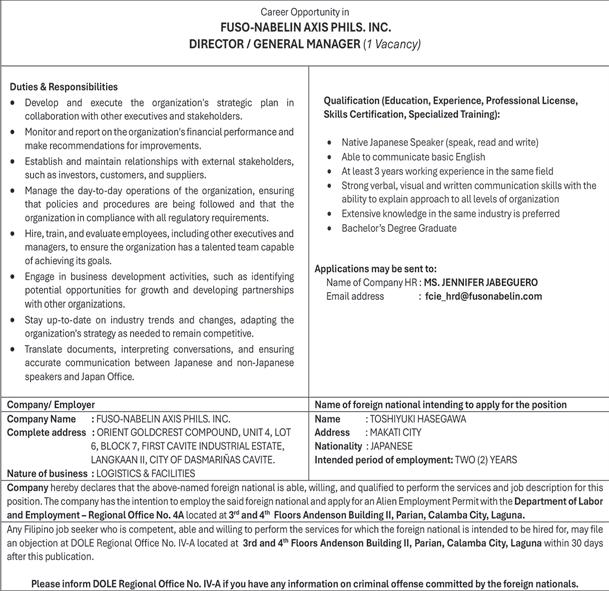
PBBM’s scathing attack: Unmasking corruption in flood control projects
IN his recent State of the Nation Address, President Marcos unleashed a scathing attack on the rampant corruption that has plagued flood control projects. The President’s condemnation is not just timely; it is essential for restoring public trust and ensuring the safety of vulnerable communities.
Flooding has become an all-too-familiar crisis in the Philippines, exacerbated by climate change and poor infrastructure management. Recent typhoons and monsoon rains have highlighted the catastrophic consequences of inadequate flood control measures—consequences that have tragically led to loss of life and livelihood. In this context, the President’s commitment to a comprehensive audit of flood control projects and his call for full transparency are critical steps towards accountability.
The staggering claim that half of the nearly P2 trillion allocated for flood control may have been lost to corruption, as noted by Senator Panfilo Lacson, paints a grim picture of mismanagement and exploitation. This revelation raises urgent questions about the oversight mechanisms in place for public works. (Read the BusinessMirror story: “Half of P2-T flood control allocations ‘lost to corruption.’” July 28, 2025).
The absence of a robust system to monitor these projects, as admitted by DPWH Secretary Manuel Bonoan, underscores a systemic failure that must be addressed. Projects are being inserted into the national budget without proper validation, leaving the Department of Public Works and Highways to implement initiatives that may be ineffective or entirely fictitious. (Read the BusinessMirror story, “DPWH: Hard to track ahead ‘inserted’ flood control works,” July 30, 2025).
The President’s directive to publish a comprehensive list of flood control projects and to investigate alleged ghost projects is a necessary move to ensure that public funds are used effectively. Transparency is not merely a bureaucratic requirement; it is a vital component of governance that empowers citizens to hold officials accountable. The public deserves to know how their money is being spent, especially when lives are at stake.
However, the fight against corruption in flood control projects must go beyond audits and lists. It requires a cultural shift within government agencies and a commitment to integrity at all levels. As the President emphasized, those who conspire to misappropriate public funds are not just robbing the present; they are stealing the future from generations of Filipinos. The moral imperative to act against corruption is clear, yet it must be matched by political will and concrete actions.
The call for justice on behalf of flood victims resonates deeply. It is a reminder that every decision made in the halls of power has real-world implications for ordinary citizens. As the President rallies support from lawmakers and the public, there needs to be a collective commitment to not only address past misdeeds but also to implement robust systems that prevent future corruption.
The Chief Executive’s bold stance against corruption in flood control projects is a necessary step towards rebuilding trust in public institutions. The road ahead will require unwavering dedication to accountability, transparency, and integrity. The Filipino people deserve a government that prioritizes their safety and well-being above all else, and it is time to ensure that public funds serve their intended purpose—protecting communities from the devastating impacts of flooding.
Opinion

Soft minds make hard times

NOUTSIDE THE BOX
APOLEON Hill’s book “Outwitting the Devil” was written in 1938—but it reads like it was meant for today. The manuscript, hidden for decades by Hill’s own family, was deemed too controversial for its time. Its blunt criticisms of organized religion, public education, and government institutions were considered career suicide back then. In it, Hill imagines a no-holds-barred interrogation of “Your Majesty,” a smug, calculating Devil who explains exactly how humanity keeps failing—not through catastrophe or sin, but through inertia.
No fire and brimstone here. Hill’s Devil is a metaphor: fear, distraction, and the seductive comfort of routine. His mission? Turn every person into a drifter—someone who follows the crowd, avoids thinking, fears discomfort (comfort zone, anyone?), and confuses movement for direction. Tragically, he often succeeds. Hill, born in rural Virginia in 1883, was not just a writer. He was a salesman of hope. His fame rests on “Think and Grow Rich” (1937), one of the bestselling self-help books of all time. He claimed his insights came from a challenge issued by Andrew
Carnegie, who supposedly gave him access to interview the great minds of his era. Did it happen? Probably not. But Hill was not selling history — he was selling belief.
The genius of “Outwitting the Devil” is how it exposes invisible sabotage. Schools dull curiosity. Churches preach passivity. Governments prefer citizens who obey and react, not think. Families condition the fear of failure. Once fear sets in, habit takes over. Life becomes predictable. You wake up one day and realize you have not lived—only floated.
Hill is not beyond critique. He exaggerated, self-mythologized, and wrote like a man selling both the cure and then the disease. But his central warning holds: if you do not think for yourself, someone else will do it for you. And it will not be in your best interest.
Hill calls this trance “hypnotic rhythm”—a state where bad mental habits become permanent. To break free, he lays out seven antidotes: purpose, discipline, learning from adversity, controlling your environment, using time wisely, living in harmony, and acting with intelligent caution. It sounds simple. That is because it is—until you try.
Now let us talk about the Philippines.
Filipinos are world champions in resilience, laughing through power outages, standing in line through bureaucratic chaos, and rebuilding after storms as if ruin were routine. But Hill would ask: at what cost? Resilience without direction becomes drifting in disguise.
Think of the average OFW. Decades abroad, sending home half a life’s earnings. The house gets built, the kids go to school—but what hap -
Japan PM says win-win trade deal with US may be hard to implement
TL. Pelayo
Ruben M. Cruz Jr.
Eduardo A. Davad Nonilon G. Reyes
D. Edgard A. Cabangon Benjamin V. Ramos Aldwin Maralit Tolosa Rolando M. Manangan BusinessMirror is published daily by the Philippine Business Daily


By Sakura Murakami & Yoshiaki Nohara
HE trade deal reached last month between the US and Japan was “win-win” for both countries, but implementing the terms of the pact may be a bigger challenge than reaching the deal, Japanese Prime Minister Shigeru Ishiba said.
“Some say that carrying the trade deal out is harder than agreeing on it. I humbly seek your continued support on this,” Ishiba said Monday in response to questions in parliament.
At the same session of parliament, Japan’s chief trade negotiator Ryosei Akazawa acknowledged criticism over the lack of having anything in writing.
“It’s my understanding having something on paper would be helpful,” Akazawa said, adding that there’s also nothing in writing related to Washington’s deals with the EU and South Korea.
The comments underscore the vast uncertainties related to the raft of global trade deals even after a deadline for higher tariffs was reached Aug. 1. Washington agreed to assess a 15 percent across-theboard levy on imports from Japan, a lower rate than the previously threatened 25 percent. The fate of
auto tariffs is still unclear, with the US yet to implement an agreed cut to 15 percent.
Ishiba, under pressure after last month’s setback in the upper house election, has vowed to stay on as premier in order to ensure the trade deal is fully implemented. A few days after the election, Ishiba secured the surprise trade deal that delivered relatively better results to Japan compared with other nations.
The car tariffs, currently at 27.5 percent including a pre-existing 2.5 percent rate, have delivered a major blow to the Japanese economy as the sector is the biggest source of exports to the US and accounts for roughly 10 percent of economic output.
“We should first devote all our efforts to properly lowering automobile tariffs, which are most closely related to our national interests,
Referring to the $550 billion US investment plan that’s a key part of the deal, Ishiba said that spending decisions will be made by the private sector, and the government has no authority to compel companies to sign contracts. He added that the US and Japan can collaborate across a wide range of sectors, including shipbuilding, an area where South Korea could also be involved.
and to getting a presidential order issued,” Ishiba said. The prime minister added that he recognized the need to meet with Trump in person to ensure the implementation of the auto deal.
Referring to the $550 billion US investment plan that’s a key part of the deal, Ishiba said that spending decisions will be made by the private sector, and the government has no authority to compel companies to sign contracts. He added that the US and Japan can collaborate across a wide range of sectors, including shipbuilding, an area where South
pens when the remittances stop? Often, no long-term vision follows. Sacrifice without strategy becomes survival on an endless loop. Or look at provinces that rebuild homes in flood zones again and again. We admire the grit, yet refuse to ask: why are we still rebuilding in the same places, the same way? Where is the plan? Where is the leadership with purpose?
Hill’s concept of environmental control cuts deep here. Who are our role models? Politicians that survive scandals with a grin. Celebrities selling distraction. Press and media feeding victimhood. TikTok trends that reward rage or vanity. We are surrounded by noise—but little thought. We praise humility, but Hill might call it a lack of agency. We glorify “bahala na” as faith, when it is often just surrender. Our institutions, for all their good intentions, often reinforce this drift. Schools push obedience over inquiry. Churches emphasize sin over potential. And voters—too tired, too distracted— keep electing those who promise relief, not direction. Hill is not beyond critique. He exaggerated, self-mythologized, and wrote like a man selling both the cure and then the disease. But See “Mangun,” A15
Korea could also be involved. Support for Ishiba’s cabinet rose 4 percentage points to 36.8 percent in a poll conducted over the weekend by JNN. The rate for Ishiba’s Liberal Democratic Party nudged lower from the previous month’s survey to 20.4 percent, while the right-wing Sanseito party saw its support rise 4 points to 10.2 percent, making it the second most-popular party. Pressed on when the government might implement subsidies meant to help households cope with soaring living costs, Ishiba said it would depend on discussions with other parties. The setback in last month’s election resulted in the government losing its majority in the upper house — after it lost its lower house majority last October. It’s the first time in 70 years an LDP-led coalition is having to govern without a majority in either house of parliament.
“I believe it’s our administration’s responsibility to properly follow through on the issues we’ve been working on and bring them to a clear resolution,” Ishiba said. He declined to comment on the timing of a potential resignation. With assistance from Erica Yokoyama/Bloomberg
John Mangun
Developments in the Sweetened Beverage Tax

TOpinion
RomyMac bets: PBBM won’t okay BSKE deferment
IAtty. Jomel N. Manaig
TAX LAW FOR BUSINESS
HE excise tax on sweetened beverage (more commonly known as the Sweetened Beverage Tax or SBT) is a relatively young tax measure—just a bit over eight years from the enactment of TRAIN Law. While its eight-year run may not be long enough to generate a substantial number of administrative and judicial tax principles, the few issuances and cases that we have certainly made its presence felt.
One particular case comes to mind touching upon the basic precepts of the SBT which was decided upon by the tax court. The case involves a very popular drink that the BIR subjected to SBT despite the protest by the taxpayer. The tax court initially decided in favor of the BIR but eventually changed its position at the en banc level. Ultimately, the tax court sided with the taxpayer and ordered the refund of the tax paid. The shift by the tax court and the eventual decision favoring the taxpayer came with several significant legal tenets.
FIRST. The Codex Alimentarius Food Category Descriptors (Codex Standard 192-1995, Rev. 2017), “Codex Stan” for short, has been adopted as of the effectivity of TRAIN Law. While a mouthful to say, why is the Codex Stan relevant?
The Codex Stan primarily organizes food products into specific categories. It provides for a structured approach for determining how food additives can be used across different food products. Essentially, it is a standard guide to identify food into its proper classification, which is important in determining whether a particular food can be considered as falling into a specific classification, such as those expressly subjected to SBT. Since the tax court ruled that the Codex Stan had already been adopted upon the effectivity of TRAIN Law, then it provides a common point of reference to guide both the BIR and taxpayers. Such common point of reference is further made significant in tax refund cases, considering that taxpayers must prove the twin criteria that a particular food: 1) falls under one of the food categories that are excluded from the imposition of SBT; and 2) it is not excluded from such food category.
SECOND. The Food and Drug Administration’s (FDA) classification of beverages, while not definitive, is still instructive and can be relied upon, unless there is evidence to the contrary. At the heart of the dispute between the taxpayer and the BIR is the classification of the beverage. The BIR argued that it falls within the overarching definition of a sweetened beverage, while the taxpayer argued that it falls within one of the food categories that are expressly excluded from the SBT. As proof of the classification (i.e., among those excluded in the imposition of SBT), the taxpayer provided the product registration certificate of the beverage issued by the FDA. Despite the FDA’s classification, however, the BIR still insisted that the taxpayer’s beverage does not fall within the excluded beverage clas-
his central warning holds: if you do not think for yourself, someone else will do it for you. And it will not be in your best interest. This is not about chasing wealth or starting a business. It is about reclaiming authorship of your life in a society that constantly tempts you to give it up.
The Devil, Hill says, never sleeps. He waits in the endless SocMed scroll, in the meetings that go no-
sifications.
The tax court ruled upon this on the side of the taxpayer. The FDA is the lead government agency tasked with the role of identifying and classifying food products. Its classifications, therefore, are presumed valid and regular, as it was performed in the course of the FDA’s official duties. In the absence of contrary evidence, the presumption stands.
This is a very welcome aspect of the decision as it enforces the primacy of functions by specialized government agencies. It likewise provides stability in terms of official government dealings and avoids flipflopping government pronouncements tending to suit their particular interests.
THIRD. A beverage does not need to have a total absence of sugar to be excluded from SBT. This principle comes after the argument of the BIR that the beverage of the taxpayer has more sugar content than milk (which is an SBT-excluded beverage) and that it is primarily composed of sugar and/or sweeteners.
The taxpayer was able to show that milk was the primary ingredient of the beverage and that the sugar content does not exceed the milk content. In addition (which I believe is the more rounded principle affirmed by the tax court), it was held that a beverage (e.g., milk) is not required to have zero sugar or caloric sweetener to qualify for exclusion from SBT.
The presence of naturally occurring sugars does not automatically subject a beverage to SBT. Further, even sugars or caloric sweeteners added by manufacturers in lesser proportion relative to milk cannot be used as basis to dispute the FDA classification.
While the goals of SBT is a noble one, it should not come at the expense of those that are not duly covered by it. Decisions and rulings, such as those made by the tax court, help in defining the parameters and bounds of the law.
I should note, however, that the case mentioned above is currently pending with the Supreme Court. We now wait and see which side the highest court of the land would favor. Truly, these developments make taxation dynamic.
The author is a partner of Du-Baladad and Associates Law Offices (BDB Law) (www.bdblaw. com.ph).
The article is for general information only and is not intended, nor should be construed as a substitute for tax, legal, or financial advice on any specific matter. Applicability of this article to any actual or particular tax or legal issue should be supported, therefore, by a professional study or advice. If you have any comments or questions concerning the article, you may e-mail the author at jomel.manaig@ bdblaw.com.ph or call 8403-2001 local 140.
where, in the habit of saying “ganyan na talaga”. He thrives every time we stop asking “why” and start settling for “okay na.” So no, the question is not whether the Devil is real. The question is: are you thinking—or are you drifting? Because here, where so much is out of our control already, giving up the little control we have left is not just unwise. It is fatal.
By Romulo B. Macalintal
N the face of reports that President Marcos will allegedly sign the bill postponing the barangay and sangguniang kabataan elections (BSKE) and moving it to the first Monday of November 2026, I boldly state that he will NOT sign it for the following reasons:
1. The “first Monday of November 2026” is All Souls’ Day, a sacred and deeply significant part of our religious tradition where we honor our dearly departed. This day should be treated with reverence and not be sacrificed for the quagmire of politics and political spectacle.
2. President Marcos will surely heed the call of millions of Filipino voters who desire to elect their own barangay leaders, and not merely acquiesce to the political promises of some 300 representatives and 24 senators.
3. T he President understands that while the bill is deceptively styled as one “setting the term of office of barangay officials,” it is, in reality, a measure that postpones the December 2025 elections and effectively extends the term of incumbent barangay officials. He can be guided by the sterling words of Chief Justice Alexander Gesmundo in the 2023 case of Macalintal vs. Comelec, who
declared that “a law changing the schedule of election is a whole different animal (that) any infringement of the right to vote must be carefully and meticulously scrutinized.” This is echoed by former Chief Justice Artemio Panganiban, who described election postponement as “a subtle way of extending the term of office of officials without the mandate of the electorate.”
4. T he President will also discover that the bill violates the “one subject one title” rule under Section 26(1), Article VI of the Constitution, because it contains four (4) distinct subjects: (a) setting a new term of office for barangay officials; (b) setting a new term of office for SK officials; (c) postponing the December 2025 BSKE; and (d) extending the tenure of incumbent barangay officials, who will remain in office in a hold-over capacity.
5. P resident Marcos will recognize that Congress’ power is limited to “fixing the term of office of
The President is aware that the bill’s provision for a hold-over of incumbent barangay officials is unconstitutional because such a designation constitutes a “legislative appointment,” which directly violates the constitutional mandate that barangay officials must be “elected,” not “appointed.”
barangay officials,” but it does not extend to their tenure. He cannot simply accept his sister Senator Imee Marcos’s reasoning that the postponement is ”merely incidental” because our right to vote is a sacred right, not a “mere incident.”
As the Supreme Court held in Macalintal, any postponement of the barangay election “must be based on genuine reasons and only on objective and reasonable criteria.”
It should certainly not be a “mere incidental” matter, as frivolously claimed by Senator Imee.
6. T he President is aware that the bill’s provision for a hold-over of incumbent barangay officials is unconstitutional because such a designation constitutes a “legislative appointment,” which directly violates the constitutional mandate that
barangay officials must be “elected,” not “appointed.”
7. A nd finally, I am certain the President is fully aware that, just like Republic Act No. 11935—which postponed the December 2022 BSKE and was declared unconstitutional by the Supreme Court—this new bill postponing the December 2025 BSKE is also “unconstitutional for violating the right to due process of law; and accordingly, infringing the constitutional right of the Filipino people to suffrage, and for having been enacted in patent grave abuse of discretion.”
A gain, Mr. President, please do not sign that bill. If you feel compelled to sign it, please do so with your veto message to demonstrate your sincere respect for the right of suffrage of millions of Filipino voters, and not merely to yield to the vagaries of politics.
How I wish I could meet the President to explain the side of the people. And to all freedom-loving people and all who want to strongly fight for their right of suffrage, let us all rise in rightful indignation against any act or move that will deprive us of our constitutional right to choose our leaders.
is an election lawyer.
Romulo B. Macalintal
Modi defiant as Trump steps up pressure
on India’s Russian oil purchases
By Sudhi Ranjan Sen, Rakesh Sharma & Preeti Soni
INDIAN Prime Minister Narendra Modi struck a defiant tone in the face of US President Donald Trump’s tariff threats, urging the nation to buy local goods as his administration signaled it would continue buying Russian oil.
Modi’s government hasn’t given India’s oil refiners instructions to stop buying Russian oil, and no decision has been taken on whether to halt the purchases, people familiar with the situation told Bloomberg, asking not to be named due to the sensitivity of the matter. Both state-run and private refiners are allowed to buy from preferred sources, and crude purchases remain a commercial decision, several of the people said.
Over the weekend, Modi underscored the importance of shielding India’s economic interests during uncertain global conditions. The comments came just days after the Trump administration imposed a 25% tariff on Indian exports to the US. The White House is also threatening more action if India continues Russian oil purchases.
“The world economy is going through many apprehensions— there is an atmosphere of instability,” Modi said at a rally in the northern state of Uttar Pradesh on Saturday. “Now, whatever we buy, there should be only one scale: we will buy those things which have been made by the sweat of an Indian.”
India has become one of Trump’s top targets as he looks to pressure Russian President Vladimir Putin to end his war in Ukraine. The US president lashed out at India last week, criticizing it for joining the BRICS grouping
of developing countries and maintaining close ties with Russia, saying “they can take their dead economies down together.”
The rebuke marked a stunning shift in tone for the US, which for years had overlooked India’s close historical ties with Russia as it courted the nation as a counterweight in Asia to China. Now, Trump appears willing to undo that strategy to gain leverage against Putin, who has resisted the US president’s efforts to end the fighting in Ukraine.
‘Get real’
STEPHEN MILLER, Trump’s deputy chief of staff, on Sunday accused India of imposing “massive” tariffs on American goods and “cheating” the US immigration system in addition to purchasing about as much Russian oil as China. “President Trump, he wants a tremendous relationship and has had always a tremendous relationship with India and the prime minister,” Miller said. “But we need to get real about dealing with the financing of this war.”
“So, President Trump, all options are on the table to deal diplomatically, financially and otherwise with the ongoing war in Ukraine, so we can achieve peace,” Miller added.
Trump last week told reporters he “heard” India would no longer be buying oil from Russia, call-
Over the weekend, Modi underscored the importance of shielding India’s economic interests during uncertain global conditions. The comments came just days after the Trump administration imposed a 25% tariff on Indian exports to the US. The White House is also threatening more action if India continues Russian oil purchases.
ing it “a good step.” Bloomberg reported last week that refiners were told to come up with plans for buying non-Russian crude, but one of the people said the instruction amounted to scenario planning in case Russian crude were to become unavailable.
The New York Times reported Saturday that India would keep buying Russian crude despite a threat of penalties from Trump, citing two senior Indian officials it didn’t identify. An Oil Ministry spokesperson didn’t reply to messages from Bloomberg seeking comment outside of regular business hours.
India’s refiners have been singled out by the European Union and the US for supporting Moscow during its war in Ukraine with the oil purchases. It has become the world’s biggest buyer of Russian seaborne exports of crude, soaking up discounted barrels and ramping up its purchases from almost zero to about one-third of its imports.
Although China is the primary economic and diplomatic backer of Russia, Trump’s leverage against the world’s second-biggest economy is limited due to Beijing’s control of rare-earth magnets the US
needs to make high-tech goods. The US and China have held talks in recent months aimed at stabilizing the relationship after they both hiked tariffs on each other’s goods well beyond 100 percent earlier this year.
‘Time-tested partnership’ INDIA has defended its ties with Russia, one of its biggest suppliers of weapons dating back to the Cold War. The two nations have a “steady and time-tested partnership,” Indian Foreign Ministry spokesperson Randhir Jaiswal told reporters on Friday.
“Our bilateral relationships with various countries stand on their own merit and should not be seen from the prism of a third country,” Jaiswal said. Asked about ties with the US, he added that he’s “confident that the relationship will continue to move forward.” India expects US trade negotiators to visit the country toward the end of the month to continue talks on a bilateral deal, an official in New Delhi said Friday. The nation will hold its ground and won’t give the US access to its dairy and agriculture sectors, the official said, citing political and religious sensitivities.
Modi’s renewed emphasis on domestic manufacturing and consumption echoes his longstanding “Make in India” initiative. However, the message has taken on new urgency after the US tariffs.
“The interests of our farmers, our small industries and the employment of our youth are of paramount importance,” Modi told the rally on Saturday. With assistance from Ruchi Bhatia/Bloomberg
South Korean president’s approval rises after US trade deal
lowest in Asia.
SBy Soo-Hyang Choi
President Lee
OUTH Korean
Jae Myung’s popularity rose after a last-minute trade deal with the US.
Lee’s approval climbed to 63.3 percent from 61.5 percent last week, according to a Realmeter survey released Monday. The survey was commissioned by a local newspaper and conducted between July 28 and August 1.
The trade deal announced on July 31 set tariffs on most Korean exports to the US at 15 percent, on par with regional rival Japan and among the
Lee, however, still faces risks as details of the agreement— including a $350 billion South Korean fund for US investments—get hammered out. The Asian leader could also face pressure from President Donald Trump to increase defense spending and pay more to host the American soldiers in South Korea as they look to hold a summit in coming weeks.
The tariff negotiation was one of the first high-stakes diplomatic tests for Lee, still in his honeymoon period with voters. His election victory in June ended a turbulent period that included the ouster of his predecessor, Yoon Suk Yeol, over a failed attempt to impose martial law. Lee, however, still faces risks as details of the agreement—including a $350 billion South Korean fund for US investments—get hammered out. The Asian leader could also face pressure from President Donald Trump to increase defense spending and pay more to host the American soldiers in South Korea as they look to hold a summit in
coming weeks. After capping the trade negotiations, the next big challenge for Lee comes from the domestic market after the government’s plan to raise taxes on investors and companies abruptly halted a rally in South Korean stocks, one of the world’s best performers this year. The ruling Democratic Party floated a possible revision of the plan as more than 110,000 people joined a petition against the capital gains tax reform, raising the risk of sparking discontent with Lee’s two-month-old administration. Bloomberg
Tuesday, August 5, 2025
BusinessMirror
Marcos studies call to raise rice tariffs, halt importation
By Samuel P. Medenilla @sam_medenilla
AMIDgrowing concerns on the drop in the farmgate price of palay (unhusked rice), President Ferdinand Marcos Jr. will study the Department of Agriculture (DA) proposal to raise rice tariffs and halt importation of the local food staple, according to Malacañang.
Presidential Communications Office Secretary (PCO) Dave M. Gomez confirmed the chief executive is already aware of the DA recommendation.
“The Cabinet will discuss this urgent matter with the President in India on the sidelines of his state visit,” Gomez said in a statement issued on Monday.
Also on Monday, lawmakers filed House Joint Resolution No. 3 seeking to restore the 35 percent tariff on imported rice—up from the current 15 percent—to protect Filipino
rice farmers and stabilize the local market.
Dinagat Islands Rep. Kaka Bagao, one of the authors, raised alarm over the continued decline in farmgate prices of palay, which have fallen to an average of P16.90 per kilo from the previous average of P24.90 per kilo—even as production costs remain high at around P13.38 per kilo.
“With low tariffs on imported rice, we are slowly killing the livelihood of our farmers. Even before harvest season, they’re already op -
‘PHL air travel could hit 150M pax by 2035, if only we had better infra’
erating at a loss,” Bag-ao said.
She noted that the basis for lowering tariffs—namely, the reduced rice supply due to El Niño—is no longer applicable, and therefore, the original 35-percent tariff should be reinstated immediately to curb the surge of imported rice entering the country.
“In 2024, the government lowered tariffs to increase supply due to El Niño. But now that the weather phenomenon is over, it’s time to return to the original 35-percent tariff. This low tariff is a serious blow to our rice farmers,” she said.
“In the end, consumers don’t even feel a significant drop in rice prices, while our farmers continue to suffer,” she added.
“Congress ultimately determines national policy, including agricultural and tariff policies. We must take responsibility in safeguarding the interests of both farmers and consumers. Our farmers need support across the board, from irrigation to farm inputs, to guarantee a sufficient and affordable rice supply,” she said.
She also wants Congress to reassume its original role in setting tariff prices in order to avert future price shocks in rice prices.
The power to set tariffs originally lies with Congress, as provided under Republic Act No. 10863, or the Customs Modernization and Tariff Act, which allows for the withdrawal of such delegated powers through a joint congressional resolution.
Other co-authors of the measure include Akbayan Rep. Dadah Kiram Ismula, Rep. Chel Diokno, Rep. Perci Cendaña, Mamamayang Liberal Partylist Rep. Leila de Lima, Albay 1st District Rep. Krisel Lagman, and Kamanggagawa Partylist Rep. Elijah San Fernando.
A counterpart resolution was filed in the Senate by Senators Risa Hontiveros and Kiko Pangilinan. They cited Section 1608(f) of the CMTA that explicitly provides the remedy: “The power herein delegated may be withdrawn or terminated by Congress through a joint resolution.”
The “plight of Filipino farmers is urgent and demands decisive legislative action to ensure they receive a fair return for their produce and to secure the nation’s food future by prioritizing domestic production over unchecked imports,” With this, they want the Senate and the House to terminate the delegated
THE Department of Energy (DOE) has commenced discussions with industry stakeholders in refining the draft Capacity Market policy, a move which will incentivize investors to provide adequate and reliable power generation capacity.
The agency recently conducted Focus Group Discussions (FGDs) with key industry players, including the Manila Electric Company (Meralco) and Aboitiz Power Corp. , to deliberate on the draft policy for the establishment of the proposed Capacity Market.
The feedback gathered will be instrumental in enhancing the draft policy prior to its finalization and implementation.
“We just started the focus group discussions,” said DOE Undersecretary Mario Marasigan. The implementation of the proposed policy, he added, will depend on the readiness and acceptance of the stakeholders. “There is no definite target yet but hopefully within the year,” Marasigan said.
The draft circular states that in the 2025 Power Outlook formulated by the National Grid Corporation of the Philippines (NGCP), there is a projected series of red and yellow alerts due to insufficient capacity to meet the demand and the required ancillary services. As such, the DOE is exploring additional mechanisms to encourage additional investments in the power industry to increase resource adequacy and reliability.
“Upon careful and thorough deliberation, the DOE determined that the Capacity Market is a viable mechanism to improve the quality, reliability, and security of the electric power supply,” it said.
The DOE released the draft circular last
July 3.
“Capacity Market is a concept that capacities shall be made available at an indicated period in the market through an auction. This will be anchored on ‘loss of load expectation’ to prevent any potential supply insufficiency,” Marasigan explained.
The draft circular states that the Capacity Market shall be the central venue for the trading and scheduling of accredited capacities to meet the required capacity margin in maintaining the system requirements. The accreditation of capacities participating in the Capacity Market for existing and new generating units shall be based on reliability and efficiency.
“The Capacity Market is envisioned to strengthen resource adequacy and enhance grid reliability, in line with the DOE’s mandate under the Electric Power Industry Reform Act (Epira). Through this collaborative dialogue, stakeholders were able to share valuable insights, technical expertise, and practical knowledge on various design parameters of the market mechanism,” the agency
By Ma. Stella Arnaldo Special
Tto the BusinessMirror
HE Philippine air travel market could expand to 150 million passengers by 2035, if more infrastructure are laid out in terms of new airports, or rehabilitation of existing ones.
“We’re so bullish on the Philippines,” said Cebu Pacific Air President and Chief Commercial Officer Alexander Lao at the recent Philippine Hotel Connect 2025. “The Philippines air travel market last year, I think roughly about 60 million [passengers were flown], 11-12 million outside Manila. We think that number is going to be closer to 150 million by 2035. What can enable that is infrastructure, infrastructure, infrastructure.”
Later, he told the BusinessMirror that they look forward to offering more routes to connect more areas within the country, as well as to international destinations. “In truth, domestic is still very robust and it’s been difficult to travel from one place to another, so air travel makes it more convenient.”
For one, he said, they see “so much potential” for their AirSwift operations. “We’re happy with the AirSwift franchise…but if we can fly more into El Nido, we will.” Using their subsidiary, CEB uses El Nido as a hub, flying to Coron, Boracay, and Manila. He noted that CEB and AirSwift are slowly integrating operations, “so we’re pretty much aligned, so that you can now book El Nido [on CEB’s site].”
Sangley for turboprops
ON this paper’s report that Sangley Point International Airport (SPIA) will finally start construction this year, Lao said it can be an additional hub for CEB’s turboprop fleet. “If anything, the issue will be accessibility to go there. So if they’re building a road, it will be much easier for us to decide that ‘Okay, we can put our turboprops there.’”
He added “If the turboprops are gonna exit Manila [Ninoy Aquino
International Airport], might as well we have places to put them. So Sangley can be one, Clark can be another one, Cebu is another one.”
(See, “Sangley international airport begins contruction in ‘25— Jonvic,” in the BusinessMirror, June 23, 2025.)
CEB has 22 turboprops, including five from AirSwift, which was purchased by the Gokongwei-led carrier from the Ayala Group last October for P1.75 billion.
PH Connect 2025 was a two-day tourism conference hosted by the Philippine Hotel Owners Association, gathering leaders from the hospitality, aviation/airports, and real estate sectors, along with representatives from key government agencies.
AsPac drives global passenger traffic
AS this developed, the International Air Transport Association (IATA) reported that total passenger traffic, as measured in revenue passenger kilometers (RPK), was up 2.6 percent to 810 billion in June 2025, year-on-year (yoy). Total airline seat capacity, was likewise up 3.4 percent in available seat kilometers (ASK), versus June 2024. Passenger load factor (PLF) averaged 84.5 percent, a slight 0.6 percentage point dip, yoy.
In a news statement, IATA Director General Willie Walsh said, despite the 2.6-percent growth in air travel in June, “That’s a slower pace than we have seen in previous months and reflects disruptions around military conflict in the Middle East. With demand growth lagging the 3.4-percent capacity expansion, load factors dipped 0.6 percentage point from their all-time record-high levels. At 84.5 percent globally, however, load factors are still very strong. And with a modest 1.8-percent capacity growth visible in August schedules, load factors over the Northern summer are unlikely to stray far from their recent historic highs.” On a cumulative basis, global

‘No one spared in flood-control mess probe’
By Samuel P. Medenilla
RESIDENT Ferdinand Mar-
Pcos Jr. assured the people on Monday that everyone— even his allies—involved in the alleged anomalies in the implementation of the Department of Public Works and Highways (DPWH) flood control projects will be prosecuted.
He said he will cut ties with any of his supporters if they are proven to be involved in such illegal activities.
“If you are doing such [illegal activities], I don’t want to become your ally anymore,” Marcos said in Filipino in the third episode of his v ideo blog, which was released last Monday.
The President reiterated that the involved government officials and contractors will undergo due process. If they are found guilty of the allegations against them, they will not only face charges, but will also be blacklisted to prevent them from participating in other government projects, according to Marcos.
In his fourth State of the Nation Address (Sona) last week, the chief executive said he will initiate a crackdown on substandard and fake flood control projects, which he attributed to corrupt practices in the government and the private sector.
This after Senator Panfilo “Ping” Lacson disclosed that almost P2 trillion of the budget allocated for
flood control since 2011 was lost due to corruption. Despite these projects, many parts of the country, including Metro Manila, still suffered severe flooding from the heavy rains caused by the southwest monsoon (Habagat) as well as tropical cyclones Crising, Dante, and Emong last month.
To address the matter, Marcos ordered DPWH to submit a list of all of its flood control projects during his administration to the concerned regional project monitoring committee so they can undergo evaluation.
“There is someone who must be held accountable for the suffer-
ing that our countrymen are going through. They have to be told who is responsible and somebody has to answer for their suffering,” Marcos said. He urged the public to report to authorities any information they have related to any anomalies in flood control projects so these can be “fixed.”
“For us to fix the problem, we have to know what happened, and where did it go wrong, and who should be responsible,” Marcos said. The list of flood control projects which have been failures, are unfinished, or considered as “ghost projects” will then be published and released to the public.
See “DOE,” A2
See “Marcos,” A12
Editor: Jennifer A. Ng
B1 Tuesday, August 5, 2025
SMPC net income falls on lower prices of coal, power

By Lenie Lectura @llectura
CONSUNJI-LED
Semirara
Mining and Power Corp.’s (SMPC) net income plunged 33 percent to P4.1 billion in the second quarter, resulting in a 33-percent decline in its profit from January to June.
The decline was mainly due to stabilizing coal and electricity prices.
“While energy prices eased, we ramped up coal production and boosted power generation. By keeping our costs under control and operating more efficiently, we were able to cushion the impact of weaker prices,” SMPC President, Chief Operating Officer and Chief Sustainability Officer Maria Cristina C. Gotianun said in a statement.
From April to June, the average
Newcastle Index fell 26 percent to $100.5 from $135.6, while the Indonesian Coal Index 4 receded by 16 percent to $46.4 from $55. Average spot electricity prices in the Luzon-Visayas grid also dropped by 42 percent, from P6.91 per kilowatt hour (kWh) to P4.04/kWh. In the first quarter, net income slipped 6 percent from P4.35 billion, on muted coal segment performance and improved results from the power segment. As a result, consolidated net in-
come in the first half declined to P.4 billion from P12.6 billion last year, as energy prices continued to normalize from elevated levels in 2023.
“Looking ahead, we expect prices to remain relatively stable. Our focus is on ramping up coal production toward our target of 18 million metric tons [MMT] and optimizing our generation mix to maximize contracted capacity,” Gotianun added.
For the second quarter, total shipments held steady at 4.6 million metric tons (MMT), with increased own-plant sales offsetting the decline in exports.
Average selling price for Semirara coal declined 20 percent to P2,223/ MT from P2,780/MT, in line with market price corrections and a higher share of lower-grade coal shipments.
Total production rose by 8 percent to 5.6 MMT, from 5.2 MMT, driven by improved access to coal seams at the Narra mine.
For its energy business, total power sales grew 17 percent to 1,435 gigawatt hours (GWh), from 1,228 GWh,
mainly due to stronger plant availability and higher average capacity. Last year, SEM-Calaca Power Corp. (SCPC) Unit 2 underwent a 77-day planned outage to restore capacity to 300 megawatts (MW).
Of the total energy sold, 56 percent went to the spot market, while the remaining 44 percent was covered by bilateral contracts.
Overall average selling price for electricity declined by 19 percent to P4.51/kWh from P5.58/kWh, reflecting wider supply margins in the Wholesale Electricity Spot Market (WESM).
As of end-June, 38 percent of SMPC’s 840 MW total dependable capacity was contracted. After accounting for periodic station service, 435.60 MW was available for spot market sales.
SCPC and Southwest Luzon Power Generation Corp. (SLPGC) are SMPC’s power subsidiaries that provide baseload power to the national grid through bilateral contract quantity (BCQ) and the WESM.
AWPC project link to Luzon grid gets nod
ALABAT Wind Power Corp. (AWPC), a unit of Alternergy Holdings Corp. (ALTER), has secured the go-ahead of regulators to connect its Alabat Wind Power Project to the Luzon grid.
The Energy Regulatory Commission (ERC) approved the application of AWPC to develop and own a dedicated point-to-point transmission facility which involves the installation of a substation at the wind farm site and a 37-kilometer transmission system from Barangay Villa Norte in Alabat to Barangay Hondagua in Lopez, Quezon.
This will then connect to the
NGCP holds blackout drills
THE National Grid Corporation of the Philippines (NGCP) recently conducted its annual blackout simulation drill to improve its grid response capabilities in the event of a systemwide blackout.
“Through these drills, NGCP can evaluate communication protocols, assess response times, and strengthen coordination efforts. We are able to identify weaknesses, if any, and address them proactively, in coordination with our partner stakeholders,” according to a statement from NGCP.
The blackout drills were conducted separately for the Luzon, Visayas, and Mindanao grids.
These activities were aligned with the contingency response of every player in the energy sector, particularly the generation plants.
With the theme “Blackout Readiness: Strengthening Response Capabilities,” the Annual Blackout Drill included both tabletop discussions and practical simulation exercises. Lenie Lectura


By Jonathan L. Mayuga @jonlmayuga

MANILA Water Company Inc. said it repaired all 60 mainline pipe bursts, or 100 percent, within 24 hours in June, exceeding the company’s target of 95 percent.
The company said this “demonstrates its commitment to operational excellence” and customer service through its rapid response to mainline leaks across its concession area.
“This swift action not only minimizes service disruptions but also plays a critical role in maintaining the high quality of distributed water,” it said in a statement.
NRW levels below 15 percent, a rate that is comparable to those of developed countries.
existing 69kV Gumaca-Tagkawayan-Lopez transmission line of the National Grid Corporation of the Philippines (NGCP) in Lopez, Quezon via a switching station.
“This is another significant milestone achieved, bringing us closer to completing the Alabat Wind Power Project,” said AWPC President Gerry P. Magbanua.
The Alabat Wind Power Project is one of the five renewable energy projects under construction by Alternergy, forming part of “ALTER’s Road to 500 MW” capacity goal by 2026.
Last May, Alternergy reported that its income nine-month fiscal
period ending March 31 declined to P109 million from the previous year’s P158 million, citing a onetime gain from the full acquisition of the Tablas Straits offshore wind projects.
Earnings for the period, however, exceeded its target by 23 percent as more operating assets brought in steady revenue flow.
Revenues surged 43 percent to P261 million, up from P182 million, mainly brought about by the strong performance of its Palau Solar Battery Storage System (BESS) project.
EBITDA (earnings before interest, taxes, depreciation, and amor -
tization) also went up by 9 percent to P291 million during the same period.
The company said it spent P4 billion to jumpstart the construction of three projects. On top of these capital expenditures, it continues to enjoy a healthy cash position of P4 billion as of March 2025.
The power firm said the construction of its four renewable projects is nearing completion. The Dupinga run-of-river mini hydro power project in Nueva Ecija is 83 percent complete while the Balsik solar power project in Hermosa Bataan is more than 50 percent done. Lenie Lectura
Ayala bags corporate governance citations

CBy VG Cabuag @villygc

ONGLOMERATE
Ayala
Corp. has been recognized as one of the top 50 listed companies in the Asean region and among the top five in the Philippines for excellence in corporate governance in the 2025 Asean Corporate Governance Conference and Awards.
Ayala’s inclusion in the awards affirms its world-class corporate governance practices, placing it among the world’s best in business transparency and accountability, board effectiveness, sustainability and stakeholder engagement, it said.
“At Ayala, we believe that excellence in corporate governance enables decision making processes and actions that are purposeful and
consistent with our objective to build businesses that enable people to thrive,” the company said.
“At the same time, a strong governance ethic is key to maintaining investor interest and confidence. We are truly honored to be granted this distinction, which inspires us to continue with our efforts to do business with integrity, transparency and accountability for the benefit of all our stakeholders.”
The Asean CGCA 2025, held last July 24 in Kuala Lumpur, Malaysia, honored top listed companies from the Philippines, Indonesia, Malaysia, Singapore, Thailand and Vietnam. It followed an assessment of their corporate governance practices based on publicly available disclosures.
Ayala business unit Globe Telecom Inc. was also named among the top
50 Asean companies and top five in the Philippines. Meanwhile, five other Ayala companies made it to the list of Asean Asset Class companies, including ACEN Corp., AREIT Inc., Ayala Land Inc., AyalaLand Logistics Holding Corp. and Bank of the Philippine Islands.
Asean Asset Class companies are those that reached the cutoff score of 97.5 points--or at least 75 percent of the maximum score of 130 under the Asean Corporate Governance Scorecard. A total of 35 Philippine companies made the score this year.
In a statement, the Asean CGCA said the latest assessment showed sustained improvement in corporate governance practices in the region, particularly in the areas of board accountability, shareholder rights, disclosure practices and sustainability integration.
Manila Water said it met the Department of Health’s Philippine National Standards for Drinking Water (PNSDW). The company said it consistently meets the PNSDW’s stringent parameters, with 100 percent sampling compliance during the same period.
“Quick leak response is essential to safeguarding water quality. By immediately addressing pipe bursts and leaks, Manila Water prevents potential contaminants from entering the distribution system, protects water pressure stability, and ensures the integrity of treated water as it travels through the network. This proactive approach helps maintain customer confidence and supports the company’s public health mandate.”
Manila Water’s proactive leak management plays a significant role in controlling non-revenue water (NRW), which refers to water lost due to leaks and illegal connections. The company consistently maintains
“Our ability to respond quickly to pipe bursts is made possible by our diligent and agile frontliners, as well as our advanced network monitoring systems. By acting fast, we protect water quality and ensure that every drop reaches our customers, supporting both public health and environmental sustainability,” said Jeric Sevilla, Manila Water’s Communication Affairs Group Director. He said these results reflect the effectiveness of Manila Water’s network monitoring systems, field response teams, and community engagement efforts, ensuring that every drop counts in delivering safe, reliable water to over 7.8 million residents in the East Zone and parts of Rizal.
Last May, the company said its earnings rose by 14 percent yearon-year to P3.6 billion in the first quarter.
The company attributed its firstquarter performance to the strong topline growth in the company’s East Zone Concession and Non-East Zone Philippines (NEZ PH) businesses.
Coupled with continued initiatives towards cost discipline and efficiency, Manila Water posted a 12-percent growth in Ebitda to reach P6.9 billion. This reflects a 3-percentage-point improvement in Ebitda margin to 73 percent.
On a consolidated level, total revenues grew by 8 percent to P9.5 billion, primarily driven by implemented tariff adjustments in the East Zone Concession and several NEZ PH businesses.
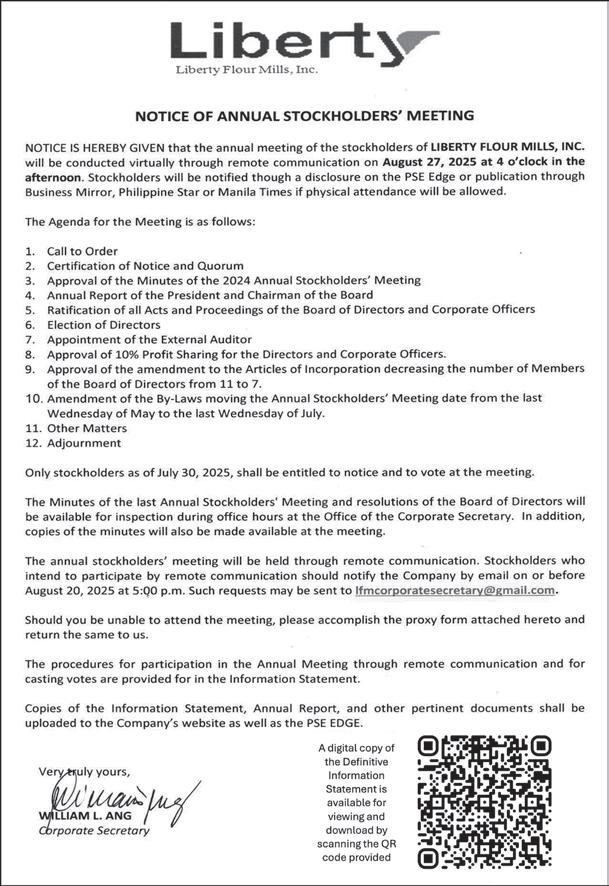
PHOTO FROM WWW.MANILAWATER.COM PHOTO
Banking&Finance
DBP stops financing PUV modernization program

By Reine Juvierre Alberto @reine_alberto
THE Development Bank of the Philippines (DBP) has hit the brakes in financing the modernization of public utility vehicles (PUVMP) of the national government.
DBP President and CEO Michael O. de Jesus said the bank suspended its “Program Assistance to Support Alternative Driving Approaches” (Pasada) financing program earlier this year.
in route assignments that affected borrowers’ payment capabilities. “A mayor can change a profitable route to a less profitable one. That affects the payment capability.”
Last year, the DBP ceased lending in Metro Manila and in areas without an approved route plan.
the purchase of brand-new buses, mini-buses, public utility jeepneys, utility vehicle express units, combustion engines and other compliant transport technologies based on standards set by the LTFRB, the OFG and the Department of Transportation.
de Jesus said.
While net interest from lending bolsters DBP’s earnings, de Jesus said the bank is on track to achieve its P5-billion income target for the year.
“Right now, we’re about half of that [as of the second quarter],” he added.
The DBP’s non-performing loan (NPL) ratio currently stands at around 7 percent, higher than the industry average. De Jesus attributed this to the bank’s legacy loans given its developmental mandate.
“We had a very poor experience with the jeepney modernization. Our past due in that field went up to as high as 40 percent so it wasn’t good for us,” de Jesus told reporters on the sidelines of an event last week.
“There are a lot of issues,” de Jesus said, pointing to the changes
Why a globally diversified portfolio matters
THE world is more connected than ever due to business importation, social media, AI and continuous advancement of technology. With the recent changes in the global landscape of policies and leadership both in developed and emerging economies, we saw the volatility in the global indices in the past six months while also seeing the strength and stability of large cap companies.
With these things in mind, what are the considerations that we need to consider to build a resilient and globally diversified portfolio?
1. Understand the value of going global. Investing in your local market will be an advantage on data sources and execution benchmarks. However, going global spreads your investment across countries, sectors and currencies thereby reducing short-term volatility and enhancing long-term returns.
2. Identify your investment goals. Knowing the purpose of your investment is important as this will help you decide if your exposure is aligned with you or not. If your goal is still in the long term, you can be more aggressive to maximize growth potential. If you’re investing for the short term, exposure can be more into a conservative type of investment.
3. Choose the right mix of assets. Aim to develop a combination of different asset classes such as combining both local and global money market, equities, fixed income and balanced type of funds. A global positioning could also give you a basket of market opportunities in different asset classes like exposure in US, China, Europe, Japan and other emerging markets in the form of funds investments.
4. Invest consistently and rebalance. Capitalizing the principle of time in the market will help you achieve long-term goals and maximize the compounding opportunity of staying invested. The 30-year average annual return, for example, of the S&P 500 is approximately 9 percent to 10 percent, including capital appreciation and dividend income. While having exposure in various asset classes, re-balancing


the allocation can help you protect your profits as you reach your investment objective like preparing for retirement. If you are still young, an allocation that is heavier on equities can be an advantage while still having percentage in fixed income. As you gradually approach your financial goal, shifting into a heavier exposure on fixed income can be one of your considerations, too.
5. Start small, think global. Always remember that investing is not an overnight thing. Just start with what you have and be consistent and have a global mindset. An investor who started with P5,000 monthly can reach 7-digits portfolio in the next 30 years. If we consider the average historical return of a US Index, the investment portfolio in the long run can reach near-8 digits in value. Always be hungry for learning and be updated on market trends as disruptions will always be there. Being savvy will require reading and joining seminars so that you will see the perspective of various professionals in the investment industry.
Markets will always experience cycles and disruptions. But a savvy investor stays informed, reads regularly, and seeks wisdom from industry professionals.
Attend webinars, read market outlooks, and engage in conversations about financial trends.
Remember, the goal is not just to grow your money but to build a portfolio that’s resilient, relevant, and responsive to a changing world. Start small. Stay consistent. Think global.
Karlo Biglang-awa is a Registered Financial Planner of RFP Philippines. His views herewith do not necessarily reflect those of the BusinessMirror’s To learn more about personal financial planning, attend the 112th RFP program this July 2025. E-mail info@rfp.ph or visit rfp.ph to learn more about the program.
The state-run lender’s Pasada program provides loans to corporations and cooperatives registered with the Office of Transportation Cooperatives, PUVMP participants and those eligible for franchises from the Land Transportation Franchising and Regulatory Board (LTFRB) under the modernization program’s omnibus franchising guidelines (OFG).
The loan will partially finance
RATES of Treasury bills (Tbills) moved sideways on expectations that inflation will ease and amid increased market liquidity ahead the government’s retail Treasury bond (RTB) offering.
During Monday’s public auction, the Bureau of the Treasury (BTr) fully awarded and even upsized the volume of T-bills it awarded to investors, raising a total of P28.4 billion for the national government.
All three tenors were oversubscribed as total tenders reached P87.280 billion, or 3.5 times the initial P25-billion offering.
The strong demand eventually prompted the Treasury to double the accepted non-competitive bids for the 182-day T-bills to P6.8 billion.
This preference for shorter tenors pushed rates for the 91-day T-bills lower at a 5.318 percent average rate—a 7 basis-point-drop from the previous auction’s 5.388 percent. Rates ranged from a low of 5.300 percent to a high of 5.324 percent.
The tenor attracted P32.505 bil-
THE thrift banking arm of Metrobank Group, Philippine Savings Bank (PSBank), aims to raise P2 billion from its latest peso-denominated fixed-rate bonds.
“Net proceeds will provide the bank with access to long-term funding to support its expansion initiatives and further diversify its funding sources,” read PSBank’s disclosure to the local bourse.
The lender said the issuance is the third tranche under its P40-billion bond program. The first two tranches was the P6.3 billion issuance in July 2019 and the P4.65 billion issuance in February 2020.
The bonds will have a tenor of two years and will carry a fixed interest rate of 5.875 percent per annum. The minimum investment amount is P100,000, with additional increments in multiples of P10,000.
PSBank has mandated First Metro Investment Corp. and ING Bank
“It was not successful for the past two years,” de Jesus said.
Still, he said the DBP is open to resuming the lending program.
To make the lending program viable, DBP is considering increasing the required equity from borrowers.
“When you buy a car, let’s say [for] P2 million, you have to increase the down payment. There should be more support; more equity support,”
lion in bids, equivalent to 4.6 times of the P7-billion offering.
Meanwhile, rates for the 182day T-bills averaged 5.535 percent, down by 0.8 basis point from last week’s 5.543 percent. Rates were as low as 5.530 percent to as high as 5.545 percent.
Tenders for the government securities amounted to P29.030 billion—3.4 times the the P8.5-billion initial offering. The Treasury increased the volume it awarded to P11.9 billion.
Lastly, the 364-day T-bills capped at an average rate of 5.637 percent, up by 1 basis point from 5.627 percent. The rate settled between 5.610 percent and 5.645 percent.
Bids for the security hit P25.745 billion, 2.7 times higher than the P9.5-billion offering.
All average T-bill yields were lower than their secondary market counterparts.
The Philippine Bloomberg Valuation (PHP BVAL) rates are 5.415 percent for the three-month tenor,
Income will mostly be driven by lending to infrastructure initiatives, which remains the primary contributor to growth, de Jesus added.
“We’re very selective also in our lending. We noticed a few contractors that have problems with collections and all that. Although we’re active in lending to them, we also have to be very careful because we’re monitoring our past dues,” de Jesus told reporters.
5.557 percent for the six-month debt paper and 5.662 percent for the oneyear tenor as of August 3.
According to Michael L. Ricafort, chief economist at Rizal Commercial Banking Corp., the July inflation data is expected to remain benign, which could warrant further lowering of interest rates.
Local monetary officials, including Bangko Sentral ng Pilipinas (BSP) Governor Eli M. Remolona Jr. and Finance Secretary Ralph G. Recto, have signaled the possibility of a 50-basis point (bps) reduction in the key policy rate this year.
The Monetary Board, where both Remolona and Recto are part of, will convene on August 28 for its ratesetting meeting.
Increased market liquidity also influenced the movement in T-bill yields, as the Treasury will be offering its 31st tranche of RTBs. Recto has said that the government intends to raise about P200 billion during its issuance.
“But our priority is to fix those non-performing loans—to restructure them,” the DBP executive said adding that the state-run lender works with borrowers to extend payment terms when needed. By end of the year, de Jesus said the bank’s NPLs could see a slight increase from where it is now.
“[The 7 percent NPL ratio is] manageable, but we want to lower it,” de Jesus said adding they are targeting to bring the NPL ratio down to 5 percent.
N.V., Manila Branch as arrangers for the upcoming issuance. The selling agents for the offering are PSBank, First Metro, ING, and the Metropolitan Bank & Trust Co.
The bonds will be issued and listed on the Philippine Dealing Exchange (PDEx) on August 18.
In March, the bank booked a net income of P5.21 billion in 2024, a 15 percent increase from P4.53 billion in 2023. This led to the bank’s higher return on equity of 12.4 percent in 2024 from the previous year’s 11.7 percent.
PSBank’s core revenues, consisting of net interest income, service fees and commissions, also rose by 4 percent to P14.11 billion.
Meanwhile, the increase in operating expenses “remained under control” at 4 percent due to cost optimization strategies (See: businessmirror.com.ph/2025/03/03/ loan-growth-asset-devt-boostpsbanks-income/). Cai U. Ordinario
Core business focus helps PBB income hit ₧1.065B in H1
PBB
He said that, moving forward, they aim to continue to grow core income and maintain asset quality. Avante said they also aim to optimize deposit mix to support the bank’s long-term growth.
“The rest of 2025 will likely show better earnings for PBB compared to 2024. Throughout the last 28 years, we have been steadfast in our dedication to serving our clients,” he added. “In the coming years, we will continue to explore opportunities in consumer finance and corporate
“The bank’s P1,065.4 million net income was achieved with the continued expansion of the bank’s core business. The interest differential business showed robust profitability as the bank continued to strengthen client relationships and maintain a healthy interest margin amidst intensify industry competition,” Avante said.
lending while we keep our focus on the SME market.”
Avante said that in the first semester of the year, the PBB was more aggressive in loan provisioning while managing the risks linked to the “volatile economic environment.”
The bank’s loan loss provisions reached P350 million in the first semester of the year, P150 million more than the same period of 2024. Its non-performing loans cover reached P104 percent during the period.
“Had PBB maintained provisioning levels similar to June 2024, net income for the first half of 2025 would have ended at approximately P1,032.0 million, or a 14.1 percent
increase year on year,” Avante said. “This underscores the bank’s commitment to maintaining good asset quality and ensuring adequate coverage to address potential credit risk,” he added.
In the first semester, PBB’s interest income increased of 12.5 percent to P5.83 billion this year from P5.18 billion as of June 2024.
The bank’s net interest income expanded by 10.3 percent to P3.69 billion versus the P3.35 billion recorded in the previous year.
The bank’s core income increased to P1.81 billion while pre-tax preprovision profit grew 11.3 percent growth to P1.76 billion this year from P1.58 billion in 2024. Cai U. Ordinario
THE dollar and other US assets are vulnerable to further selloffs on threats to the credibility of the country’s institutions, strategists and economists said.
US President Donald Trump now has a chance to choose a replacement for Federal Reserve Governor Adriana Kugler following her resignation Friday, creating a dynamic that could undermine Chair Jerome Powell’s influence.
Combined with Trump’s firing of the head of the Bureau of Labor Statistics Erika McEntarfer last week, the risk is investors mark down US assets due to threats to the independence of economic data and monetary policy. Such concerns have already hurt the dollar this year and led some funds to shift away from US bonds and stocks.
“Unfortunately, we are witnessing new serious attempts to concentrate more and more power in the hands of the White House,” said Robert Bergqvist, a senior economist at SEB AB in Stockholm. “All of this justifies increased risk premiums for holding different US assets.”
Concerns over the politicization of US institutions are also coming at a time of evidence for a slowing economy. While the dollar showed signs of a tentative rebound early last week, it fell sharply Friday against every Group-of-10 currency after a weakerthan-expected US jobs report.
The jobs data led traders to amp up bets on Fed easing, with moneymarket pricing implying an interestrate cut next month is more likely than not. The move gathered pace after the resignation of Kugler, who voted to hold rates steady last week, given Trump has been calling for immediate rate cuts.
“US policymaking credibility is increasingly under threat,” said Elias Haddad, a strategist at Brown Brothers Harriman in London, who says the dollar is vulnerable to more
For the month of August, the Treasury plans to raise P100 billion from its issuance of short-term debt papers every Monday. As of endJune, outstanding T-bills sold by the national government amounted to P886.478 billion.
The government’s gross borrowings reached P1.591 trillion in the first half of the year, up by 1.33 percent from P1.570 trillion in the same period last year.
This year, the government plans to borrow a total of P2.545 trillion, with P2.037 trillion coming from domestic sources while P507.408 billion borrowed externally. The national government’s outstanding debt as of end-June has soared to P17.27 trillion, higher by 11.5 percent year-on-year from P15.483 trillion. Reine Juvierre Alberto
Ricafort noted the issuance comes amid uncertainties over Washington’s imposition of tariffs. The latter, which spurred a flurry of trade negotiations, “could slow down the global economy and could support future Fed rate cuts.”

downside. Trump’s effort to pressure Powell and his colleagues to lower rates “undermines the Fed’s independence” while McEntarfer’s dismissal “risks damaging perception of US economic data integrity,” he said. While investors have been positioning for Trump to appoint a more dovish Fed chair—betting on a faster pace of rate cuts from when Powell’s term ends next year—Kugler’s resignation brings forward the potential timeline. Trump’s nominee for the open governorship could move into the chairman role when Powell’s term expires in May.
An early announcement of the next Fed chief could create a “shadow chair” dynamic. The idea is that investors would listen more to the forward guidance of Trump’s pick to replace Powell rather than Powell himself, based on the premise that the former will soon be in charge. Derek Halpenny, a head of global markets research at MUFG in London, said that of the contenders to replace Powell subject to public speculation, National Economic Council Director Kevin Hassett would be “the worst pick for the US dollar given his close association with the President.”
“Until we get an announcement, the appetite for buying back the dollar after Friday’s fall will be limited,” he said. A gauge of the greenback was little changed on Monday, having lost nearly 8 percent this year. Bloomberg
PERSONAL FINANCE
Karlo Biglang-Awa
Art BusinessMirror


Richard Arimado debuts sculptures of his signature skyward-gazing subjects

VISUAL artist Richard Arimado gives his rotund, stylized characters threedimensional forms for the first time, as the 54-year-old is set to introduce his maiden set of sculptures in his newest solo exhibition.
Opening today, August 5, at Galerie Joaquin Rockwell, Arimado’s Chronicles presents the painter’s foray into sculpture. He said in the show’s media preview last week that he finds the new venture exciting.
Masaya, kasi nakakahawak ka ng ibang gamit, hindi lang brush,” said the Manila-born artist.
When he began exhibiting in 2002, Arimado was an artist in search of an identity. He had the talent, good enough to join group shows, but would only paint what was in vogue, be it surrealist landscapes or comic-style portraits.
It was during a trip in Mindoro when his careerdefining muse finally arrived. After alighting a ship, he boarded a jeepney overloaded with passengers that spilt onto the roof, him included. During the trip, he remembers a plane flying over them, catching everyone’s attention as they gazed in unison. That moment inspired Arimado to start painting from what would become his signature perspective and style: a bird’s eye view of a fleshed-out local setting from yesteryears.
Arimado has always been drawn by the glory of old Manila, being a son of the city. Painting the county’s most prominent cultural symbols, like old churches and kalesas, was second nature to him. Aside from experience, the artist also researched


the period to ensure historical accuracy, down to the details of his subject’s clothing.
In 2013, he introduced the series in a solo show to great acclaim. Throughout the years, his audience widened as did the scope of his perspective. The shots pulled farther and farther back to capture supplementary details other than the curious stares of his subjects, as more structures and characters entered the frame.
Shadow play has become an important facet, too, as Arimado studies how light interacts and passes through different objects and materials, whether through the thin sheets of a kite or the thick layers of leaves. All these bathe under the artist’s unique palette, mostly pastel, with a combination that almost visualizes the feeling of nostalgia.
In Chronicles, the artist opens a new chapter of his story. He evolves into a sculptor, featuring his painted subjects now in ceramic and brass. Arimado started by experimenting with epoxy resin and his characters in crowds, before refining his works using more premium materials and electing to create the subjects individually. The choice allowed his sculptures,



with an average size of eight to ten inches, to breathe and stand out, while holding their signature pose of looking up. According to Arimado, the simple gesture also touches on faith and spirituality. His characters look up not just out of curiosity but of gratitude as well.
Nakatingala sila para rin sabihing, ‘Thanks to God,’” the artist said.
In turn, viewers of Arimado’s artworks may somehow catch some of this sense of superiority. There’s an authoritarian impression involved in capturing a crowd’s attention from a high position, looking over them, as they take a pause from their routines to return their gaze. The artist recognizes that not a few of his collectors place his artworks at the entrances of their houses and offices to be greeted by this sensation.
Arimado’s Chronicles opens tomorrow, August 5, at Galerie Joaquin Rockwell, and will run until August 17. The art space is at the R3 Level of Power Plant Mall, Rockwell Center, Makati City.
For inquiries, contact 0915-4145502 or e-mail galeriejoaquin@gmail.com.
LEO (July 23-Aug. 22): High energy will meet with resistance when competitive action is in force. Take a moment to assess the situation and map out a plan before engaging in battle. Time is on your side, and patience will be necessary to outmaneuver any opponent you encounter. Knowing when to compromise will help. ★★★★★
VIRGO (Aug. 23-Sept. 22): Networking events will alter your perspective on professional progress. An interesting turn of events will allow you to utilize your skills in more ways than you thought possible. Select a path that interests you and engage in conversations with those who are already heading in that direction. ★★ LIBRA (Sept. 23-Oct. 22): Participate in events that offer insight into how you can best contribute and make a difference. A shift in how you think and plan your actions will require a unique approach and an influx of people to join your team. Establish yourself as a frontrunner, but don’t jeopardize your physical or emotional well-being.
SCORPIO (Oct. 23-Nov. 21): Avoid letting someone take advantage of you. Don’t sell yourself short. What you sacrifice will lead to other limitations on your time, skills and ability to move forward. Be bold and set standards that are worthy of your talents. Trust and believe in yourself, and move on until you find someone who values you. ★★★★
SAGITTARIUS (Nov. 22-Dec. 21): Keep tabs on job postings and career options. Consider how to expand your qualifications to help guide you in a direction that shows promise and offers opportunities for financial gain. Domestic problems will arise if there is no compromise. If you can’t meet in the middle, you may have to rethink your long-term plans. ★★★
CAPRICORN (Dec. 22-Jan. 19): Emotions will overflow if you let others drag you into their drama. Be a good listener, but maintain a distance from any form of intervention. You’ll gain more ground if you focus on money, contracts and partnerships with those who share your agenda. ★★★
AQUARIUS (Jan. 20-Feb. 18): Emphasize your talents and utilize them to get the best results. Taking the initiative to customize your approach will set you apart from any competition you encounter. Direct talks are preferable when receiving information that comes from unfamiliar sources. ★★★
PISCES (Feb. 19-March 20): Get in the game. Posturing your way to prominence will make a difference. By showing leadership qualities, you’ll rise to the top in any competitive situation you find yourself in today. Stand tall and refuse to let anyone

Show BusinessMirror
The soothing music and good heart of Jojo Mendrez

ENEROSITY, kindness and positivity
Gseem to be Jojo Mendrez’s love language. After being entangled in unnecessary controversies in recent months, Mendrez is willing to take a different path in his pursuit of true contentment and happiness.
Seriously wanting to make a dent in the local music business, Mendrez has decided to collaborate with Rams David’s management team to further strengthen his presence and chart future professional plans. “I’m happy to be part of the Artist Circle family and I look forward to a meaningful and fruitful working relationship with my new team. I know I’ll be in good hands,” enthused Mendrez.
For his part, David welcomes Mendrez with open arms. “Jojo and I hit it off very well during our first meeting. I feel that we have so many things to work on as far as his singing career is concerned. I am also very glad that Jojo is a being pushed by Star Music, and this early we are starting to chart his progression as a recording artist.”
“Star Music is taking good care of me. In fact, we might be recording a Christmas song very soon,” added Mendrez, who reiterated that he will continue to be active on his personal social media accounts to share his blessings and surprise his followers with his monetary and other giveaways.
“I find joy in making people happy, in reminding people that there are still good hearts and good souls in our midst, and sometimes if we are in the right place and at the right time, life still has happy surprises for us,” he intoned.
The world is getting more and more inherently selfish and people tend to be fundamentally greedy but Mendrez believes otherwise. “Perhaps society continues to shape us to want more and more, that’s why people tend to focus more on what they lack instead of looking at what they have that others do not. That’s why I always tell myself to share whatever blessings I have, and to continue to be kind to people.” Mendrez strikes us as someone who is in search of his true passion, someone who wants to be truly part of a worthy passion. So when he stumbled upon show business and positioned himself to be part of
his passion and even went one step further—he connected it to a purpose.

‘The Fantastic Four: First Steps’ holds its lead atop North American tills
LOS ANGELES—Marvel’s first family stumbled in theaters in its second weekend, but still held on to the top spot at the box office.
The Fantastic Four: First Steps earned $40 million from 4,125 North American theaters, a 66 percent drop from a healthy $117.6 million debut. The film was accompanied by comedies The Bad Guys 2 and The Naked Gun in the top three box office rankings. The superhero movie dipped significantly more than Marvel’s previous film, Thunderbolts, which took a 55 percent dive in its second weekend.
First Steps is the last major blockbuster of the summer. It added nearly $40 million internationally in its second weekend, bringing thefilm’s global total to $369 million. The movie’s box office drop off was surprising given its strong reviews, said Paul Dergarabedian, senior media analyst for the data firm Comscore.
Though the movie’s debut weekend may have given box office results a strong push toward the $4 billion summer benchmark, August is off to a slow start, he said.
“It’s a tough lift, but we might be able to get there. It really means that all the films are gonna have to stand on their own,” Dergarabedian said. “It’s gonna be about getting great reviews, having that staying power, that longevity in the marketplace.”
feel privileged to be able to have these God-given gifts that allow me to delve into music deeply and share my songs to the general public. The reason why I feel a certain kind of affirmation, some kind of a positive emotion every time I finish recording a song and every time I hear it being played,” he shared. Mendrez added, “Perhaps that is also where this passion of giving comes from. When I am able to share my songs, and these songs are are able to touch others, then I guess I have somehow given a part of me to others. My music continues to help inspire me to strengthen my personal outreach activities.”

THE red carpet sparkled brighter than ever as GMA Gala 2025 took center stage over the weekend— bringing together the biggest and brightest stars in Philippine entertainment for one truly extraordinary and unforgettable night. This year’s gala was even more special. As GMA Network celebrates its 75th anniversary, it also marks a milestone for Sparkle GMA Artist Center, which celebrates its 30th year of developing and honing worldclass Filipino artists. Together, these milestones honor decades of excellence, integrity and passion for inspiring and entertaining Filipinos.

The singer, who got most of his wealth from his many business ventures including real estate, was perturbed for a few seconds when asked if he plans to set aside recent underwhelming controversies involving him and some has-been male celebrities, which many still believe were part of a gimmickry-
forward. I have learned the hard way that as a musical
learn to practice a certain level of discretion if I want to elevate my artistry to a respectable and premium level. I’m slowly learning that my brand of music should never be sidetracked by cheap gimmickry in order for it to prosper.”
Mendrez also reiterated that he will continue to practice random acts of kindness. “I guess that is already innate me. I find true joy when I make people happy, when I become an instrument for people to

GMA Gala 2025, dubbed ‘Most Spectacular Event of the Year’
More than a celebration, the GMA Gala was also a fundraising event supporting the GMA Kapuso Foundation. On July 24, GMA executives, stars, clients and partners came together for a special pre-gala event at the Okura Hotel in Manila, setting the stage for the GMA Gala 2025 During the event, GMA and Sparkle donated P2 million to aid flood victims of recent typhoons and the Southwest Monsoon. The donation was officially turned over by GMA Network senior vice president Atty. Annette GozonValdes and Sparkle first vice president Joy Marcelo to GMA Kapuso Foundation executive vice president and COO Rikki Escudero-Catibog. BingoPlus Foundation also contributed an additional P500,000 to support GMA and Sparkle’s collective relief efforts.
As GMA Gala 2025 honored the media giant’s legacy, it also shone a spotlight on GMA’s exciting collaborations with trailblazing names in fashion, beauty, lifestyle, media, and technology. Sparkle GMA Artist Center, the network’s premier talent management arm, has been teasing major announcements and exclusive previews, generating massive excitement across digital platforms. And as the excitement continues to build, more behind-the-scenes and other pre-gala highlights were made available—giving fans VIP access to the stars’ preparations leading to the event. More updates on GMA Gala 2025 can be found at www. gmanetwork.com.
THE iconic Filipino fast food brand known for bringing joy to every meal, Jollibee has officially launched its all-new app, redesigned to deliver a smoother and more rewarding ordering experience like no other. This reimagined app brings customer favorites like Chickenjoy and Jolly Spaghetti closer with just a few taps, delivering ultimate convenience and delight to today’s fast-paced lifestyles. The app officially debuted on July 28 with a special event held at Whitespace Makati, which gave guests a modern and immersive experience that featured fun games and activities showcasing the app’s innovative design and user-friendly features.
The all-new Jollibee App was designed with our customers’ needs and lifestyles in mind. We know they value convenience and great deals, so we made sure the app delivers exactly that, plus the fun and joy Jollibee is known for,” said Charisse Sumulong, marketing director for digital commerce and loyalty. “From streamlining the ordering
Newcomer comedy The Bad Guys 2 earned second place at the box office this weekend, with $22 million from 3,852 North American theaters. That was on par with projections and also in line with the first movie in the series, which brought in $23 million in 2022.
Paramount’s slapstick comedy, The Naked Gun, also in its debut weekend, snagged the third box office spot, earning $17 million from 3,344 locations.
Jim Orr, president of domestic distribution for Universal Pictures, said the solid debut for The Bad Guys 2, coupled with strong audience reaction scores, “should point to a very long, very successful run through not only the rest of the summer, but really, I think into the fall.”
James Gunn’s Superman, which opened four weekends ago and already crossed $550 million globally, earned $13.8 million domestically this weekend, taking the fourth spot. Jurassic World Rebirth followed with $8.7 million.
The horror movie Together had a strong debut weekend, coming in at sixth place and earning $6.8 million domestically, proof that August is a month for edgier and off-beat films, Dergarabedian said.
“That’s what this month is about. It’s not just about box office,” Dergarabedian said. “It’s also about providing really interesting, rewarding movie-going experiences for audiences.”
Dergarabedian said he expects highly-anticipated movies hitting theaters in the next few weeks— including Freakier Friday, and Zach Cregger’s horror movie Weapons to give August a needed boost. The box office is currently up 9.5 percent from last year. AP
process to offering sulit deals and promos, we want every user to feel how easy and exciting it is to order their Jollibee favorites anytime, anywhere.” To further spread the joy and excitement of the all-new Jollibee App, the brand has also introduced its newest celebrity ambassadors, Brent Manalo and Mika Salamanca, the big winners of Pinoy Big Brother: Celebrity Collab edition . Sobrang excited kami ni Mika na maging ambassadors ng all-new Jollibee App” said Brent. “Blessed kami na makakuha ng ganitong opportunity, and we’re very excited to order, too!” More than just a tech upgrade, the all-new Jollibee App reflects the brand’s long-standing commitment to customer convenience. From now until October 27, 2025, users can enjoy exciting app-exclusive deals. All users can get free delivery for a minimum order of P400. New users can also receive a free Peach Mango Pie (minimum of P100), and a free Chickenjoy Super Meal
(minimum of P600). The app is available as a

GMA Gala clients and partners
FROM left: GMA executives Atty. Annette GozonValdes and Rikki Escudero-Catibog, BingoPlus Foundation executive director Angela CaminsWieneke, and first vice president of Sparkle GMA Artist Center and Talent Development & Management Joy Marcelo
NEW Jollibee brand ambassadors Brent Manalo and Mika Salamanca
Filinvest Land is Employer of the Year at 2025 Stevie® Awards
Filinvest Land, Inc. (FLI), one of the country’s trusted real estate developers, proudly joins global giants like IBM and DHL Global Forwarding as a distinguished winner at the 2025 Stevie® Awards for Great Employers. Securing the Bronze Stevie® Award in the Employer of the Year category for Real Estate, FLI uniquely represents the Philippines among renowned global corporations.
This global recognition complements Filinvest Land’s recent acknowledgment as one of the Philippines’ Best Employers for 2025 by the Philippine Daily Inquirer and Statista, solidifying its reputation as a company genuinely built by people, for people.
The Stevie Awards for Great Employers recognize the world’s best employers, human resources professionals, teams, and HR-related achievements and solutions that create exceptional workplaces. Filinvest Land stands out among nominees across 35 nations for its robust, data-driven, peoplefirst HR strategy.
FLI’s comprehensive approach significantly enhances every stage of the employee journey—from talent acquisition and professional development to employee engagement, recognition, and retention. These focused efforts have solidified FLI’s reputation as an outstanding

employer where individuals not only advance professionally but also feel genuinely valued.
“We grow because our people grow,” emphasized
Tristan Las Marias, President and CEO of Filinvest Land. “This recognition reaffirms that our greatest assets are our employees. Their passion drives our continued success in building lasting dreams for Filipinos.”
Filinvest Land’s exceptional recruitment approach resulted in outstanding hiring efficiency in 2024, achieving a remarkable 95 percent on-time hiring rate and an impressive 97 percent job offer acceptance rate, empowering its workforce to lead, innovate, and excel.
Beyond recruitment, FLI invests significantly in employee development, providing more than 45 training hours annually per employee in partnership with esteemed institutions such as the Asian Institute of Management. Gender inclusivity is deeply embedded in its leadership succession planning, with women comprising over half of its future leadership pipeline.
Further distinguishing its employer brand, Filinvest Land prioritizes holistic employee wellness through comprehensive health initiatives, including free mental health counseling and full HMO coverage utilization.
Programs such as Filinvest Listens, an employee feedback initiative with a remarkable 100 percent participation rate, underline the company’s commitment to transparency, responsiveness, and trust. Celebrating employee loyalty is also integral to FLI’s culture, demonstrated by honoring 56 long-standing

the difference between life and death,” said Engr. Liza B. Silerio, SM Supermalls Vice President. “This is our commitment to making malls not just safe spaces, but resilient communities.”
Round 2 of the F.C.C.
IN the world of motorsports, greatness doesn’t just happen, it’s built lap by lap, round by round and in Round 2 of the F.C.C. Honda Pilipinas Dream Cup (HPDC), that pursuit of greatness was on full display. From dramatic overtakes to high-stakes rivalries, young riders from across the country returned to the track more focused, more fearless, and more determined to rise.
As part of Honda’s long-standing tradition of discovering and nurturing passionate Filipino racers, the HPDC isn’t just a race series, it’s a platform built for dreamers, for young thrill-seekers aged 10 to 15 years old who have the heart and hunger to become champions. Round 2 proved exactly why this program matters: it raises talent, sharpens skill, and prepares the next generation of riders for the global stage. The intensity of the F.C.C. Honda Pilipinas Dream Cup surged in Round 2 at Tarlac Circuit Hill, as riders went all out in a heated battle for pole position. With weather conditions shifting unpredictably throughout the day, the challenge became not just about speed—but also about precision, adaptability, and strategy.
Travis Canoy, Jr., Ronald Galzote and Vash Travis Aguilar
employees last year, some marking over three decades of dedicated service.
This focus on retention and career advancement transforms Filinvest Land into a nurturing community, deeply invested in each employee’s career journey and personal fulfillment, continually shaping a promising future for its people.
Filinvest Land’s achievements stand out not only for their scale and impact but for their deep alignment with the company’s mission. Each initiative, from strategic hiring to wellness and recognition, reflects FLI’s belief that its people are the true drivers of its success.
“For us, this award isn’t just a win; it’s a resounding echo of our core belief,” states Bing Paraguas, Group Head of HR Strategy and COE and First Vice President. “It’s a powerful validation that our people-first strategy isn’t just a philosophy – it’s the very foundation of our ambition in building a world-class organization. This honor fuels our relentless dedication to ensuring every individual in our team discovers genuine growth, unlocks continuous development, and creates a lasting impact within an environment where inclusion isn’t just a word, but how we thrive.”
This win forms part of a larger milestone for the Filinvest Group with FLI’s parent company, Filinvest Development Corporation (FDC), also garnering multiple honors at the 2025 Stevie Awards for Great Employers. FDC was recognized with two Bronze Stevie® Awards for Achievement in Recruitment and Talent Acquisition and Achievement in Organizational Culture, as well as a Silver Stevie® Award for Achievement in Leadership Development. These accolades underscore the group’s collective commitment to building empowered teams and sustaining a strong, value-driven culture across all its companies.
As Filinvest Land continues to grow its nationwide footprint and pursue excellence, its commitment remains clear: to Build the Filipino Dream not only through homes and communities, but through every career it shapes and every life it helps uplift.
In parallel, ARISE Private Sector Alliance for Disaster Resilient Societies – Philippine Network together with SM hosted a webinar series on basic non-life insurance to educate private sector members and micro, small and medium enterprises for key risk transfer mechanisms in disaster risk reduction strategies. SM also supported the Ready, Set, Resilient: Youth DRR Training held last June 11 at the RED Training Center in Pasig City. Headlined by ARISE Philippine in partnership with the Pasig City Disaster Risk Reduction and Management Office and Local Youth Development Office, the oneday workshop aimed to empower young leaders to take active roles in disaster risk reduction and resilience efforts.
Following this, SM Supermalls and SM GUUN Environmental Company addressed 180 ARISE Philippines members, partners and advocates in the Waste Management Webinar: Journey Towards a Waste-Free Future in a bid to encourage collective effort for a cleaner, greener, and more resilient future.
SM through ARISE Philippines next participated in the Department of Interior and Local Government-led Dagyaw Open Government and Participatory Governance Town Hall Meeting themed “BaBaYi: Kababaihan Bagtasin ang Ekonomiyang Likas-Kaya” for inclusive entrepreneurship.
To further strengthen emergency response capabilities, SM Supermalls hosted an Incident Command System (ICS) training for SM Mall of Asia locators on July 28. ICS is a standardized approach to command, control, and coordination used during emergency response operations. It enables multiple stakeholders—mall management, tenants, and responders—to work together efficiently and effectively during crises.
Capping off the celebration, SM Supermalls, in partnership with the Bureau of Fire Protection, conducted a Fire Square Roadshow simultaneously in selected malls on July 31. This multi-mall event will feature interactive exhibitions showcasing fire extinguishment techniques, first aid and bandaging, knot tying, rappelling, and more—bringing essential emergency skills directly to the public in an engaging and educational format.
Converge continues push for responsible digital habits among the youth with PIGLET
LEADING Philippine broadband and technology provider Converge ICT Solutions Inc. has once again staged another session of its Project PIGLET (Privacy Integration through Guided Learning of Emerging Technologies) initiative in its continuing effort to educate the youth on protecting themselves online.
Spearheaded by the Corporate Governance and Data Privacy (CGDP) Group of Converge, Project PIGLET was recently conducted for 80 Grade 6 students of the Timoteo Paez Elementary School in Malibay, Pasay City. Notably, 20 parents also attended the program to hear from the company’s privacy officers on how to guide their children online.
“As a fiber broadband company, and especially now as we evolve in becoming a technology company, we hold fast to our advocacy on safe and responsible use of technology. Artificial intelligence, for example, is a transformative tool that unlocks so many opportunities. But in the wrong hands, they may be used to endanger and intensify crimes such as OSAEC (online sexual abuse and exploitation of children,” noted Atty. Laurice EstebanTuason, Converge Corporate Compliance and Data Protection Officer.
“This program is our way of giving back to children, parents, and teachers especially with everyone having gadgets today. The internet and these gadgets are crucial tools for learning, especially during the pandemic. But we have to acknowledge that they pose dangers as well, and based on studies, children are the most vulnerable to them. That’s why we target them as our audience,” underlined Converge Data Privacy Manager Atty. Janine Villabeto - Solete. Compliance Officer for Privacy Larry Caduada imparted lessons on creating safe online practices through

The Pasay City school is the third learning institution engaged by Converge for its Project PIGLET initiative, which was launched in 2024.
“Now that we’re living in a digital world, our children need to be protected. The risks for them now are not just for their physical safety but psychological and emotional, which can be exposed when they’re online and interacting with so many agents. We’re grateful Project PIGLET was able to explain how they can navigate the online space, through story-telling,” said Timoteo Paez Elementary School Principal Jeanne Rejuso. In recognition of this advocacy push to teach the youth about responsible internet use, Project PIGLET was recently named a finalist to the National Privacy Commission’s Privacy Initiative of the Year, announced during the Privacy Awareness Week in June. The staging of Project PIGLET is just one in a series of activities held in celebration of Privacy Awareness Week (July 14 to 25, 2025) at Converge. Executives of Converge conveyed their messages of support and continuing commitment to data privacy at the opening activity held July 14, followed by games, a photo booth, and food carts

FFCCCII Leads Major Food Aid Distribution Across Storm-Hit Regions
DEMONSTRATING swift solidarity, the Federation of Filipino Chinese Chambers of Commerce and Industry, Inc. (FFCCCII) and allied civic groups have rallied P10 million in emergency aid for communities devastated by the recent catastrophic typhoon flooding nationwide.
The initiative, coordinated under the Pilipino at Tsino Magkaibigan Foundation, saw among its on-going major deployments on July 31, 2025. FFCCCII President Dr. Victor Lim and other Filipino Chinese community civic leaders personally delivered 10,000 bags of rice to Manila Mayor Francisco “Isko Moreno” Domagoso, providing immediate sustenance to displaced families in the capital. The P10 million fund, immediately pooled by FFCCCII and leading Filipino Chinese civic and cultural organizations, is actively channeling vital relief resources to hardest-hit areas across Metro Manila, Bulacan, Pampanga, Tarlac, Pangasinan, La Union, and other provinces. Relief operations prioritize urgent humanitarian assistance to evacuation centers and isolated communities.
Last month, FFCCCII President Victor
Lim also led Bacolod Filipino Chinese Chamber of Commerce and other Negros Filipino Chinese Chambers to donate construction materials to help rebuild thousands of homes affected by Kanlaon volcano disturbances in five Negros cities and municipalities, such as La Castellana town, La Carlota City, Bago City, Kanlaon City and Moises Padilla town. Victor Lim and Bacolod City Mayor Greg Gasataya also presided over donation of a new 7-storey, 100-feet hydraulic high-rise ladder capacity modern fire truck to the Bacolod Filipino Chinese Volunteer Fire Brigade from the Dr. Manuel S. Lo family of Grace Pharmacy Bacolod and Merzci Bakeshop.
“This outpouring of support reflects our community’s unwavering bayanihan spirit,” stated FFCCCII President Victor Lim. “When any Filipinos suffer, we should all stand united—delivering not just aid, but hope for fast and full recovery.”
The mobilization underscores the Filipino Chinese community’s deep commitment to national resilience, targeting both immediate relief and longterm rehabilitation for thousands affected by the disaster.
Honda Pilipinas Dream Cup Pushes Young Riders to New Heights
were very aggressive, and three riders were willing to set their pace early with a blistering lap time and Travis was able to get the Pole Position with 1:19.499 respectively, followed closely by Galzote and Aguilar—all within fractions of a second from each other.
Race 1 was all about strategy and mental toughness. #3 Travis Canoy made a fearless move from the start, however he slides and crashed in Turn 1 - Did Not Finish (DNF) the race.
Meanwhile other competing riders took advantage of the situation with Rider #13, the youngest rider Melchyyzedek Jacob Ngo took 3rd Place position for the first time, while #5 Ronald Galzote, claiming second place before eventually challenging for the win. Meanwhile, #11 Renzzy Gabrielle Vigo in 1st Place Position held his ground in a tight battle that had fans on edge all the way to the finish. With the championship points on the line, Race 2 raised the intensity. Riders showed smarter line choices, quicker reactions, and better composure under pressure. A dramatic final lap saw a two-way battle down the straight, with Travis Canoy and Renzzy Gabrielle Vigo exchanging positions narrowly edging out the win by #3 Travis Canoy in the end.
The HPDC continues to prove that talent knows no age and that with the right platform, young Filipinos can rise to any challenge. For many riders, HPDC Round 2 was more than just a competition. It was a personal milestone, a reminder that they’re no longer just aspiring riders but emerging champions. Backing this journey is a powerhouse lineup of partners who share the vision for the future of Philippine motorsports: F.C.C. Philippines, HJC Helmet, Alpinestar Philippines, MTRT Philippines Racing Boy, NGK Spark Plugs, RK Takasago Chains, and Romy Lanceta Trucking Corporation. Their unwavering support powers the program—on and off the track—as Honda Philippines Inc. continues to shape and raise the next generation of racing champions. For more information, visit www.hondaph.com. Stay updated on Honda’s newest products and promos by following Honda Philippines, Inc. on Facebook at facebook. com/hondaph, Instagram at instagram.com/hondaph_mc/, YouTube at Honda Philippines_Motorcycle, and TikTok at tiktok.com/@hondaphilippines. For inquiries, contact (02)8581-6700 to 6799, and 0917-884-6632.

In line with the theme of KUMIKILOS Para sa Kahandaan, Kaligtasan at Katatagan,
Bank of England set to cut interest rates amid economic slowdown, rising inflation concerns
By Tom Rees & Craig Stirling
THE Bank of England is likely to deliver another interest-rate cut on Thursday, as tax hikes and wary consumers hamper Britain’s economy and prompt firms to slow hiring.
The Monetary Policy Committee is widely expected to reduce its benchmark rate by 25 basis points, to 4%, sticking to its oncea-quarter pace of cutting.
In contrast to the caution of the US Federal Reserve, which kept borrowing costs unchanged again on Wednesday, the BOE is looking through the fastest inflation in 17 months and focusing instead on growth worries after back-to-back contractions in gross domestic product and mounting job losses over the spring.
Employers have cut demand for workers after being hit by measures in the Labour government’s first budget, which included a £26 billion ($34.5 billion) increase in payroll taxes and a sharp increase in the minimum wage.
“We think the central bank will be cautious about signaling more rate cuts are in the offing – inflation has surprised to the upside and price expectations are elevated,” said Dan Hanson, Bloomberg’s chief UK economist.
BOE Governor Andrew Bailey has continued to guide markets toward gradual rate cuts and maintains that the recent jump in price pressures will be temporary. Officials will unveil a quarterly update to forecasts after inflation turned out hotter than they’d predicted back in May.
Investors will also be looking for any hints on how quickly the UK central bank plans to run down its balance sheet of bonds ahead of its next decision on quantitative tightening in September.
Speculation has mounted that the BOE will limit the amount of active gilt sales after signs of strain in long-dated UK bond yields.
Elsewhere, trade data from multiple nations and a potential rate cut in Mexico are among the week’s highlights. Meanwhile, after President Donald Trump’s latest tariff barrage, some countries will attempt to renegotiate
US levies before they kick in on August 7.
What’s coming up in the global economy:
US and Canada
THE US economic calendar lightens up after key reports showed bigger cracks forming in the job market after a slowdown in economic growth during the first half of 2025. On Tuesday, government data will likely show the trade deficit in goods and service narrowed in June.
Preliminary figures indicated the value of goods imports by the US declined for a third straight month, marking a reversal from the first quarter when companies aggressively stockpiled foreignmade merchandise ahead of expected higher tariffs. Also on Tuesday, the Institute for Supply Management’s July survey of service providers will provide clues on how well industries that represent the biggest slice of the economy are holding up. The group’s manufacturing survey showed the sharpest contraction in nine months against a backdrop of higher import duties and softer demand.
Following a disappointing July jobs report and the Federal Reserve’s decision to hold rates steady, investors will monitor comments from a handful of central bankers this week. Lisa Cook, Susan Collins, Mary Daly, Raphael Bostic and Alberto Musalem are slated for public events.
Meanwhile, investors will watch for any hints from the White House on who might be nominated to fill Adriana Kugler’s seat, after the Fed board member announced on Friday that she would step down.
Even before her early departure, Treasury Secretary Scott Bessent had suggested the administration might propose a replacement for Kugler who’d then be elevated into
the post of Fed chair when Jerome Powell’s term ends in May.
Jobs data for July will offer the latest snapshot of the Canadian job market after a surprise jump in employment in June suggested resilience. International goods trade for June may show weakened exports to the US as tariffs start to reshape trade flows.
The US trade data will indicate the proportion of Canadian exports being sent there under the USMCA agreement, a tariff carve-out.
Canada’s minister in charge of US trade said Sunday that Prime Minister Mark Carney and Trump are expected to talk “over the next number of days.”
“We think there is an option of striking a deal that will bring down some of these tariffs and provide greater certainty to investment,”
Dominic LeBlanc told CBS’s Face the Nation, just days after the two governments failed to come to an agreement before an Aug. 1 tariff deadline.
Asia
KEY readings on trade, economic growth and inflation are scheduled across the region. The releases get under way on Tuesday, with a reading of July consumer prices for South Korea, set to show little change from a year ago.
Inflation reports are also on tap for the Philippines the same day, followed by Taiwan, Vietnam and Thailand on Wednesday. Price growth has largely been contained across the region, and central banks are looking to cut rates.
Second-quarter GDP is in the spotlight on Tuesday in Indonesia, seen broadly unchanged from the prior year, and on Thursday in the Philippines, where economists expect an uptick.
Trade is in focus following Trump’s Aug. 1 reciprocal levies announcement. Frontrunning to get ahead of these tariffs has elevated exports for many countries, so the readings for July may be among the year’s strongest before an anticipated pullback.
The insight into trade activity begins Wednesday with figures from Vietnam, which in June notched another month of doubledigit growth.
Australia and China—which has faced the steepest trade restrictions on sales to the US— report export data on Thursday. Semiconductor powerhouse
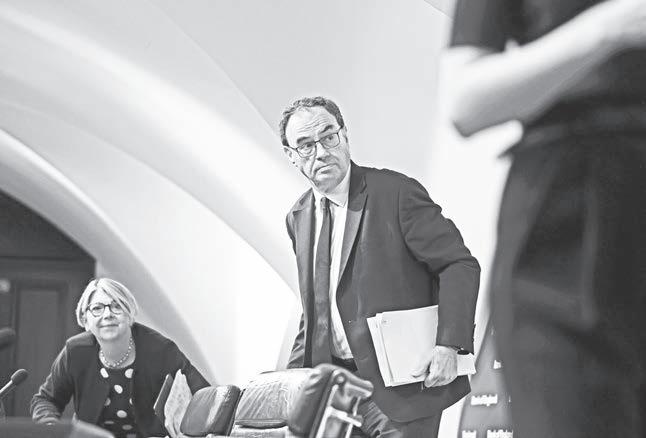
Taiwan closes out the week the following day.
Elsewhere, Malaysia will disclose July industrial production on Thursday, which should provide more insight into how Southeast Asian economies are handling the tariff uncertainty after PMI data showed the weakest activity outlook since the pandemic.
New Zealand reports labor market data, Singapore releases June retail sales, and Japan will report an array of financial data including foreign bond buying and household spending throughout the week.
Meanwhile, India’s central bank meets Tuesday, with Bloomberg Economics anticipating a dovish pause, holding the repo rate at 5.5% after easing 100 basis points this year.
This weekend, Indian Prime Minister Narendra Modi urged citizens to buy locally made good to cushion the economy during heightened global uncertainty— and just days after Trump slapped a 25% tariff on Indian exports to the US.
Europe, Middle East, Africa
SWITZERLAND , shocked at Trump’s imposition of a 39% tariff, will be in focus on Monday as markets reopen there after a national holiday. Officials are likely to redouble efforts to secure a trade deal in the coming days.
Swiss inflation data is also due on Monday, with another monthly outcome of just 0.1% anticipated. An index of Swiss purchasing managers will also be released.
In the euro zone, various industrial and trade numbers from the four biggest economies are on the schedule, pointing to the state of
manufacturing in June.
Those reports could potentially lead to revisions in national and regional GDP data.
On Wednesday, Eurostat revealed that the euro-area economy expanded 0.1% in the second quarter. French unemployment will be released on Friday.
The European Central Bank is on a summer break with little on its schedule. Bank of Finland Governor Olli Rehn is the exception; he’s due to speak on Thursday at a seminar featuring former BOE chief Mervyn King.
In an interview published Sunday, ECB Governing Council member Christodoulos Patsalides said that “the euro-zone economy appears resilient, despite difficulties internationally.”
Separately, his Irish counterpart Gabriel Makhlouf said borrowing costs are now at a level where the ECB can play a “waitand-see-game” on future rate decisions.
In Turkey on Monday, annual inflation data are expected to continue to show easing in July, to 34% from 35% the prior month.
Monthly inflation is seen quickening, though, after a series of tax hikes and administrative price increases—which officials have characterized as “temporary.”
Rate cuts may continue when the central bank meets in September.
Swedish inflation data are due on Thursday. The CPIF measure targeted by the Riksbank is anticipated by economists to surge above 3%.
Aside from the BOE, some other monetary decisions are scheduled:
On Tuesday, Lesotho’s MPC is likely to cut its policy rate by 25 basis points to 6.75% in a bid to
boost an economy devastated by Trump’s tariff determinations. Its textile industry has been at a standstill because orders from the US, its largest export market, have dried up.
The Czech central bank is expected to keep rates unchanged at its policy-setting meeting on Thursday.
Serbia’s central bank may do likewise, extending an almost year-long pause after inflation surged again in June.
On Friday, Romania’s central bank is expected to keep borrowing costs unchanged as it assesses the impact of tax increases on inflation and the economy.
Latin America
COLOMBIA’S central bank posts its quarterly inflation report and July meeting minutes on Monday and Tuesday, respectively. The report may walk back the previous quarter’s messaging about gradual policy easing given sticky inflation, surprising economic momentum, and concern over the nation’s deteriorating fiscal outlook. After a split decision to hold the key rate at 9.25%, analysts and investors will be eager to pore over the minutes. Economists surveyed by Bloomberg see BanRep— along with Brazil’s BCB—easing into 2027.
Brazil’s policymakers on Tuesday post the minutes of their July 29-30 meeting, where they voted unanimously to hold the policy rate at 15%. Little deviation on guidance and the hawkish tone seen in the post-decision statement likely puts off any easing until 2026.
Few analysts doubt that Banxico has a quarter-point cut ready to go for its August meeting on Thursday—and that was before Trump extended Mexico’s current tariff rates for 90 days. All but two of the 37 analysts s urveyed by Citi’s local unit are looking for just that—a move that would trim the key rate to 7.75%.
Three of the region’s big inflation-targeting economies post July inflation data in the coming week. Consumer price increases in Mexico may have slowed below 3.6%, while inching down to 4% in Chile and ticking up from 4.82% in Colombia. With assistance from Erik Hertzberg, Katia Dmitrieva, Mark Evans, Monique Vanek, Robert Jameson, Vince
Free air conditioner programs help amid life-threatening heat
By Miquéla V. Thornton
WITH heat advisories blanketing the eastern half of the US, air conditioners are once again working overtime as essential resources to keep millions cool. But they’re unevenly distributed: Many poor households are unable to afford them.
To reduce the gap between the air conditioning haves and have nots, a growing number of programs are giving them out for free with waiting lists numbering in the thousands. And they view them as means to protect public health and reduce poverty.
H eat-related deaths have doubled over the last quarter century, and more people will be at risk as the planet warms. Temperature increases are correlated with higher disease risk and mortality rates. Extreme heat can reduce productivity, impact children’s cognitive development and lower overall wellbeing.
“Each individual heat-related death is preventable,” said Kai Chen, a researcher
of environmental health at Yale University, “and in the past 20 years, air conditioning use has drastically reduced heat-related mortality.”
He added that without ACs, the amount of heat-related deaths in the US would likely double, especially for older adults.
T here are 14 million households without air conditioning in the US, but lack of access is more acute in some communities.
In New York, 10% of households don’t have AC, but that percentage doubles in many Black, Latino and low-income neighborhoods. Over 500 people die from heat in New York City each summer, mostly at home with a broken or underpowered air conditioner, according to the city’s most recent report on heat mortality. The top reason for the lack of cooling: cost.
The state’s Home Energy Assistance Program (HEAP) provides ACs to low-income households with members over 65 or under 6, and Governor Kathy Hochul launched a program in June that makes units available to any low-income adult with asthma, which
is exacerbated by heat.
The new program, which distributes the ACs through enrollment in the state’s Essentials Healthcare Plan, focuses on ages that HEAP does not cover.
We think this is really important as extreme weather events are happening more and more and with a lower-income population with health needs, this is absolutely a meaningful way we can help them manage their health,” said Danielle Holahan, executive director at New York State of Health, the state’s marketplace for affordable health insurance, which administers the program.
But the pr ogram and others like it face challenges due to funding cuts. Federal money for many state-level heating and cooling relief programs is in peril, and energy-efficiency tax credits, which help households afford better cooling appliances, have been cut as part of President Donald Trump’s recently signed tax law.
T he bedrock of New York’s program,
the Essentials Healthcare Plan, was implemented under the Affordable Care Act. According to Holahan, the program has funding for the next five years, but cuts to the ACA in the new law could remove eligibility for about 730,000 enrollees, especially lawfully present immigrants.
Local, non-governmental groups run similar programs and have found strong demand. In Cincinnati, which will see a run of extreme heat break by the end of the week, there’s a waiting list of more than 2,700 people for a program that gives out free air conditioners.
The program, run by the antihomelessness charity St. Vincent de Paul, provides ACs to anyone 65 and older or with a medical need. Their waiting list grew by 700 in the last few weeks alone.
W hile St. Vincent de Paul Cincinnati’s program initially gave out fans, that felt like a “band-aid” for a persistent problem, said Kaytlynd Leinhart, who leads the organization’s development and marketing. The group switched to ACs in 2019. It is
funded by local donors, businesses and foundations.
L einhart said nonprofits carry more responsibility after pandemic-era support tapered off. She emphasized how cooling can be a stepping stone out of a crisis by providing something as simple as good night’s sleep.
“If you’re a single mom on one income, imagine that that’s how you’re starting your day every day, with your baby having not slept, you’ve not slept, you’ve been severely uncomfortable all night,” she said.
Providing a free AC can help individuals cope with heat stress and better attend to pressing challenges.
D emand is especially high this year.
The Cincinnati program gave out over 700 ACs in both 2023 and 2024 while in 2022, it provided 980 units. This year, it expects
ANDREW BAILEY
Golle, Andrew Atkinson, Beril Akman and David Goodman/Bloomberg
Cone on Taiwan: They’re no fluke

IT’S payback time for the men’s national team against Chinese-Taipei when pool play starts on Wednesday in the International Basketball Federation (FIBA) Asia Cup at the King Abdullah Sports Arena in Jeddah, Saudi Arabia.
By Josef Ramos
But Tim Cone knows how tough a customers are the Taiwanese— they beat his team, 84-91, in the Asia Cup qualifiers last February at home—their first victory over Filipinos in the sport ever.
“I t was not a fluke that they beat us. So, we really must be prepared for them,” said Cone, noting that Chinese-Taipei is lethal from the three-point zone, having rained Gilas Pilipinas with with 15 of them in that lost earlier this year.
“They have the personnel,” said Cone, adding to the conversation the fact that the Philippines, at No. 34, is way up the world rankings over the No. 73 Taiwanese.
Cone said Chinese-Taipei’s naturalized player, Brandon Gilbeck, is bound to make his big men labor in the shaded lane—the 7-footer

had a feast day near the basket as 7-foot-3 Kai Sotto due was no longer available because of anterior cruciate ligament (ACL) injury.
Gilbeck piled up eight points, eight rebounds and five blocks while Taiwanese-American Mohammad Al Bachir Gadia-Ga posted 21 points in that victory over Gilas at the PhilSports Arena.
Adding potential headache to Cone are brothers Robert and Adam Hinton who are certified Cornell University standout in Division 1 of the National Collegiate Athletic Association, who Chinese-Taipei is parading in Jeddah.
“ We’re going to take it one game at a time at this point...and that is true,” Cone said. “Right now, what’s in our minds is Chinese-Taipei. We must get through them.”
Only the top team from each of the four pools will advance to the knockout quarterfinals.
“They have two young Division 1 players who will make an impact on that team,” he added.
The Chinese-Taipei game is set at 2 a.m. (Manila time) on Wednesday after which the Philippines resumes its Group D campaign against New Zealand on Thursday at 11 p.m. and Iraq on Saturday at 4 p.m.
Constantino out for redemption at LPGT Caliraya
dramatic playoff win over Bisera at Eagle
HARMIE CONSTANTINO
Team doctor Randy Molo, meanwhile, assured BusinessMirror everyone’s in top condition for the tournament which the Philippines last won in 1985 in Kuala Lumpur—and that includes naturalized player Justin Brownlee.
“He has no complaints at all,” Molo said in a chat message on Monday.
“Both his surgery and rehab went smoothly well and according to the predicted timeline... everything turned out so well.”
Brownlee had a hand injury ahead of the Asia Cup but that didn’t show in his 32-points, 15-rebound and fiveassist performance in Gilas Pilipinas’ 103-98 victory against Macau Black Bears in a tune-up in last Monday at the Smart Araneta Coliseum.

returns to the very site of one of her most emphatic victories as the International Container Terminal Services Inc. (ICTSI) Caliraya Springs Championship unwraps Tuesday in Cavinti, Laguna. O nce a consistent force on the Ladies Philippine Golf Tour, Constantino has recently found herself grappling with inconsistency, but at Caliraya Springs, a course where she tasted glory just a year ago, she’s determined to turn things around. The fierce yet composed Constantino edged Epson Tour campaigner Pauline del Rosario by two strokes here last season, then rode the momentum to clinch the Philippine Ladies Masters and dominate the weather-disrupted Negros Occidental finale to seal the Order of Merit crown. Since then, however, the road has been far less triumphant—22nd at Pradera Verde, a tie for 20th at Eagle Ridge and a share of 13th at Forest Hills. Now back on familiar turf, Constantino is eyeing a return to the winner’s circle.
Ridge and a runner-up finish to Chanelle Avaricio at Forest Hills.
Armed with confidence and fresh from a China Tour stint, the Davaoeña heads to Caliraya ready and recharged.
But standing in her way is arguably one of the deepest and most competitive 21-player fields assembled this season. Mafy Singson, one of the most consistent stars this year, is targeting another title run after a
Men’s PGT Tour back in
Cavinti with no clear favorite to reign
THE Philippine Golf Tour resumes Tuesday with the International Container Terminal Services Inc. Caliraya Springs Championship in Cavinti with no clear favorite and conditions ripe for surprises.
The P2 million event has turned into a much-anticipated clash following the postponement of the weather-hit Valley Golf Challenge three weeks ago and top local pros and international regulars are looking to make up for lost ground— but none more eager than former Professional Golfers Association (PGA) Tour campaigner Justin Quiban. With limited appearances on the Philippine Golf Tour due to international commitments, Justin Quiban is making every start count and the 29-year-old is all-in at Caliraya, aiming for both a win and redemption after a tied-for-10th finish at Forest Hills last June.
“The break helped—I needed the rest and used it to fine-tune my swing and mindset,” said Quiban, who last won at the PGT Tour in late 2023 via a four-hole playoff over Marvin Dumandan. He led early at Forest Hills but faded in the middle rounds—he sees value in the experience.
“I’ve been itching to compete again, so there’s that extra edge,” he said. “Just trying to find rhythm and see where my game is—no expectations, just play.” Quiban, however, is far from alone in his quest.
Fresh off a victory at Forest Hills, Dutchman Guido van der Valk enters with momentum—he nipped Keanu Jahns and
Angelo Que by one stroke to end a long title drought—and all three are back this week for another run.
Veterans Tony Lascuña, Jhonnel Ababa, Zanieboy Gialon, Rupert Zaragosa, Mike Bibat and Ira Alido bolster the lineup, while a host of hungry challengers eye the top prize in what’s shaping up to be one of the most evenly matched stops on the circuit. The course itself is no less of a player.
S et against the stunning backdrop of Caliraya Lake, the Arnold Palmerdesigned layout is as demanding as it is scenic. It features water hazards, bold elevation changes, and slippery slopes that punish even the slightest lapse in precision.
Recent rains have softened the fairways and greens, likely stretching the layout and putting a premium on distance control and mental toughness. In conditions like these, past wins and rankings matter little. And that makes Caliraya a stage wide open for the taking.

C lyde Mondilla, the 2024 champion, is skipping this edition due to prior commitments, but the field remains loaded. ADT Morocco back-to-back champions Aidric Chan and Carl Corpus, cousins by blood and rivals by ambition, are expected to shake things up.
Korean Tae Soo Kim, a joint third placer last year, returns, along with Japanese standout Daiya Suzuki and American Collin Wheeler, headlining a strong international contingent in the 72-hole championship organized by Pilipinas Golf Tournaments Inc.

Rugby vs American football
“The break gave me time to rest, work on my game and overall fitness,” said Singson, who missed the chance for another title crack at Valley, where she scored her first pro win in 2023.

WORLD champions, a mix of grizzled veterans and rising stars and the strong Philippine delegation is ready to rock the Chengdu World Games firing off Thursday (August 7) in the Chinese megacity bracing for the arrival of thousands of athletes from around the globe. Hopes are high for the 47 Filipinos vying for glory in the 11-day tournament for non-Olympic sports with the second batch of representatives flying in Tuesday (August 5) from Manila and Hong Kong.
The men’s floorball team arrived in the Chinese city Sunday to get a feel of the Xindu Xiangcheng Sports Centre— the sprawling competition venue shaped like a lotus leaf from above—with its first preliminary game set against Latvia at 9 a.m. on Thursday.
Sports Foundation Philippine team bagged 20 medals—two golds, five silvers and 13 bronzes—in another successful campaign in the recent 2025 Asian Junior, Cadet Taekwondo Championships in Kuching, Malaysia.


Cable wakeboard sensation Raph Trinidad departs for Tianfu—the main transport hub for international arrivals—early Tuesday along with wushu athletes Agatha Wong and Jones Inso aboard Air China.
The Philippine Olympic Committee, headed by president Abraham “Bambol” Tolentino, named Trinidad and Wong as the country’s flag bearers in the parade of athletes during the opening ceremony.
“I am deeply grateful for the incredible honor and opportunity to showcase to the world that Filipinos have the talent and spirit to excel in wakeboarding,” said Trinidad, who trained at the Deca Wakepark Clark in Pampanga to prepare for the Chengdu games.
While I can’t predict the outcome, one thing is certain—I will give my absolute best. This is for my family, for everyone, and for the wakeboarding community,” added the accomplished
Dondy Santillan Jr. and the troika of Jaynazh Angelo Jamias, Clint Harron Magracia and Xian Gabriel Gamata reigned supreme in their respective categories in the event that gathered close to 1,300 rising stars from 44 countries in Asia.
Santillan triumphed in Kyorugi’s -37kg category (sparring) while Jamias, Magracua and Gamata put on a nearflawless performance to top poomsae’s recognized cadet team competition. T he Filipino jins—backed by the Philippine Sports Commission, Philippine Olympic Committee and Milo—struck heavily in poomsae with 14 medals.
Jose Marti Omayan (Cadet Malew -61kg) and Jian Axl Khloe Liya (Cadet Male -53) clinched silver medals, while
23-year-old athlete. Eric Ordonez of wake surfing leaves from Hong Kong for a short flight to the mainland in the afternoon. Trinidad and Ordonez will try to qualify for the semifinals on August 8 at the Sancha Lake Taohuadao Arena, while Wong and Inso plunge into action in the taolu event on the same day at the Hi-Tech Zone Sports Gymnasium. The biggest arrival comes on Wednesday with the 12-man dragon boat team, muay thai star Rudzma Abubakar, and the duathlon team led by Kim Mangrobang all entering the Athletes’ Village dubbed the “Chengdu Home” and serviceable for 7,000 participants. The star-studded batch of billiards world champions Rubilen Amit and Chezka Centeno, 10-ball specialist Jeff de Luna, and Asian Games medalists Annie Ramirez and Kaila Napolis of jiujitsu follow on Friday.
Australia and the Pacific Islands.
In American football, it’s a single format with 11 players per side on the field and players play with heavy protective gear like helmets, shoulder pads and others.
Play Time is 60 minutes composed of four quarters of 15 minutes each with frequent stoppages.
Passing rules allow
Chuck Aeron Alariao (-63kg), Ryzza Anne Shyreen Cadilena (-42kg) and World Junior veteran Rhiyanne Agatha Shay Cadilena (-46kg) bagged bronze medals. B agging silver medals in poomsae were Clarissa Louise Gallego in the Cadet Female recognized individual and the tandems of Adrian Joseph Gajasan III and Austine Zulaika Macaraeg (freestyle mixed) and Dean Darnet Venerable and Juliana Mykhail Candelaria (freestyle mixed pair junior). Jamias also took a bronze in the recognized individual cadet, while Clint Harron Magracia and Joniya Yua Ysabelle Obiacoro also clinched a bronze in the recognized mixed pair cadet. Obiacoro and Gallego later teamed up with Chezka Nicolette Luzadas to for a bronze medal in the recognized team cadet.
HEAD coach Tim Cone and Gilas Pilipinas have their hands full against a team that beat them the last time. SBP FACEBOOK PHOTO
